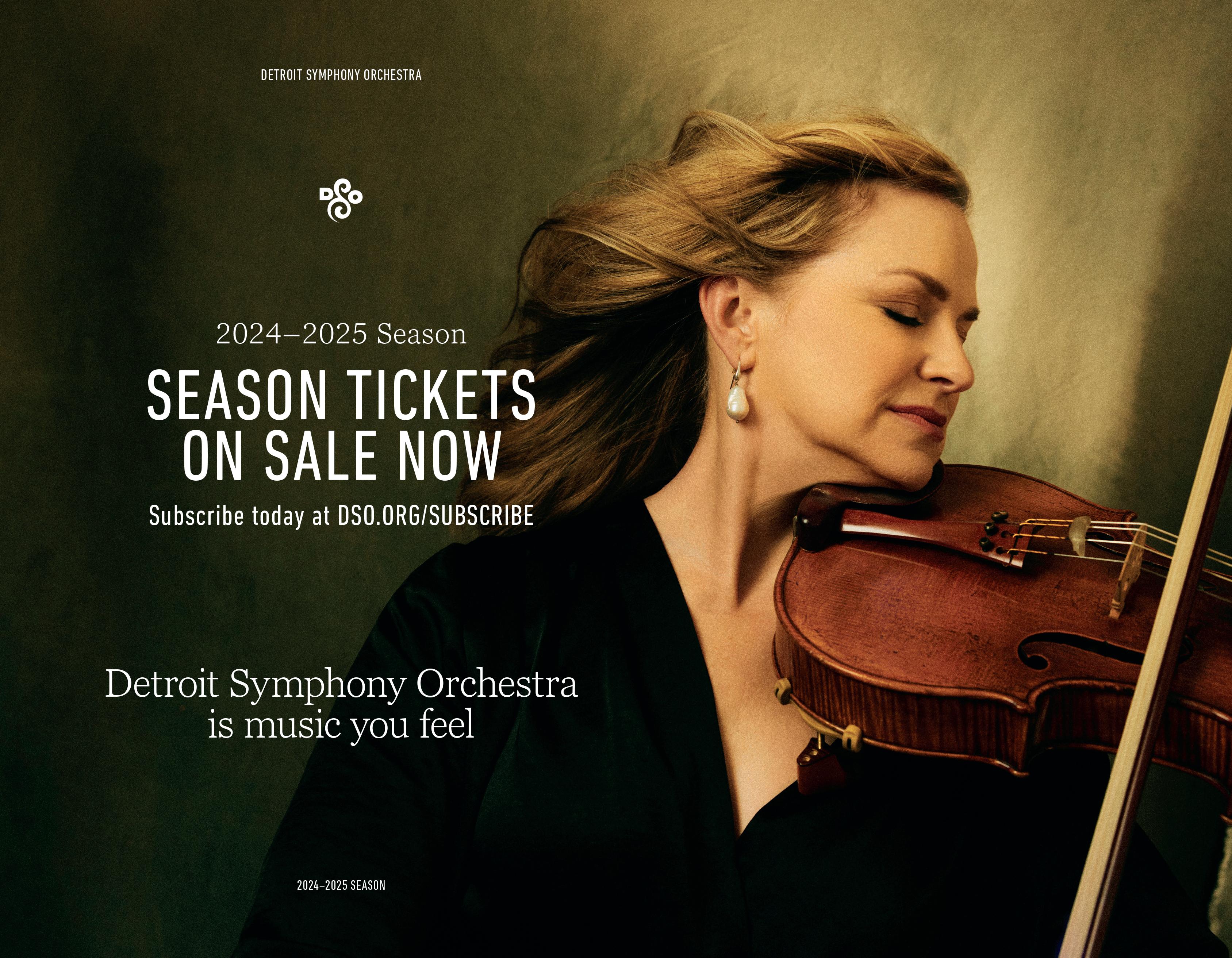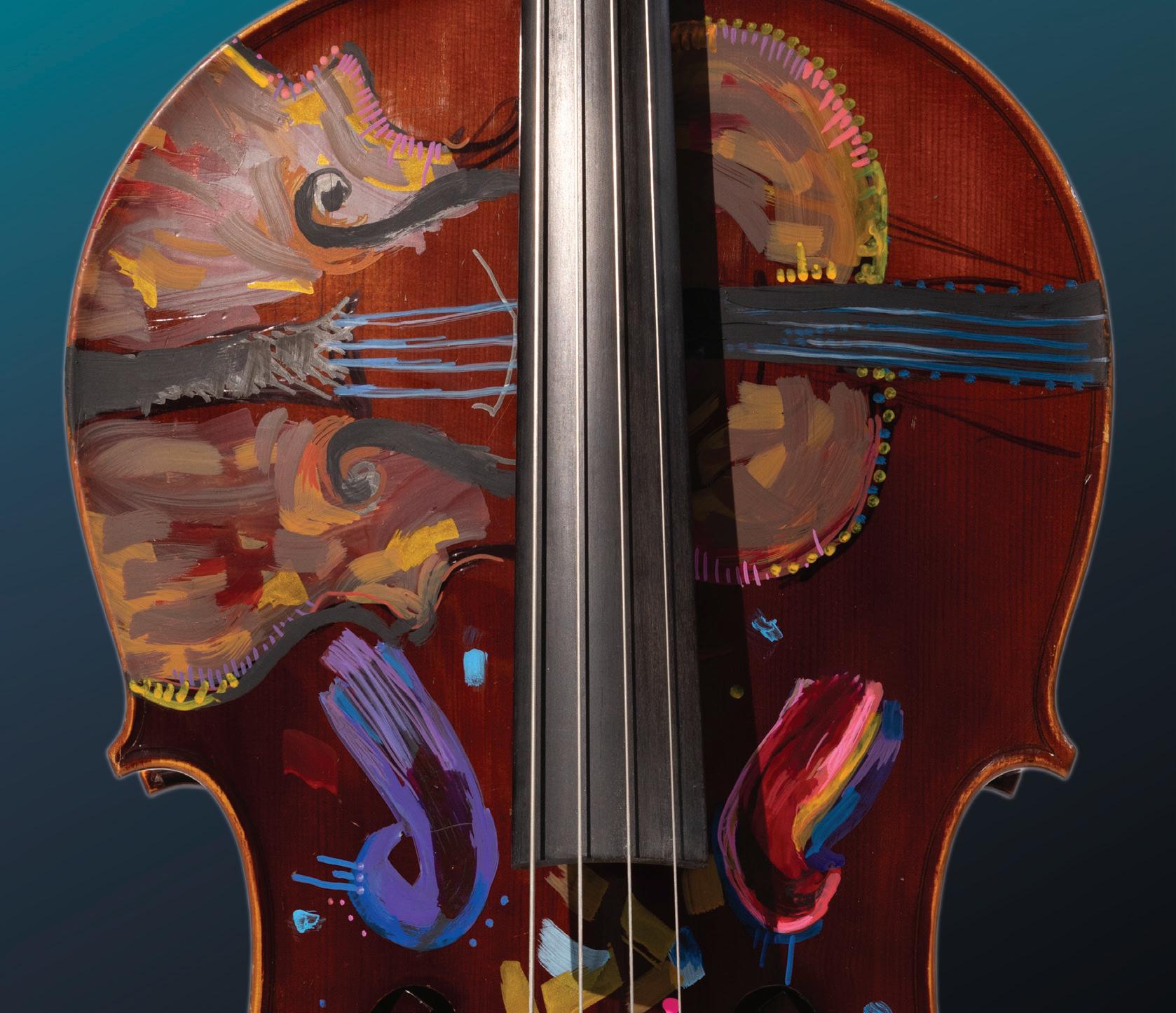
Where Great Music Comes to Play Major support provided by: TM Creative Connections JUNE 8 - 22, 2024
31 S t Sea S o N
Sound Medicine by Sabrina Nelson

Welcome to the 2024 Great Lakes Chamber Music Festival!
Collaboration is the essence of chamber music and has been at the center of my musical life since I was a child, reading sonatas and four-hands music with my parents and brother at our home in Wales. In this year’s Festival, which we have called “Creative Connections,” I wanted to explore the myriad of different ways in which musicians collaborate, influence and inspire each other.
In a festival which spans works from Bach to the present day, we will hear how composers and performers have reached across generations and even centuries to fuel and enrich their creativity. For this festival, my tenth as Artistic Director, I have been influenced more than ever by suggestions from our extraordinary roster of artists. Every one of these outstanding musicians has contributed personally to the programming you will experience throughout the Festival. I am deeply grateful for the way their inventive and sometimes unexpected ideas have made these concerts into such a rich and diverse mix of genres, challenging me to create a menu of music that is perhaps bolder and more contrasting than ever before.
I can truly say that being connected with the Great Lakes Chamber Music Festival for the last 10 years has been a life-changing experience. It continues to be my privilege and joy to bring great music to you.
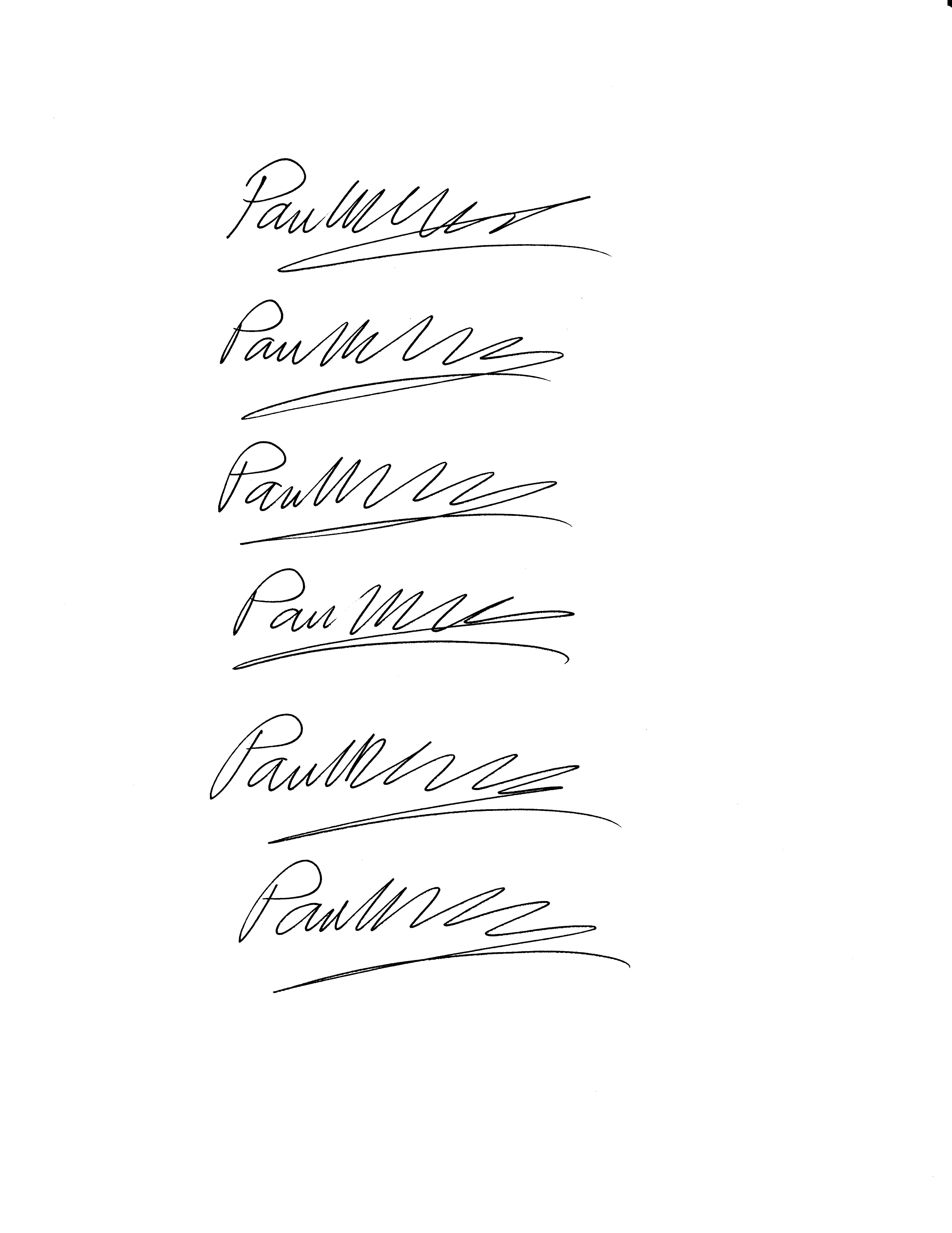
OUR MISSION
The Great Lakes Chamber Music Festival celebrates and advances its art form through extraordinary performance, collaboration and education, inspiring diverse audiences to share in the intimate dialogue that is unique to chamber music.
3 TABLE OF CONTENTS
WELCOME
Welcome ............................................................................ 3 Festival Leadership 4 2024 Sponsors | About the Cover ................................... 5 Saturday, June 8, 2024 ..................................................... 6 Sunday, June 9, 2024 ........................................................ 8 Tuesday, June 11, 2024 ................................................... 10 Wednesday, June 12, 2024 12 Thursday, June 13, 2024 .................................................. 14 Friday, June 14, 2024 ....................................................... 16 Saturday, June 15, 2024 ................................................. 19 Sunday, June 16, 2024 .................................................... 22 Tuesday, June 18, 2024 ................................................... 22 Wednesday, June 19, 2024 ............................................ 24 Thursday, June 20, 2024 .................................................. 24 Friday, June 21, 2024 ....................................................... 27 Saturday, June 22, 2024 ................................................. 36 Community Engagement | Artistic Encounters ........... 38 Festival Artists .................................................................. 40 Shouse Institute ................................................................ 50 Living Composers ............................................................ 52 Ways to Give .................................................................... 54 Ticket Sales | FAQ ........................................................... 55 Reserve Funds .................................................................. 56 Sponsors & Donors 57
FESTIVAL LEADERSHIP
ARTISTIC DIRECTOR
Paul Watkins
ARTISTIC DIRECTOR EMERITUS
James Tocco
SHOUSE INSTITUTE DIRECTOR
Philip Setzer
CHAIRS
Virginia & Michael Geheb, Board Chairs
Marguerite Munson Lentz
Janelle McCammon & Raymond Rosenfeld
BOARD OF DIRECTORS
Kathleen Block
Nicole Braddock
Cathleen Corken
Christine Goerke
Robert D. Heuer
Judith Greenstone Miller
Gail & Ira Mondry
Bridget & Michael Morin
Frederick Morsches & Kareem George
Sandra & Claude Reitelman
Randolph Schein
Lauren Smith
Jill & Steven Stone
Rev. Msgr. Anthony Tocco
Michael Turala
Gwen & S. Evan Weiner
EX-OFFICIO MEMBERS
Fr. Mark Brauer
Mitchell Garcia
Cantor Rachel Gottlieb Kalmowitz
Rabbi Mark Miller
Maury Okun
TRUSTEE ADVISORY COMMITTEE
Cecilia Benner
Linda & Maurice Binkow
Cindy & Harold Daitch
Lillian Dean
Nathalie Doucet
Afa Dworkin
Adrienne & Herschel Fink
Jackie Paige-Fischer & David Fischer
Barbara & Paul Goodman
Barbara Heller
Fay B. Herman
William Hulsker & Aris Urbanes
Rayna Kogan
Yuki Mack
Martha Pleiss
Kristin Ross
Franziska Schoenfeld
Marc A. Schwartz
Josette Silver
Isabel & Lawrence Smith
Kimberley & Victor Talia
James Tocco
Beverly & Barry Williams
STAFF
Administration
Maury Okun, President & CEO
Jennifer Laredo Watkins, Director of Artistic Planning
Community Engagement
Jainelle Robinson, PR/Community Engagement Officer
Development
Jocelyn Conselva, Director of Development
Gramm Drennen, Patron Engagement Associate
Priya Mohan, Grants & Communications Manager
Allison Prost, Development Associate
Marketing
Bridget Favre, Director of Marketing
Layla Blahnik-Thoune, Multimedia Marketing Associate
Lauren Cichocki, Marketing Associate
Sabrina Rosneck, Marketing Associate
Logan Gossiaux, Arts Administration Intern
Finance
Triet Huynh, Controller
Phuong Huynh, Finance Assistant
Operations
Chloe Tooson, Artistic Operations Manager
Lane Warren, Arts Administration Associate
Madi LaJoice, Production & Artistic Operations Intern
FOUNDING MEMBERS
Wendy & Howard Allenberg
Kathleen & Joseph Antonini
Toni & Corrado Bartoli
Margaret & William Beauregard
Nancy & Lee Browning
Nancy & Christopher Chaput
Julie & Peter Cummings
Aviva & Dean Friedman
Patricia & Robert Galacz
Rose & Joseph Genovesi
Elizabeth & James Graham
Susan & Graham Hartrick
Linda & Arnold Jacob
Rosemary Joliat
Penni & Larry LaBute
Emma & Michael Minasian
Beverly & Thomas Moore
Dolores & Michael Mutchler
Nancy & James Olin
Helen & Leo Peterson
Marianne & Alan Schwartz
Leslie Slatkin
Sandra & William Slowey
Wilda Tiffany
Rev. Msgr. Anthony Tocco
Debbie & John Tocco
Georgia & Gerald Valente
Thelma & Ganesh Vattyham
Nancy & Robert Vlasic
Gwen & S. Evan Weiner
Barbara & Gary Welsh
SPECIAL THANKS TO
Lynne Dorando Hans, Graphic Design
Ty Bouque, Program Notes
4
THANK YOU TO OUR SPONSORS AND FUNDERS OF THE 2024 GREAT LAKES CHAMBER MUSIC FESTIVAL




SABRINA NELSON: SOUND MEDICINE
Artist Statement: Creative Connections
Sabrina Nelson's Sound Medicine delves into the profound connection between spirit, motion, and intimacy within the realm of healing. Influenced by Yoruba Religion, alongside Eastern and African philosophies, her multidimensional approach transcends traditional boundaries, encompassing painting, sculpture, objects, performance, and installations.
With over 35 years of professional experience and a dedication to education, Sabrina aims to inspire and empower others through her art. As a studio art teacher at the Detroit Institute of Arts and a staff member at the College for Creative Studies, she instills in her students the belief that art is not only a creative outlet but also a tool for healing and transformation.
Through Sound Medicine, viewers are invited to contemplate the innate power within themselves and their communities to heal. Each stroke of the brush, or stroke of the bow, serves as a reminder of the abundant connections available to us for healing—resources found within ourselves, each other, and the natural world.

TY BOUQUE: PROGRAM NOTES
Ty Bouque writes about opera: its slippery histories, its sensual bodies, and the work of mourning for a dead genre. Writing can be found in VAN Magazine, TEMPO, Opera News, in the liners of Huddersfield Contemporary Records, in a forthcoming book from Lyrebird Press, and, less formally, on Substack.
Elsewhere, Ty sings as one-fourth of the new music quartet Loadbang, as well as in various solo, ensemble, and opera configurations around the world. www.tybouque.com
5 2024 SPONSORS & FUNDERS
ABOUT THE COVER TM
Wilda C. Tiffany Trust
Burton A. Zipser & Sandra D. Zipser Foundation
Mary Thompson Foundation
Maxine & Stuart Frankel Foundation
Lula Wilson Trust
Phillip & Elizabeth Filmer Memorial Charitable Trust
SATURDAY, JUNE 8 | 7:30 PM
FESTIVAL IN RESIDENCE: ANN ARBOR
Kerrytown Concert House
Sponsored by Pearl Planning
LINDA LEE, piano*
MINKYUNG LEE, violin*
TAI MURRAY, violin
MATTHEW MCDOWELL, viola*
JENNY BAHK, cello*
PAUL WATKINS, cello
PROGRAM
*Member of the Amnis Piano Quartet
Han Lash Sonata for Violin and Piano (b. 1981) Movement I Murray, L. Lee
Anton Arensky String Quartet No. 2 in A minor, Op. 35 (1861-1905)
Moderato
Variations on a theme of Tchaikovsky. Moderato
Finale: Andante sostenuto - Allegro moderato
M. Lee, McDowell, Bahk, Watkins INTERMISSION
Robert Schumann Piano Quintet in E-flat major, Op. 44 (1810-56) Allegro brillante
In modo d’una Marcia. Un poco largamente
Scherzo: Molto vivace
Allegro ma non troppo Murray, Amnis Piano Quartet
PROGRAM NOTES
Tonight’s program is something of a prologue, a spell for the coming. Inaugurating the overarching theme of our 2024 festival, all three works tonight owe huge debts to their historical connections: they are bound—by codes of articulation, means of construction, and aesthetic inheritances—to a past whose models and methods guide them into new territory. Classical music is first and foremost a thinking art: it critiques, corrects, confirms, and cohabitates with the body of work that takes its name, casting itself always in orientation to the ideals of its past and present. When we hear any one iteration, we are at the same time attending to the process by which an artist orients their selfhood in relation to the baggage of history. So in the
spirit of the two weeks before us, I thought we might turn over four of the major areas of inquiry that govern the festival’s programming—genre, form, source, and sociality—to better understand (a kind of invocation) how classical music thinks about itself.
[Genre]
We have before us three staples of canonic genre: the sonata, the quartet, and the quintet. But reality is never that simple. One is an archaism, one a subversion, and the other an act of invention, though they all parade as self-evident. Which is to say that “genre” is never a given; it’s what you do with your medium that counts.
To call a work “Sonata for Violin and Piano” in the 21st century is an intentional and risky take-up of the mantle. But Han Lash knows the consequences full well. Our 2024 composer-in-residence has always written music as a way of grappling with classical music’s past, and tonight’s sonata is no exception. Borrowing wholesale from a long legacy of instrument and piano duos, the work mobilizes an outdated genre as a means for thinking about how filling these old containers with new language reveals the strange behaviors of both.
Arensky pulls the subversive move of scoring the string quartet not, as is commonly the case, with double violins, but with double cellos instead. The nod is to Schubert’s “Cello quintet,” so-called for the same reason, but the result—a warm and heavy blanket of sound—is a means to end: a work of mourning is better weighted in the low register.
And Schumann, too, deploys an odd (for its time) orchestration. Before his quintet (finished in 1842, his self-professed “Year of Chamber Music”) the standard scoring was piano, violin, viola, cello, and bass. Schumann, however, who had spent the better part of the year writing three string quartets, simply opted to keep that format going. Marrying piano with the quartet proved endlessly effective: the large body of repertoire for the latter set up more contrasting possibilities of social interplay, while the tip to higher registers permitted greater nuance and variation in melodic expression, ushering in a medium custom-built for the priorities of Romanticism. Genre is only ever generic, and the best works know how to upend those conventions in search of fresh solutions to the problem of articulating something specific through the general.
[Form]
We’ll talk about form a lot over the next two weeks. When we do, it will almost always be in reference to music’s structuring of experience in time: how details at the local level—notes, rhythms, melodies, harmonies—play out in contingency with global or architectural organization—sections, passages, or movements. What we’ll find—and this is especially true tonight—is that no work ever articulates a “perfect” formal model: there is no Urtext or diagram-work for a sonata or a theme-andvariations. Forms, even the most established of them, are just ideas of relation whose rules and regulations have to be recast with each new work to accommodate the idiosyncratic needs of the material.
Take the final movement of tonight’s Schumann Quintet. It is, by all accounts, a sonata form, a historical model in which two disparate themes enter into a process of forced reconciliation. But Schumann—who, across his corpus, struggled hard with ensemble sonata forms—pulls some lengthy tricks to make it work. Despite an
6 WEEK ONE | JUNE 8
ostensibly E-flat major centrality, it will take him almost 175 bars and three—rather than two—themes to get there. Having found the center at last, the music mounts a breathtaking coup d’état and throws in an extra fourth theme, right at the end. It is only having passed through the extreme limits of material that the music arrives at its final fugue where, after traveling as far away from home as one can get, the first theme returns in blazing glory to the key where it belongs. It is a deeply unconventional sonata that breaks almost every “rule” of the game; but it is those breakages and how they’re handled that make it so recognizably Schumann.
Form is a slippery subject, one we’ll continue to pick at as the weeks go on. Here it is enough to say that form is never cut and dry. It is the space in which composers find personal solutions for the problem of articulating music in changing contexts across large swaths of time: there is always active play involved in that discovery.
[Source]
The danger of putting this much classical music in the same, confined space is that it reveals how many of these works owe ideas to their historical companions. Arensky’s second quartet, for instance, is saturated by a second, more famous composer. Belonging to a long Russian tradition of tribute pieces written on the death of a colleague, the Arensky is, both in material as well as bent, an homage to his friend Tchaikovsky. Not only does the central movement lift directly from Tchaikovsky’s song “Legend,” it also follows Tchaikovsky’s own model of homage: the older composer’s Piano Trio, also in A major, was written in memory of Nikolai Rubinstein. Later, melodies from the Russian Orthodox Mass will weave their way into the texture which, while invoking the two men’s national heritage, also draws a clear lineage with Beethoven: his “Razumovsky” quartets do the same. This is a work bound upon reference and citation, a private letter of mourning and communion.
And though less locally specific, both Lash and Schumann keep constant eyes to prior models. Schumann’s formal ideas owe considerable debt to the string quartets of Beethoven (specifically the ninth, from the same Opus 59 set that Arensky so admired). So considerable are the shared ideas that the Schumann scholar Donald Tovey went so far as to say the scherzo “might almost have come [directly] from Beethoven.” And the funeral march in the quintet’s second movement—one of the work’s most famous and arresting passages—is an explicit citation of Schubert’s Piano Trio No. 2, which used the same device (in the same key no less) fifteen years before. Lash, meanwhile, sources the very language of the genre. Endless series of chromatic suspensions, expressive leaps, and fleeting but recognizable harmonies are, like found artifacts in an archeological dig, mobilized to study how the grammar of our past is implicated in the sensibility of our present. The “source” for the sonata is the thinking syntax of Western classical music itself.
[Sociality]
Finally, however briefly, it’s worth remembering that music never takes place in a vacuum. Written by people for people, the ethical codes of care and intentionality that govern any social interaction are at play here as well. In the writing of music for performance, what is first being considered is not ideas or instruments but feeling, thinking bodies (often the original bodies were beloved; Schumann’s piano part was written for his wife, Clara). In each of the pieces tonight, we’ll hear music concerned first and foremost with protecting the avenues of emotional, physical, and intellectual exchange along which colleagues become friends and friends become family: and that is what chamber music is really about, in the end. © Ty Bouque 2024
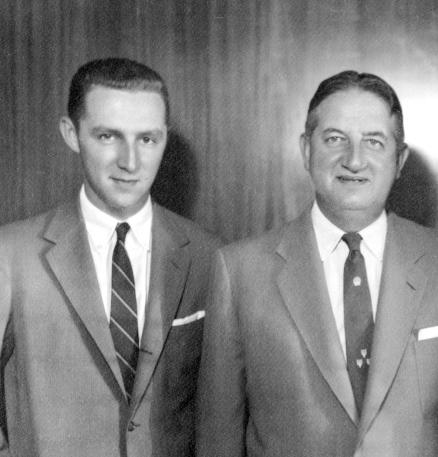

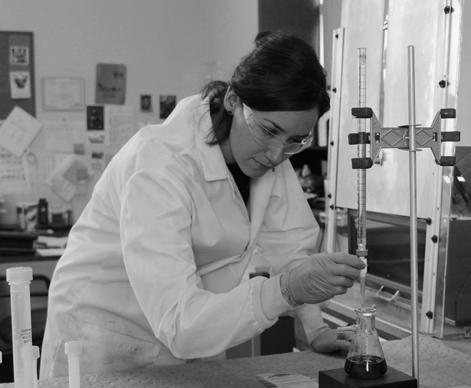





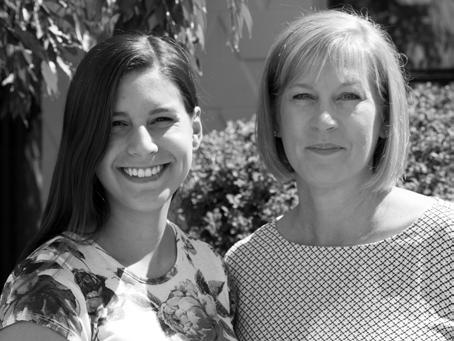

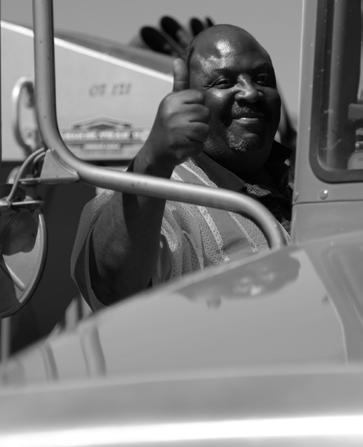

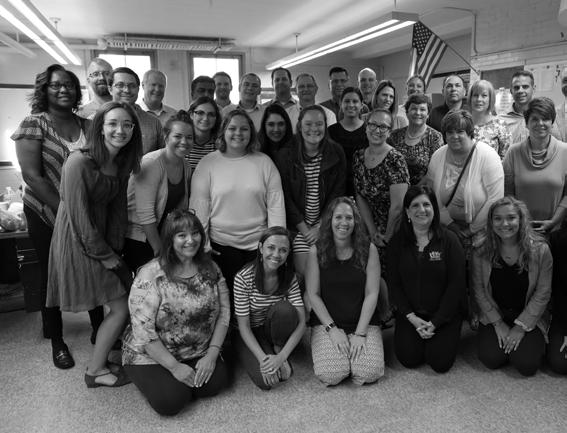





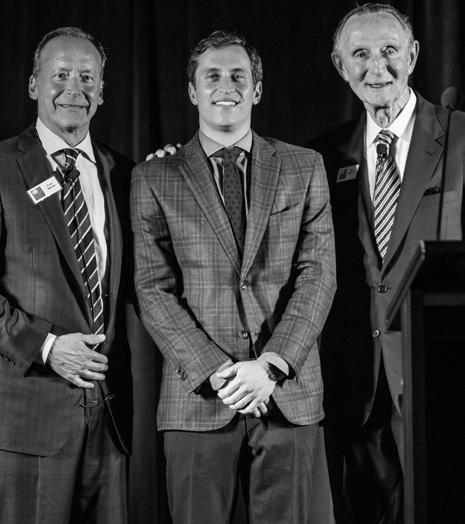
The Levy Group of Companies celebrates the Chamber’s mission of bringing together the world’s most celebrated artists to deliver extraordinary musical performances and experiences for all.

Thank you for your commitment to an inclusive and welcoming culture where differences are valued so that the community may experience these outstanding artists performing chamber music at its best!
WEEK ONE | JUNE 8
SUNDAY, JUNE 9 | 5 PM
OPENING NIGHT: THE CREATIVE ESSENCE
Seligman Performing Arts Center
Sponsored by Aviva & Dean Friedman
LEILA JOSEFOWICZ, violin
PAUL WATKINS, conductor
DETROIT CHAMBER WINDS & STRINGS
HAI XIN WU, violin
MINGZHAO ZHUO, violin
MATT ALBERT, viola
DAVID LEDOUX, cello
KEVIN BROWN, bass
NANCY STAGNITTA, flute
MERIDETH HITE ESTEVEZ, oboe
PROGRAM
SANDY JACKSON, clarinet
JACK WALTERS, clarinet
CORNELIA SOMMER, bassoon
KRISTI CRAGO, horn
JOHANNA YARBROUGH, horn
ROBERT WHITE, trumpet
Richard Wagner Siegfried Idyll, WWV 103 (1813-83) Detroit Chamber Winds & Strings, Watkins
Benjamin Britten Sinfonietta, Op. 1 (1913-76) Poco presto ed agitato
Variations
Tarantella
Detroit Chamber Winds & Strings, Watkins INTERMISSION
Béla Bartók Violin Concerto No. 2, BB 117, Sz.112 (1881-1945) Allegro non troppo
Andante tranquillo
Allegro molto
Josefowicz, Detroit Chamber Winds & Strings, Watkins
OPENING NIGHT DINNER
Join the artists after the performance for our Opening Night Dinner, kicking off the 2024 Festival. Catered by Plum Market.
Call 248-559-2097 for more information.
Donation to attend is $100 per person.
AN INTRODUCTION TO THE PROGRAM
It is a festival of doors. Windows too. Not to mention all manner of crevices, vents and cracks, joints, seams, sutures, little ducts and drafty tunnels down which music whispers to itself across the centuries.
Creative Connections: connect, from the assimilated Latin com+nectare, literally to bind together. If the task of the composer is to erect a world from sound, ours is to find the portals that hinge between their realms.
So: let’s crack the doors a bit, and see just what slips through. © Ty Bouque 2024
PROGRAM NOTES
We begin on a staircase. It is Christmas morning, 1870, and Cosima Wagner wakes at 7:00 AM to music. Confined by the narrow red-carpet stairway that wound through the center of the little villa in Tribschen, 15 musicians had tiptoed in at sunrise to surprise Wagner’s soon-to-be-legal wife with a musical tribute on her birthday. For a man better recognized by his egomania, it is a rare gesture of selflessness, and Cosima’s diary records something of her rapture:
When I woke up I heard a sound, it grew ever louder, I could no longer imagine myself in a dream, music was sounding, and what music! […] I was in tears, but so, too, was the whole household; R. had set up his orchestra on the stairs and thus consecrated our Tribschen forever!
The Siegfried Idyll is thus a love letter first, a private communion between two souls that was never meant to be heard by others (it was only sold off when the couple hit financial straits in 1877; even acts of love can be given a price if necessary).
The piece stands as a document to what Wagner called the happiest year of his existence: “he [has] unconsciously woven our whole life into it,” Cosima fawned. And though much of the music was later repurposed for the final duet of his opera Siegfried—prompting the title change from Tribschen Idyll to Siegfried Idyll—the music retained its intimate significance for the pair: Siegfried was also the name given to their only son, born in June of that same happy year, whose arrival is preserved in the music’s central swells.
Performance Sponsors
Bartók Violin Concerto | Linda & Maurice Binkow
But it is also a document to perceived inadequacy. The symphonic form weighed heavily on Richard Wagner. His intense veneration of Beethoven meant he prized the symphony above all, and his inability to produce one of personal satisfaction was a constant source of anxiety. Even on his deathbed, he clung to the dream
8 WEEK ONE | JUNE 9
of someday crafting a symphony where all themes would flow together in a long unbroken phrase. He never did write that work. And so the foreshortened Idyll is as close as we have to a Wagner symphony: it testifies to a vision of music much broader than it contains, like a small sliver of an imagined landscape that stretches beyond its borders into infinity.
Like Wagner, Benjamin Britten endured a fraught and often volatile relationship with symphonic form. We are in 1932 now, change is heavy in the air: Arnold Schoenberg has gone public with his method of organizing twelve-tone music, and it sends shockwaves through music students around the globe. At a time when the dominant fashion in England is still pastoral grandeur, Britten, an 18-year-old student at the Royal College of Music, becomes fixated on an Austrian’s quest for total formal unity. The Sinfonietta, completed in just three short weeks over the summer of 1932, is his private form of rebellion. “It was a struggle away from everything Vaughan Williams seemed to stand for,” Britten later admitted, and by Vaughan Williams, he meant that distinctly English incarnation of the Germanic symphonic model: fast movement here, slow movement here, insert, copy, paste. Britten, even at that early stage, was always a structuralist at heart; the inherited architecture of the classical symphony was only getting in his way.
An Opus One, however, is a volatile and loaded thing, and Britten’s Sinfonietta is no exception. That it has survived this long is not so much a measure of its achievement as its ideal: it is the first work where we can see the adult Britten stretching his legs. Taking Schoenberg’s Chamber Symphony as a model—he also borrows its instrumentation, minus doublings—the work is a twenty-minute attempt at a musical form which arises solely from the organic metabolism of its materials (which is to say: without the delineated boundaries of the standard partite symphony; each of the three movements elides with the next). In this regard, it fails. What begins as distinctly Viennese, with all these little cells of material sprawling across the canvas, arrives in the final movement at the sort of recapitulating dance we’ve come to expect of Britten.
And yet the pair of brazen fifths that close the Sinfonietta still manage to feel so fully satisfying perhaps not because they’re musically earned—the form is tenuous, uncontrolled—but because they’re the symbolic result of Britten sloughing off his borrowed clothes. The work’s great joy today is hearing the adult Benjamin Britten peeking out between the sometimes-clumsy folds. Peter Grimes’ tolling steeple, Screw’s terse austerity, the Requiem’s brooding majesty flash in an instant before our eyes. The Sinfonietta, like Wagner’s Idyll, is a dream of music yet unwritten, echoes of the promise of what’s to come.
And Béla Bartók, too, found himself at odds with a borrowed form. Flash forward five more years to 1937, and the Hungarian maverick is just unpacking his bags from a research trip to Turkey when his fellow countryman Zoltán Székely—a violinist and composer in his own right—is announced as the concertmaster-to-be of Amsterdam’s Concertgebouw Orchestra. To mark his proper debut, Székely wants a new concerto; Bartók, twenty years his senior and an early advocate, is the obvious choice.
When asked for a concerto, Bartók immediately suggests an austere work of modernist invention: like Wagner and Britten, his dream is a test of movement-less variation, one grand unbroken string spinning a single idea to infinity. To which Székely says: no. He wants a classic, something to join the repertory, a three-movement showpiece to rival the best of them. And Bartók, acknowledging the concerto was for Székeley and not for himself, concedes—but not without a few tricks up his sleeve.
The work, true to promise, is dutifully divided into fast-slow-fast, but at every turn remains overloaded with the variation-structures of its original dream. The first movement rhapsodizes its central theme to nauseating limits, pushing and pulling the gravity around it into a kaleidoscope of temporal friction. The same theme is then picked up in the final movement, which weaves from it a tapestry of dizzying permutations. (Here, as in the Britten, Schoenberg’s influence rears its head: though resistant to serial purity, twelve-tone melodies abound.) And then the middle movement is what Bartók had desired all along: a set of six variations on a lonely, simple theme whose plaintive urgency is the product of nothing less than rigor. The work unifies itself by the idea of endless difference—even with the movement breaks left in.
All three works tonight nestle somewhere in the thresholds between inherited model and personal dream, social container and artistic conception, practical limitation and utopian ideal. They speak to a not-quite-yetness, a state of becoming whose incompleteness is, paradoxically, what makes them feel so full. This reaching out is what we might call their essence: from Latin esse, “to be,” the very thing that the thing is. Blanchot, writing in The Space of Literature, admits that “the work—the work of art, the literary work—is neither finished or unfinished: it is.” Tonight, the Creative Essence will be revealed in the gap between imagination and achievement, because there is no such thing as musical perfection: only the endless work of reaching towards the impossible. © Ty Bouque 2024

WEEK ONE
JUNE
|
9
TUESDAY, JUNE 11 | 7 PM
CONVERSATIONS ACROSS CENTURIES
Temple Beth El
Sponsored by Plante Moran
ANDREW LITTON, piano
LEILA JOSEFOWICZ, violin
TAI MURRAY, violin
PHILIP SETZER, violin
YVONNE LAM, viola
KATHARINA KANG LITTON, viola
PETER WILEY, cello
ALEXANDER KINMONTH, oboe
PROGRAM
Marc Neikrug Oboe Quartet in Ten Parts (2022) (b. 1946) Kinmonth, Murray, Lam, Wiley
Commissioned by Great Lakes Chamber Music Festival, Chamber Music Northwest and Music from Angel Fire
PROGRAM NOTES
It’s often said that chamber music is the medium closest to the dinner table. In small settings, we say that instruments talk, they speak to one another like family: as in we can talk about anything and pick up where we left off and finishing each other’s sentences, but also sometimes talking over one another or agreeing to disagree or pushing buttons. So it’s no accident that chamber music has historically been music for the living room. Salons and foyer recitals were spaces of intimate exchange where music served as a kind of audible extension of lifelong companionships: think of young Wolfgang and Nannerl Mozart playing trios with their father Leopold, or Clara and Robert Schumann, reading duets together. The music written to fill the chamber—in its archaic form, that word means the privacy of a bedroom—is first a testament to the invisible web of memories, personalities, and relationships tying together the people who are playing it. We, the audience, are like voyeurs, eavesdropping on a private chat between loved ones. (The root of the word converse means the familial, after all.)
Tonight, we’ll hear that, though the vocabulary and content of those “chamber conversations” has changed over the centuries, the bedrock of care that defines any surrogate family—the tenderness of parental figures, the jocular gentility underwriting sibling rivalry, the love that makes transparency and exchange possible—is what unifies the genre across time. To make music together remains among the most vulnerable of shared activities, and the best chamber music creates space for individuals to enter into dynamics of compassion and trust, whereby families—with all their frustration, pain, and joy—are knit in real time.
INTERMISSION
Johannes Brahms Piano Quintet in F minor, Op. 34 (1833-97) Allegro non troppo Andante, un poco Adagio Scherzo: Allegro
Finale: Poco sostenuto – Allegro non troppo
A. Litton, Setzer, Josefowicz, K. Litton, Wiley
Performance Sponsors
Neikrug Oboe Quartet | The Maxine & Stuart Frankel Foundation
Marc Neikrug is no stranger to the familial in music. The child of two distinguished cellists, he spent his earliest years listening to his mother compose at the piano, and there was a constant rotating door of musicians in his family’s New York apartment. His later career—he’s best known as Pinchas Zukerman’s pianist of preference—was dominated by the give-and-take of duo recitals, and his compositional sensibilities come predisposed to how musicians locate themselves in social relation to one another. He is, almost by birth, a musician’s musician: his music thinks first about that sociality.
Tonight’s oboe quartet works like ten versions of the same conversation among family. Think of it like a hanging mobile, variations on the same general shape all suspended in close proximity. Each part takes roughly the same structure: the wedge, or <>. They start from a single point (usually a sole note or a sparse chord), spiral outward in both chromatic directions until achieving maximum density, then cleave a path through the bramble back towards a solitary exit. Within that wedge, however, the roles played by individual instruments can vary drastically. Who starts, who accords, who resists, who, having heard the first note, sets off a “conversational tangent” that sends the music wheeling on its trajectory of expansion—these roles shift with every iteration. The wedge is a kind of common ground on which the internal dynamics of conversational space are subject to constant renegotiation, and by the end, the four have exhausted every possible pathway that the shape can take. But that exhaustion never sours into resentment: on the contrary, the four grow closer and more comfortable with every variation. Effortless conversation, as anyone can tell you, takes practice.
And if we zoom out a bit, the quartet as a whole forms a similar cross-movement diamond, announced by a return of the opening material in the eleventh hour of its final movement. Except the knotty byways we’ve taken to get there have
10 WEEK ONE | JUNE 11
fundamentally changed the group along the way. The lonely oboe note on which the work sets out is conspicuously absent from the final chord, which instead comprises its three closest neighbors. We can “hear” the perfect closure of the circle only in its failure to arrive, a ghostly kind of echo: the ensemble, though the same as it was when it began, is different for having traveled this far together. And is conversation with loved ones not like that too? After a certain period, one no longer needs the promise of clean resolution, of every thread tied neatly; coexistence is synonymous with change, and transformation is not only permissible here but healthy: “I love you enough to change alongside you.”
Brahms’ Piano Quintet, meanwhile, is a kind of mixed family, a second marriage maybe, a group of people who know what they want only after having had time to go out into the world to explore other less-satisfying options. The work began life as a string quartet, finished in 1862 and later destroyed by its composer (Brahms was in the habit of doing this, to the endless frustration of musicologists). Then it became a piano duo sonata, published as Opus 34b and premiered by Brahms himself alongside Karl Tausig. It was only after these two separate versions had come and gone did Brahms opt to bring the two together, following the formula laid out by Robert Schumann’s Quintet twenty years earlier, and the result has been the genre’s enduring masterpiece.
The beauty of this mixed family is how audible traces of their individual pasts are brought to the table not as points of unspoken conflict but valued viewpoints. The piano part slips in and out of its Opus 34b virtuosity, never as a means of dominating the conversation but without abandoning itself totally to secondary accompaniment. The strings move as a unit, they talk like a well-oiled machine with a century of discursive practice, but never at the exclusion of the newcomer. The instruments speak in the dialect of their previous existence, but still listen wholly to what the other has to say: it’s a coupling of individuals who’ve been single for a while and now know what they want to build together.
The key to this in musical terms can be spotted in all the linkages. Brahms—and we’ll see this more clearly in the week to come as we explore his late clarinet works—has a tendency to overlay his ideas like tectonic plates, one sliding seamlessly beneath the rim of the other. The result is that tension doesn’t built to hard, structural apexes or ultimatums but is instead continually stretched and released at the moment of its appearance, like an exercise in patience and trust. For all its musical tension, the Quintet is dominated by a sense that difference is not cause for oppositional rupture but (this is the mixed family part) actually why they speak together so fluidly. Five individuals with varying histories are rarely going to agree, but love knows how to piggy-back, echo, juxtapose, or amplify without needing to prove anyone wrong. Dissonance—especially in the famous chromatic staircase of the final movement—is bargained as the ground and not the earthquake.
In both works tonight, the shared DNA is the ethics of compassion that give chamber music its discursive magic. Instruments here leave space enough to always attend to one another and their needs while maintaining independence in the conversational network, as only the best families—chosen or otherwise—know how. © Ty Bouque 2024
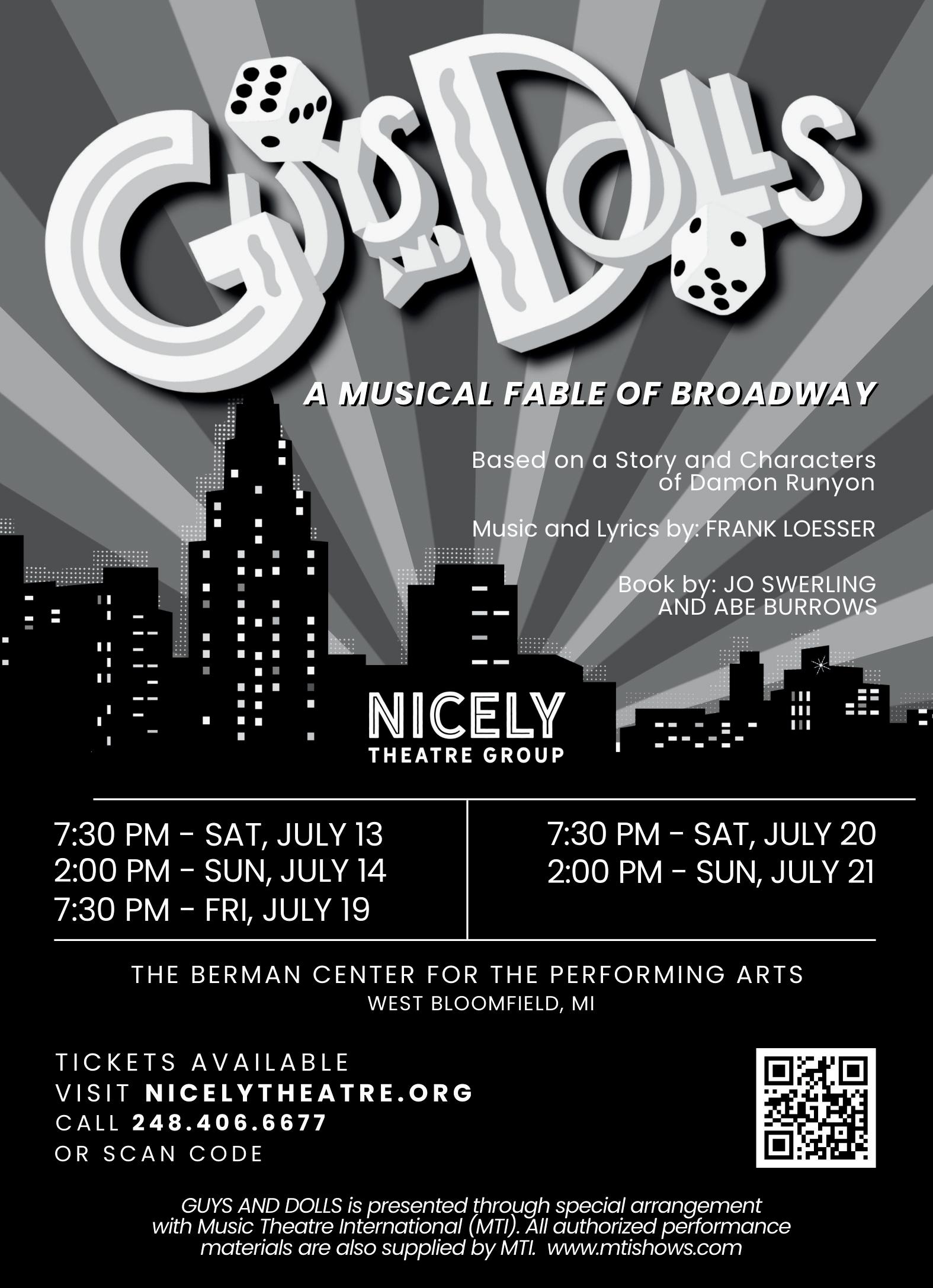
11 WEEK ONE | JUNE 11
WEDNESDAY, JUNE 12 | 7 PM
FESTIVAL IN RESIDENCE: WINDSOR
The Capitol Theatre, Windsor
Sponsored by the Morris & Beverly Baker Foundation
SHAI WOSNER, piano
HESPER QUARTET, Shouse ensemble
PROGRAM
Franz Schubert String Quartet No. 14 in D minor, D. 810, (1797-1828) “Death and the Maiden”
Allegro
Andante con moto
Scherzo: Allegro molto
Presto
Hesper Quartet
INTERMISSION
Edward Elgar Piano Quintet in A minor, Op. 84 (1857-1934)
Moderato - Allegro
Adagio
Andante - Allegro
Wosner, Hesper Quartet
PROGRAM NOTES
Schubert first set Matthias Claudius’ short poem Der Tod und das Mädschen (“Death and the Maiden”) in 1817, in a version for voice and piano. Seven years later—having contracted terminal syphilis in the interim and facing for the first time his own mortality—the 27-year-old pilfered his piano part for a new string quartet, transforming the razor-thin tension of that earlier gallows march into the second of four movements. As the name suggests, his new quartet grapples with the delirious melancholy that accompanies the promise of death. It throws itself headlong towards the specter of bodily destruction, but for all the death-related music in the classical canon, Schubert’s stands out by refusing to be sad. It is a weighty quartet, certainly, and at times almost unbearably terse, but never unremittingly depressive. Death and the Maiden is, first and foremost, strange.
What is often chalked up to syphilitic madness in Schubert’s late work—its extremity, its violent tenor, the almost sadistic levels of play and invention that characterize its transformation of materials, and his frequent disregard for symmetry and regulation— is, I think, better contextualized by a puzzling moment in the Claudius text that nearly stops the poem in its tracks. Take a look at what Death calls the Maiden when he first speaks to her:
The Maiden:
Pass me by! Oh, pass me by! Go, fierce man of bones! I am still young! Go, rather, And do not touch me. And do not touch me.
Death:
Give me your hand, you beautiful and tender form! [Gebild] I am a friend, and come not to punish. Be of good cheer! I am not fierce, Softly shall you sleep in my arms!
Strange, no? Of all the names Death might give to a young woman, he calls her form: “you beautiful and tender form.” The sudden shift to figural abstraction, in a conversation of intimacy and assurance no less, is both troubling and irresistible. It seems to suggest that innocent beauty becomes something Other when proximal to Death. Something formal happens when the threat of extinguishment reaches a steady hand towards that which is not yet corrupted by the world. Tonight’s program asks that question: What becomes of Beauty when Death meets it?
The Romantic ideal of beauty—one to which Schubert absolutely ascribed—is celestial purity assembled through truth: “Truth is beauty, beauty truth,” Keats was writing at the same time. Schubert, meanwhile, is attempting to write a “beautiful truth” of what is first and foremost impure: death by infection, physical corruption, terminability, corporeal ruin. But, still bound by the aesthetic obligations of nineteenth-century Romanticism, he cannot kill beauty, at least not yet. Death the Destroyer—if it wants to be received as truth (as it certainly was for Schubert)—must paradoxically become beauty, must take beauty as a shape for itself, must make beauty a form to be filled.
So Death—that which does harm to living forms—turns around to find harm done to it by Beauty. Death is forced to twist itself into elastic and bulbous knots in an effort
12 WEEK ONE | JUNE 12
to maintain proper aesthetic codes: it cannot adequately articulate the brutality of the thing it wants to say. At the same time, the presence of something so unwieldy as Death in a system of highly controlled articulation warps the Beautiful into something dented, fraught, screaming while it smiles.This interior tension between violence— what is being said—and purity—how it is being said—lends Death and the Maiden its defining balletic grotesquerie: Beauty is indeed the form that Death must take, and both become so strange for that cooperation.
The French novelist Hervé Guibert, writing The Compassion Protocol on the brink of his own death from illness (AIDS) in 1993, described something of the same alienating flight into polarity: “I have the feeling I’ve created a work both barbarous and delicate.” Even as Schubert’s final movement whirls ever faster towards its climax, the brutality of terminal acceleration never outpaces the sheer eloquence of its form. It stays this side of madness but only barely, lending the work a twisted and surreal viscerality, at once cruel and cruelly gorgeous.
In Elgar’s Piano Quintet, however, that same notion of conflating death with beauty can be glimpsed not in the music itself but rather by locating the work in aesthetic history writ large. It is 1918. Music is in the midst of its most serious social upheaval in a century, but Edward Elgar, aged patriarch in the English musical landscape, is nowhere to be found. He has fled progressive London for the seclusion of a little hamlet called Fittleworth in West Sussex, a village of just 900 with a church, a school, and a single pub. Away from the city, he completes the final four works of his major output: the Violin Sonata, the String Quartet in E, the Cello Concerto, and the Piano Quintet.
From our vantage point in time, this late work is Elgar in marked retreat. Cast in an unapologetically sentimental vocabulary at a time when the dawning consensus among musical elite was that tonality’s universality and comfort had become untenable, it is an old guard retrenchment that aligns its creator firmly with the past. Of these four major works, however, the Piano Quintet is conspicuous for not totally beginning there. The long first movement warps and bends with uncanny fluidity, juxtaposing eerie, almost modernist sparsity with high-output vigor and dance. (His wife Alice would suggest in her letters that the thicket of barren, scraggly trees near their cottage was the primary inspiration for the movement’s sinuousness.) Teetering between nostalgia and nervousness, we open on an internal battle whose victor is not immediately clear: we can hear Elgar almost think about a more unsettled future.
But by the end of the first, and with each successive movement—the second is a wistful pastoral; the third, a long wind-up to exuberance—the from the promise of any change. The final cadence, jubilant and measured, is the long-awaited sigh of a recusal: Elgar will go no further, and ends by affirming the same values his music has always upheld. And so the Quintet like it floats outside of time. It has a kind of anachronistic estrangement, insisting on a guarantee of beauty that, deep down, it knows is only temporary. This is perhaps what makes the work rather emotional now: its naïveté bespeaks a deep desire for a world no longer possible. It grieves what will inevitably be lost by holding fast to it until the last possible second.
Though tonight’s concert will proceed chronologically, the pair feel curiously out of order. Schubert, seeing death on the horizon, throws himself towards it; Elgar, seeing the same, recoils. For the century dividing them, Death and the Maiden more prophetic of the pair, heraldic in its uncompromising vision of beautiful horror. © Ty Bouque 2024
WEDNESDAY, JUNE 12 | 7:30 PM
TASTING NOTES: FLAVORS OF EUROPE
Mongers’ Provisions - Berkley
Sponsored by Joy & Allan Nachman and Linda Goodman in memory of Dolores Curiel
LEILA JOSEFOWICZ, violin
PAUL WATKINS, cello
PROGRAM
Huw Watkins Sonata for Solo Cello (2022) (b. 1976) Watkins
Matthias Pintscher La Linea Evocativa (2020)
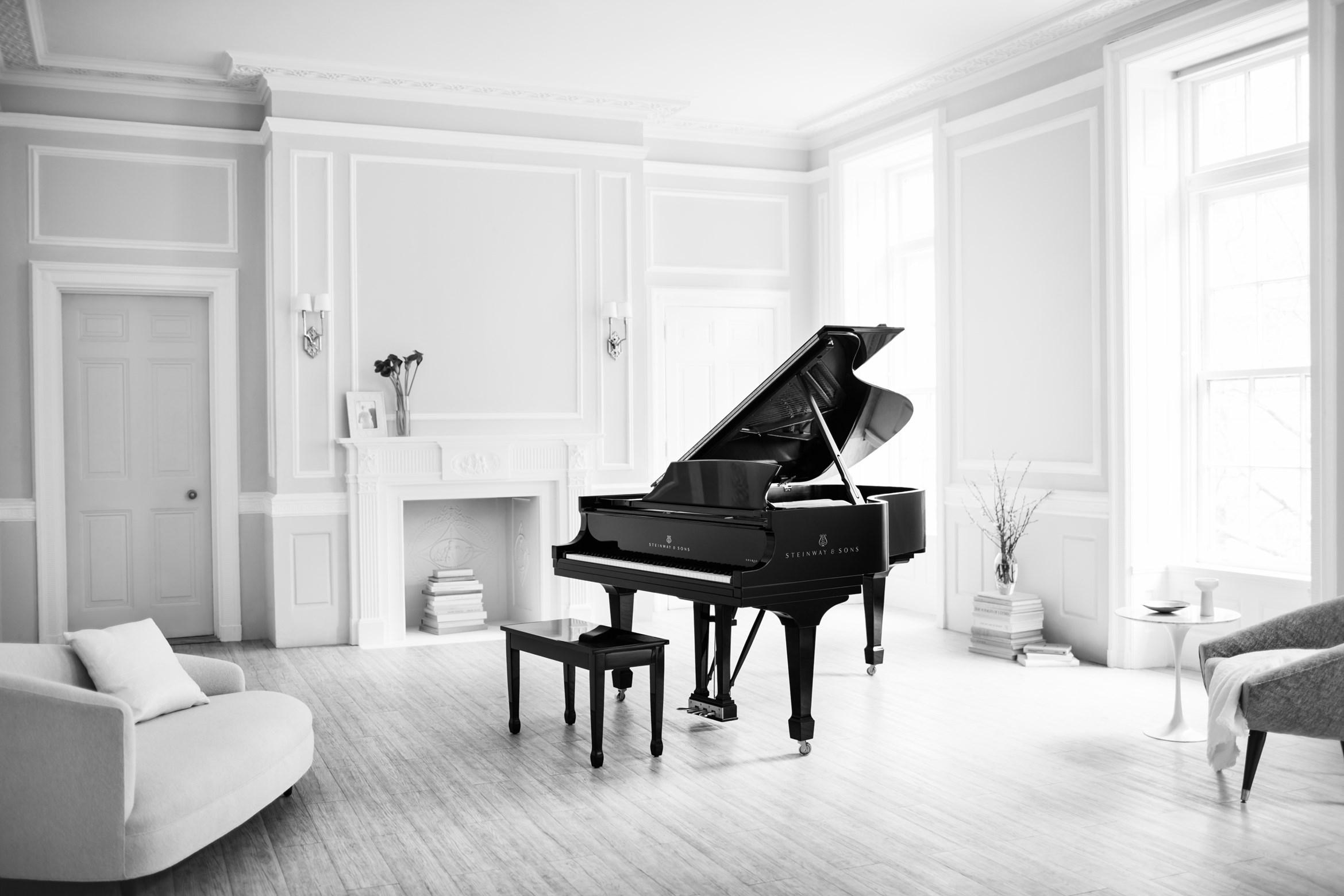

WEEK ONE | JUNE 12
Call 248.560.9200
THURSDAY, JUNE 13 | 7 PM
CROSSING BORDERS
Kirk in the Hills
Sponsored by Marguerite Munson Lentz & David Lentz
ANDREW LITTON, piano
ALVIN WADDLES, piano
KATHARINA KANG LITTON, viola
PAUL WATKINS, cello
MARION HAYDEN, bass
DAVID TAYLOR, drums
TRIO GAIA, Shouse ensemble
PROGRAM
Joseph Haydn Piano Trio in A major, Hob.XV: 18 (1732-1809) Allegro moderato
Andante
Allegro
Trio Gaia
Johannes Brahms Viola Sonata in E-flat major, Op. 120, No. 2 (1833-97) Allegro amabile
Allegro appassionato
Andante con moto — Allegro
K. Litton, A. Litton
INTERMISSION
Claude Bolling Suite for Cello and Jazz Piano Trio (1930-2020) Baroque in Rhythm
Concertante
Galop
Ballade
Romantique
Cello Fan
Watkins, Waddles, Hayden, Taylor
PROGRAM NOTES
In keeping with our festival theme of “that which connects,” doors are exactly what we’re thinking through tonight. The operative word is borders: What does it mean for music to cast itself towards thresholds, limits, demarcations, lines in the sand, any divide separating this from that or there from here? Each work on this program locates a perceived hard boundary—national lines, physical thresholds, intellectual limits, generic divisions—and makes it thin, slippery and permeable like bubble-film. These pieces are snapshots of transition states in a chemical reaction: we meet them in the halfway place.
Franz Joseph Haydn’s move to London in 1791 was a long time coming. Beginning in the early 1780’s, the boy-soprano-turned-composer found a rabid fanbase in urban England, but his financial contract to Hungary’s Prince Nikolaus I prevented him from reaping the social fruits of that celebrity. It was only Nikolaus’ death in 1790, coupled with a standing (not to mention well-padded) invitation from the impresario Johann Peter Salomon, that permitted him to finally make the trek. On New Year’s Day of 1791, Haydn crossed the English Channel from Calais to Dover; it was the first time the 58-year-old had ever seen the ocean.
At this point in the 18th century, London was a cosmopolitan hot spot. Bolstered by Parisians fleeing the Revolution, the perfect storm of talent, population, and cultural investment in new music generated the most robust professional music scene in Europe: London was drowning in virtuosos, and there was a substantial and appreciative audience. Haydn suddenly found himself honorary composer-inresidence of a city eager to push the physical limitations of their instruments, and his music had to adapt to match the moment.
Though written shortly after his return to Hungary in 1793, the Piano Trio in A Major bears all the evidence of the professional changes undergone in those first two London years. The plot-twist callback to development material at the close of the first movement, the extreme filigree of ornamental detail that decorates the melodies of the second, and the deployment of sudden dynamic shifts (facilitated by the introduction of the pianoforte into European musical life only a few years earlier) for drama in the third all demonstrate a composer whose ideas of performer limitations have recently undergone drastic extension. As far as the listener goes, he is still pleasing his new patron, Prince Anton: the dedication to the Princess makes that much obvious, and the work does nothing to break the mold for the listener. But the borders of technical dexterity and imagination to which Haydn’s early work was beholden have now fallen away, and he is offering both trust and physical challenge to his players and blurring another line—between chamber music and concerto—along the way.
Johannes Brahms’ threshold is the most vulnerable and poetic of the night. Premiered in a private performance with the composer at the piano in September of 1894, the Opus 120 was his very last instrumental work, and only two more vocal works precede his death in the spring of 1897. A lifetime of labor at the chamber medium ends here: this is, in many ways, the death of Brahms as we’ve come to know him.
The circumstances of commission are equally remarkable. In 1891, Brahms announced himself publicly retired, feeling he had no more to say in music. It took the playing of clarinet virtuoso Richard Mühlfeld to drag the melancholic master out of his slump and convince him to take the pen back up. The last eleven opuses are dominated by the instrument, and in their few years of shared work, Brahms wrote for Mühlfeld some of the instrument’s most beloved music. (His Clarinet Quintet from the same period can be heard in our concert on June 18th.)
14 WEEK ONE | JUNE 13
These last two sonatas are unlike anything else in music. Brahms is no longer the effusive Romantic he was in his youth; this is late-life writing, devastatingly reserved, that knows how much can be done with how little. The structural relationships between melody and form are the most slippery and idiosyncratic of his career: no hard borders, no sudden changes, all passing as water over rocks. Here, in all these places where musical ideas exit one state towards another, we can hear the poeticism of death’s threshold. There is no sense of failure or of loss in this music, but rather of quietude, of being at peace with final change. The sonatas have the eloquence of a last will and testament, written in steady hand before the final doorway.
In tonight’s performance, the Opus 120 also calls our attention to translation, itself an act of border-crossing that leaves traces of both hemispheres on the object. Brahms himself, shortly after the premiere, arranged the pair of sonatas for viola at Joachim’s behest (and not totally willingly: letters reveal his initial hesitation to do so). A clarinet sonata transformed into a viola sonata is no simple feat. Idiosyncratic instrumental writing requires accounting for the limitations of mechanism: the demands of breath, for instance, differentiate the clarinet from a viola, as do its keys, which make notechanges far easier across extended range. Where the clarinet slithers, liquid and elusive, the viola must start each phrase with a bow-stroke, lending the transcriptions a more rarified and often far more metric quality than the original. But the warmth and woody resonance of that low C string adds a quivering vibration almost like tears, and though the musical material breathes with the capacity of lungs, it here speaks with the infinite delicacy of the hand.
Tonight we’ll hear a viola that still remembers, far in the distance, the clarinet that it once was. A border was crossed, but softly, tenderly, and not without carrying something of the original over with it.
As for Claude Bolling, the borderline is right there in the title: Suite for Cello and Jazz Trio. Bolling, trained first as a jazz pianist and later as a film composer, made his international name in 1975 with a parallel formula, the Suite for Flute and Jazz Piano, written for and recorded alongside Jean-Pierre Rampal. The Columbia record skyrocketed Bolling to a household name and spent ten years on the Billboard Classical Top 40, earning the duo a Grammy nomination along the way and Bolling a whole slew of commissions for blue-chip stars. Tonight’s work, completed in 1984, was written for Yo-Yo Ma.
When anything is crossing over—like we saw in Brahms’ clarinet-to-viola transformation—it’s important to think about fidelity. (It’s no accident that the first album cover for Bolling’s suite featured a cartoon flute and piano smoking sideby-side in bed; the exchange of identity is a fundamentally sensual and intimate act. One is giving of one’s body to the other.) What has made Bolling so popular to listeners on both sides of the exchange is that nothing is misused or appropriated: the suites have the uncanny ability to not just simulate jazz but actualize it without compromising the structural integrity of classical chamber music. It is that rare kind of hybrid in which two presences are not halved, and therefore less, by sharing space, but rather more authentically themselves for their proximity to the Other.
Tonight, in different ways, all three works trace out a liminality of imagination. They situate themselves willingly at borderlines, imagining hybridity, extension, and threshold as the very foundations of their truth. What binds this program is a willingness to think beyond a social delineation towards something utopian, something unknown and invisible in the between. © Ty Bouque 2024

15 WEEK ONE | JUNE 13
FRIDAY, JUNE 14 | 11 AM
YOUTHFUL INSPIRATIONS
Kirk in the Hills
Sponsored by JPMorgan Chase
PHILIP SETZER, violin
KATHARINA KANG LITTON, viola
DILLON SCOTT, viola
PETER WILEY, cello
AMNIS PIANO QUARTET, Shouse ensemble
PROGRAM
Frank Bridge Lament for Two Violas (1879-1941) Litton, Scott
PROGRAM NOTES
This morning marks the first of a pair of programs—tonight is the second—devoted to an excavation of childhood and its memories. Under inquiry here is reflection: at the moment when we, as fully grown adults, turn critically towards our upbringing, do the memories themselves change? What is revealed and what stays hidden? And how does hindsight interrogation help us to better clarify our mature senses of self?
Frequently in music, when we talk about childhood attractions, we default to the loaded language of influence or inspiration. What we often mean by doing so is an imported genetic likeness: we say that Mozart was inspired by Bach as a means of understanding how Mozart’s music inherits—bloodline-style—compositional sensibilities begun before his birth. But, leaping an etymologic step backwards to inspirare, a word originally signifying “the breath of truth given to humanity by a deity,” we would be better suited to think about what Mozart never dared to call his own. Our American sense of casual inspiration falls flat here: Mozart does not just like or pick up a few tricks from or mimic J.S. Bach. He treats it like doctrine, like truth.
J. S. Bach Selection from Six Preludes and Fugues, K.404a (1685-1750)
No. 4 in F major: Prelude (after J.S. Bach BWV 527)
W. A. Mozart & Fugue (after J.S. Bach BWV 1080) (1756-91)
No. 5 in E-flat major: Prelude & Fugue (after J.S. Bach 526)
No. 6 in A-flat major: Prelude - Adagio (W.A. Mozart) & Fugue (after J.S. Bach BWV 882)
Setzer, Litton, Wiley
William Walton Piano Quartet in D minor (1902-83) Allegramente
Allegro scherzando
Andante tranquillo
Allegro molto
Amnis Piano Quartet

Concert to be followed by a Lunch & Learn with oboist and author Merideth Hite Estevez.
The Bach transcriptions—originally keyboard fugues in The Well-Tempered Clavier were made as compositional exercises for parlor gatherings in Vienna, and Mozart even wrote a few Bach-style Preludes to accompany their performance. But Mozart, playful rebel Mozart, does not pull his usual tricks here. He is a studious and detailed observer, attendant to Bach’s decisions in registration and affect with a fidelity and a reverence that he shows to almost nothing else. This is 1782; he is 26, none of his world-shifting operas have been written yet, and, though he’s already internationally famous for an instantly recognizable voice, he clearly still believes he has things to learn from a music he knew almost from birth. In the F Major No. 3, which will be played last in today’s series, we’ll hear a slow Prelude that, though entirely by Mozart, risks absolutely no games: it strives, in every way, to make its namesake proud. All the fugues that crop up in Mozart’s music after this—the end of the Jupiter symphony, most famously—border on a transcendent spirituality which is actually not all that common in Mozart’s largely humanistic output, because the weight of reverence he feels each time that titan is even peripherally invoked is impossible to shoulder. He cannot bring himself to play around with Bach: there is always a distance of god-like childhood idolatry keeping him in line.
But for someone like Frank Bridge, adolescent musical studies come with their own baggage. Bridge floats as a kind of island-figure in British musical history. Situated somewhere between the waves of French impressionism and late German romanticism, the establishment of the English pastoral, and the onslaught of Viennese modernity, he often gets the short end of the stick for not falling evenly into any one school of thought. Apropos the dangers of influence, Bridge is perhaps best known as the private teacher of Benjamin Britten; we know Bridge best for what he influenced, and not the other way around. This is especially hampered by an uncompromising austerity and reserve in Bridge’s work that is, on the whole, deeply adult. It is music borne by an intensely plaintive melancholy that can only be acquired with time, a music of age, of maturity, of sense; he is, at least in work, old long before his time.
And so it would be easy to chalk up the throaty keening of the Lament for Two Violas as just the default tenor for a perennially pensive man. But doing so would overlook the very fragile relationship to its creator’s childhood that underpins its mourning. Bridge was taught violin—rigorously, “with an iron fist” he would later say—by his own father. That Bridge enjoyed a successful career as a chamber musician on both violin and viola alongside his composing was due in no small part to the domineering force of his first music teacher, who taught him to hold a fingerboard before he knew how to write. The sound of twin string instruments echoing through time and space is thus
16 WEEK ONE | JUNE 14
a core childhood memory for Bridge, though not an altogether happy one. There is, one imagines, considerable tension in that recollection, both a wistfulness and a resentment. The poignancy of the Lament—admired as one of Bridge’s most direct and devastating works—is in no small part the product of complicated nostalgia for a painful but still sentimental memory. What we hear is Bridge forging an even-ground relationship between the two identical strings that repairs, in some small way, one that did not exist for his childhood self.
Walton’s Piano Quartet is an especially acute iteration of this late-stage selfreflection. The earliest drafts of the quartet date from 1918: Walton was just sixteen at the time, a freshman at Oxford who was only just beginning to find his social circle. Most composers would dismiss anything produced in these early untrained years as mere juvenilia, but Walton clung to the quartet with a certain sense of pride, so much so that he substantially revised it twice in his later life —once, just shy of his 53rd birthday, and again, just shy of his 74th. But for all this editing after the fact, William Walton never succumbs to intentional self-censorship like the image-obsessed Stravinsky. On the contrary, his adult revisions of the quartet are the opposite of maturations; in every subsequent update, the sense of brazen audacity only crystalizes further. It sounds bizarre, but what he’s doing is sharpening in retrospect his own sense of adolescence.
Which is why—after fifty years of updates—the work is still a little brash: it is meant to be, as a document of the musical imagination of a teenager who knows too much about music for his own good. The ghosts of Ravel and Elgar make appearances so unabashed that their presence verges on camp, but that cheeky transparency is precisely what makes the work so maddeningly ingenious. This is already the William Walton of Façade, of comic theater that does not take itself seriously. The quartet accordingly never plays at profundity; it adores its idols with excess vigor, it pays no mind to social moderation, it is brash and bold, overly excitable, and all the more lovable for it.
Later in life, Walton chided the quartet as the product of a “drooling baby,” but he doesn’t give himself enough credit. The quartet is a rebellious teenager through and through, a time he would later look back on with a wistful sense of pride. The revisions betray an eagerness not only to never spoil its naïve energy with the cynical judgements of age, but to regain, just a little, that reckless sense of youth.
© Ty Bouque 2024
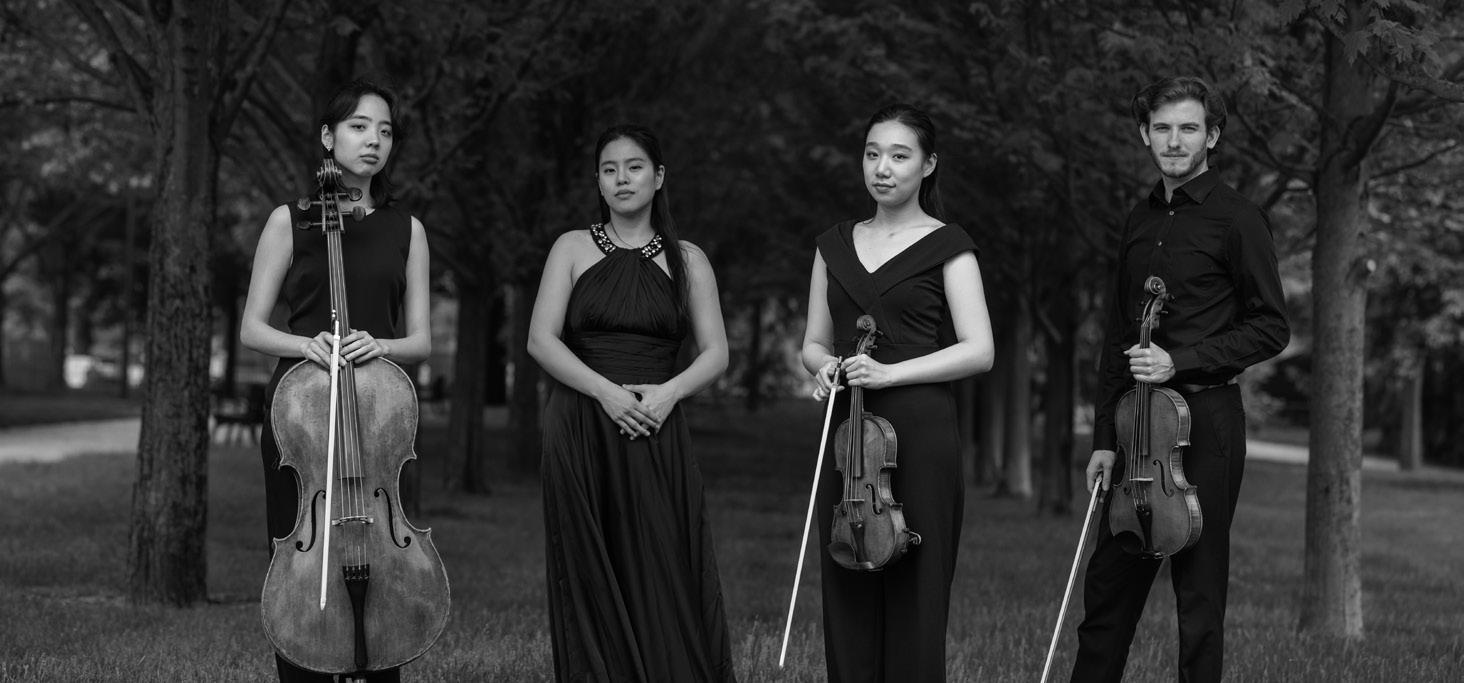
FRIDAY, JUNE 14 | 7 PM
FESTIVAL IN RESIDENCE: DIA
Detroit Institute of Arts Rivera Court
Sponsored by Barbara Heller
ANDREW LITTON, piano
SHAI WOSNER, piano
CHERYL LOSEY FEDER, harp
AMNIS PIANO QUARTET, Shouse ensemble
PROGRAM
Frank Bridge Phantasy for Piano Quartet, H. 94 (1879-1941) Andante con moto
Allegro vivace
Andante con moto
Amnis Piano Quartet
Han Lash Stalk (b. 1981) Losey Feder
Dave Brubeck Points on Jazz (1920-2012) Prelude Scherzo
Blues
Fugue Rag
Chorale Waltz
A La Turk
Wosner, Litton
Event is free with museum admission. Visit dia.org or call 313-833-7900 for more information.
Performance Sponsor
Lash Stalk | Martha Pleiss
17 WEEK ONE | JUNE 14
Amnis Piano Quartet
FRIDAY, JUNE 14 | 7:30 PM
FESTIVAL IN RESIDENCE: ANN ARBOR
Kerrytown Concert House
YVONNE LAM, viola
TRIO GAIA, Shouse ensemble
THE DOLPHINS QUARTET, Shouse ensemble
PROGRAM
Joan Tower White Granite (2010) (b. 1938) Lam, Trio Gaia
The Dolphins Quartet The Dolphin Miniatures Open Waters
Blueberry Soda
Rainy Sunday The Infestid Garden Under the Light of the Stars
The Sinking Sandal Old Farmer John
The Dolphins Quartet
INTERMISSION
Antonín Dvor˘ák Piano Trio No. 4 in E minor, Op. 90, B. 166, “Dumky” (1841-1904) Lento maestoso — Allegro vivace — Lento maestoso — Allegro molto
Poco adagio — Vivace non troppo — Poco adagio — Vivace
Andante — Vivace non troppo — Andante
Andante moderato (quasi tempo di marcia) — Allegretto scherzando — Allegro — Moderato
Allegro
Lento maestoso — Vivace
Trio Gaia
PROGRAM NOTES
Tonight’s program unifies around the formative: what, at a crucial moment in time, impresses on our sense of self with such force that who we are is forever cast by the memory of its intensity. These are rarely the big moments in life; often what is formative is small in scale, a smell, a texture, some brief and passing interaction with the world when we are young that has a disproportionate influence on how we understand ourselves. The work of the artist is, in many ways, a constant labor of impossible return to that primary state of full-bodied sensation; the formative, the “original memory” of being-human in the world, is what art attempts to give back to us for a moment.
Understanding the music of Joan Tower, for example, requires knowing the timid nineyear-old she once was. A small child, uprooted from the quiet of New Rochelle and relocated to Bolivia at the height of its national revolution, finds in her father’s new workplace a sonic and geologic culture that upends everything she understands. Tower cites her love of rhythm and of color in the sweaty memory of an equatorial nation in revolt, but her geologic predilection dates from these years as well. Tower’s father, a mineralogist working in extraction mines in South America, instilled in her an early expertise for thinking about the materiality of the Earth. Rock is a substance of power and endurance, but also constant change, subject to pressure and to heat; it is utilitarian, the bedrock of housing and the thing on which nations are built; it is also a symbol, a metaphor of birth and of belonging to the ground, flush with mythic properties for healing, protection, and strength.
Tower’s White Granite belongs to a collection of pieces—Black Topaz (1976) and Silver Ladders (1986) the most famous among them—whose musical language draws on these many physical and metaphoric qualities of their titular minerals. Granite, so named for its grain, belongs to a class of rock called phanerite whose distinguishing quality is the coarse visibility of its comprising crystals: there are no pure surfaces or smooth edges in granite, only endless, glittering variation sprawled out in all directions. Tower’s music follows suit: every large gesture is scattered with small breakages, streaks of charcoal, ash, beige and ivory knit across the surface, veins of snowy variegation that never perfectly repeat. It is the idea or image of “white granite” as translated into sound.
Tower’s mineral works are thus not documents of lithography—we do not hear fractional crystallization or the cooling of magma taking place—so much as poetic cross-sections of their object, loving inspections of the stone in question. White Granite turns the slab over in one hand, zooms close into its crystal composites, pulls it out to inspect its roughshod edges, traces a dusty finger on the ridge of its fracture, tastes the earthen richness of its chalky powder, feels the weight of centuries in this small piece of a planet. That early childhood insight, instilled by her father, that even the most solid and imposing masses in our world are divisible into the tiniest particulate crystal, has guided Tower’s work for nearly six decades. In White Granite, it’s easy to imagine the thrilled fascination of a nine-year-old seated by her father’s side, captivated by these fragments of stone in her small hands, by their weight, their texture, and the way they refract the beating South American sun.
The Dolphin Miniatures are, not dissimilarly, all fleeting attempts at capturing the incandescent knowledge of substances that, early in life, sketch out our thresholds of pleasure and sublimity. Each of the movements, written in turn by members of the quartet, maps the physical properties of a formative childhood moment into the realm of sound. The fizz of a first sparkling drink; the planar vastness of the first sight of
18 WEEK ONE | JUNE 14
the ocean; the sound of rain on a childhood roof; the half-memory of a pre-school song: these are small moments, perhaps, but the kind so rich in sensory overload at the start of our existence that they never quite lose their luster, no matter how far away from them we get. The seven miniatures tonight thus testify to a kind of group ethos: each time these four individuals play music at all, they revisit in some way these core, early memories.
With Antonin Dvořák, what is formative is much harder to distinguish on the basis of material. Dvořák operates with a kind of blunt omnivorousness; he borrows, bargains, lifts and loves music from all corners of the world with a kind of indiscriminate fascination. He is curious, a collector: American spirituals, Moravian folk dances, German opera, English choral music—it can all get translated into his sound world without so much the batting of an eye.
But there is a kind of core sensibility that guides the how along which these musical objects arrive in his vocabulary. Dvořák gravitates towards emotional extremes that are inextricable from their sense of place. His music wagers a kind of double motion, reaching upwards towards the limit-states of human sensation—grief, ecstasy, rage, pride, lust—while keeping one foot firmly planted in the soil of their upbringing. Raised in the foothills of Bohemia where music was in turn financial survival, social modality, and cultural identity, the intensity of his music can’t be separated from its where: what is formative is thus an idea of place that gives rise to energy in music, emotion as interlocked with landscape.
In the fourth Piano Trio, Dvořák abandons classical forms and instead borrows from the folk music of his native Eastern Europe. Each of the six sections is a discrete “dumka,” a Ukrainian epic lament song traditionally delivered by itinerant bards with nothing but a small bandora for accompaniment. Though the means were often minimal and painfully local, these songs were immense things, testimonies to the generational memories of captive people and their struggles. The “dumka”—the word literally means “rhapsodic thought,” thought letting itself be drawn out beyond a natural limit—is the perfect kind of keyword for thinking about Dvořák and his music. Each of the sections trace huge emotional arcs without ever leaving the key in which they start. They are stabilized by place, both geographical and musical, capable of extremity because of their foundation. Dvořák, a Czech who traveled as far as Iowa before returning home, knew this about the formative: like those traveling bards with their songs and their bandoras, we carry our roots with us through the years. © Ty Bouque 2024
SATURDAY, JUNE 15 | 11 AM
CHILDREN'S CONCERT: ACCENT PONTIAC BUCKET BAND
Bloomfield Township Public Library
Sponsored by Gwen & S. Evan Weiner
PROGRAM
Join Accent Pontiac for a children’s music workshop. Their instruction includes percussion lessons using drumsticks and buckets. These “bucket bands” learn rhythmic skills and percussion techniques. More importantly, participants experience what it is like to be part of an ensemble, sharing responsibility and pride with each other.
Admission is free; all ages are welcome.
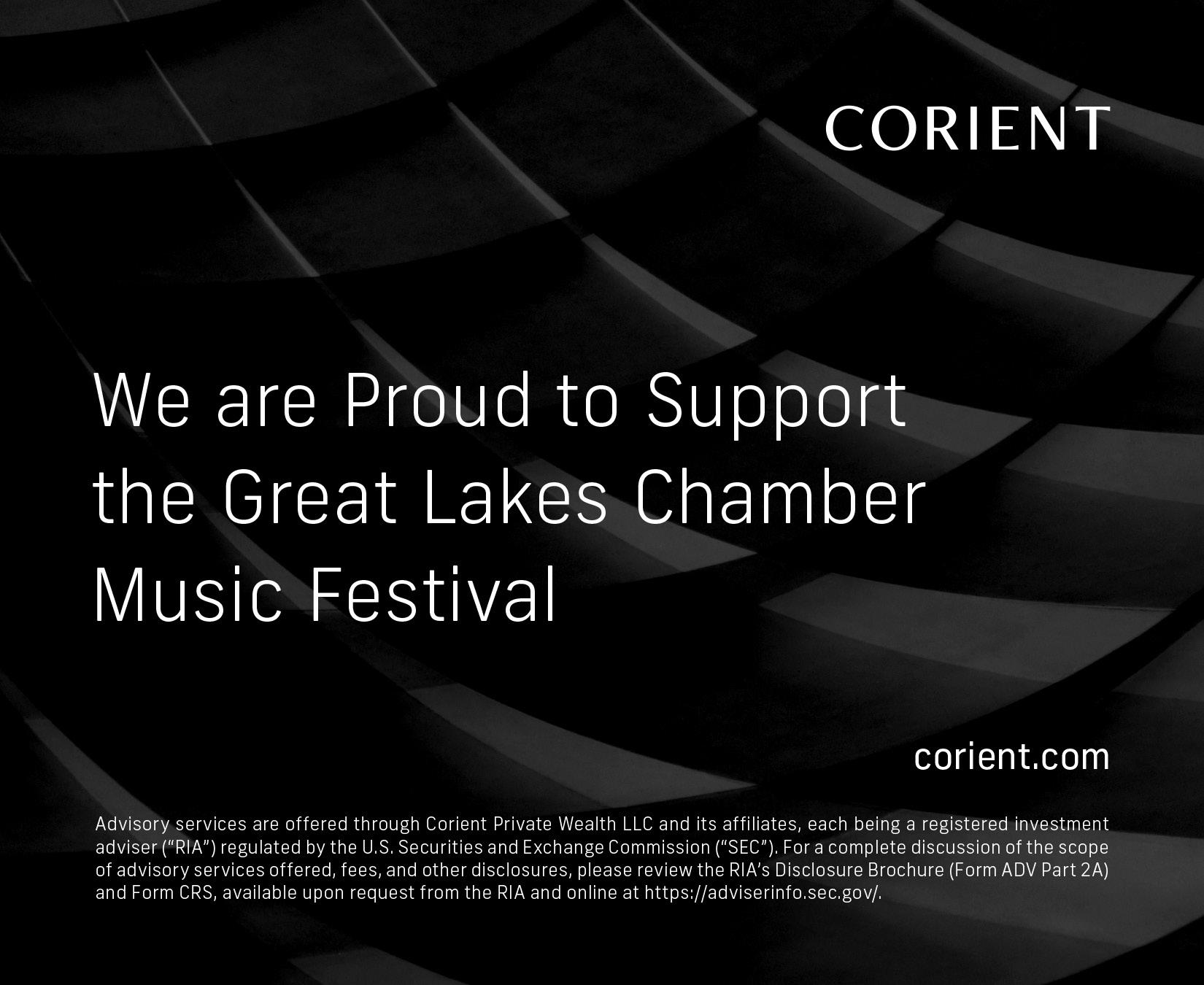
WEEK ONE | JUNE
14-15
SATURDAY, JUNE 15 | 7 PM
CREATIVE CONNECTIONS
Seligman Performing Arts Center
Sponsored by Josette Silver
HAN LASH, piano
ANDREW LITTON, piano
SHAI WOSNER, piano
TAI MURRAY, violin
PHILIP SETZER, violin
PROGRAM
KATHARINA KANG LITTON, viola
PETER WILEY, cello
KEVIN BROWN, bass
THE DOLPHINS QUARTET, Shouse ensemble
HESPER QUARTET, Shouse ensemble
Han Lash Excerpts from A Journey Through the Underworld: (b. 1981) Counterpoint
Lash
Franz Schubert
Impromptu in G-flat major, D. 899 (1797-1828) Wosner
George Gershwin Impromptu in Two Keys (1898-1937) Wosner
Rhapsody in Blue A. Litton, Wosner
INTERMISSION
Maurice Ravel String Quartet in F major (1875-1937) Allegro moderato - Très doux
Assez vif - Très rythmé
Très lent
Vif et agité
Hesper Quartet
Olli Mustonen Nonetto II (2000) (b. 1967) Inquieto
Allegro impetuoso
Adagio
Vivacissimo
Murray, Setzer, K. Litton, Wiley, Brown, The Dolphins Quartet
PROGRAM NOTES
It is our titular night, the heart of the festival theme, and so tonight, we’re going to think about connections. Each piece on this program animates economies of twoness: systems of bartering, bargaining, trade and transfer, exchange and interception that occur when a pair of opposing objects are forced to negotiate cohabitation in the same musical space. There is, in each of these works, some thing—a melody, a sound, a reference, a genre, a general musical object—dropped in too-close proximity to its Other, its problematizing opposite. Reconciliation has to be arrived at, whether by force, by love, by destruction or by contortion, but reconciliation nonetheless because the two can never last as one and one: we need to find a plus somewhere to finish the equation. And so we’ll see across the program that the additive composite of being two is always arbitrated according to what can be given and what can be taken in return.
[Pair 1: composer+composition]:
We begin with Han Lash’s Excerpts from A Journey Through the Underworld: Counterpoint—like so much of their music—finds their independent musical sensibility by transforming or transcribing existing historical objects: what we might think of as “the music of Han Lash” almost always emerges in the cracks of a dialogue with other, older melodies and models. In this case, the denuded scaffolds of the old forms becomes a blank drawing board, against which the ornamentations (arpeggios, glissandos, shimmers and flickers) come material for Lash’s articulation of musical selfhood. What at first sounds like the discovery of long-forgotten melodies— the glimpses of the past that float in and out of perceptibility—is actually the inverse: the composer discovering themself by organizing what slips through history’s newly opened crevices.
[Pair 2: melody+accompaniment]:
The slippery relations between arpeggio and melody lead us neatly into Schubert (a composer who, incidentally, has been a life-long love of Lash’s). The G-flat major Impromptu belongs as the third in a set of four improvisations that, true to their name, are governed by an overwhelming sense of “pulling it out of thin air.” A long, traipsing melody in the upper fingers of the right hand unfurls itself over a slow bass line, while between the two, a rocking arpeggio fills in the chasms between notes. But this accompaniment doesn’t stay subservient for long. Forced by the impossible slowness of the melody to fill more and more of the texture, the arpeggio gradually begins to reach out and take control, pushing and pulling the melody along with it like an independent force. This assertion of character arrives, right at the end, at an astonishing feat of rebellion: the accompaniment strays so far from the melodic center that Schubert is forced briefly (it lasts a bar and a half) to change keys to accommodate the digression. Accompaniment has overstepped the melody. And while the two quickly return home, that assertion of the accompaniment’s autonomy keeps them both as active and equal characters right through to the final note.
[Pair 3: key+key]:
Next, we’ll break key signatures entirely. The “two keys” in the title of George Gershwin’s own short Impromptu refer to the irreconcilable harmony separating the hands: the right-hand melody lives in a key one half-step lower than the left-
20
ONE | JUNE
WEEK
15
hand bass. Each phrase is thus an experiment into routes of realignment for a form that always starts in adjacency. What Gershwin gradually realizes is that, in parallel systems, all it takes is a single point of overlap for the whole thing to collapse into unity. Here, the fluid absorption of dissonance on which so much of jazz is predicated works in Gershwin’s favor: the “blue note” (what jazz musicians call a particular moment of dissonance) in one key can become a green light for another.
[Pair 4: genre+genre]:
And ending the first half is a work whose twoness is synonymous with the nation that brought it forth. Rhapsody in Blue, Gershwin’s eternal marriage of American jazz and classical music, turns 100 this year, offering a fresh chance to reevaluate that genetic exchange. After so many years in the public eye—the Fantasia cartoon cemented its American ubiquity—it’s hard to remember how audacious and risky that work was when it was written. Gershwin attempts a reconciliation between what was then considered “high” and “low” art. He achieves a blend so effortless and thrilling because he locates, in the values of the Roaring Twenties, a common ground on which the pair could absolutely agree: excess, glitter, virtuosity, brashness, and a certain love for drama are traits that jazz and classical music share in spades.
[Pair 5&6: rhythm+rhythm and technique+technique]:
Like Rhapsody, the Ravel String Quartet in F, one of the most recognizable instances of French fin de siècle music in the repertoire, hardly needs an introduction. But it is the second movement—marked “rather lively and very rhythmical”—that has garnered the most attention in the years since its composition. Ravel’s musical wager is simple: two pairs of opposite objects placed in constant juxtaposition. Between the melody and the accompaniment is an ongoing argument over whether dividing six is easier as 2+2+2 or 3+3. That debate gets personal as two playing techniques— pizzicato (the plucking of the string) and ordinary bowing—begin to overlap, and what is gradually revealed is that opposition and temporary disjunction form the very ground on which the quartet stands. As with Gershwin and with Schubert, the roles of accompaniment and melody are never so clear as we’d like them to be.
[Pair 7: then+now]:
Finally, Olli Mustonen’s Nonetto II brings all these strands of our diverse and exhilarating program into a tidy final flourish. Mustonen, like Lash, is a composer of our time with one foot firmly grounded in the language of the past; we are bookended by compositional outlooks which see the act of writing music as a fundamentally historicist behavior. The Nonet, like Tchaikovsky’s Souvenir de Florence or the Mendelssohn Octet, is an old-style showpiece for string players, a chance to play together in consort, to feel the thill of virtuosity among a group of peers. But its two-ness—as is ours at this festival—is the split of now and then: nostalgia for the forms and the melodies of a long-since-bygone time, finding new meaning in the imaginations and freedoms of our own age. (And is there a better hope for classical music than that?) © Ty Bouque 2024

We bring the concert experience into your home...
david michael audio
4341 Delemere Court
Royal Oak, Michigan 48073
248.843.7632 www.davidmichaelaudio.com
Featuring Accuphase, Aurender, Ayre Acoustics, Boulder, Chord Electronics, Devore Fidelity, Dohmann, Estelon, Harbeth, Heed, Innuos, Kabala Sosna, Leben, Line Magnetic, Magico, Metronome, MSB Technology, Nagra, Riviera Audio Labs, Spendor, Sugden, Totem Acoustic, Vimberg and many others…

21 WEEK ONE | JUNE 15
WEEK TWO | JUNE 16-18
SUNDAY, JUNE 16 | 2 PM
PRIDE AT THE DIA
Detroit Institute of Arts Rivera Court
Sponsored by Henry Grix & Howard Israel
THE DOLPHINS QUARTET, Shouse ensemble
HESPER QUARTET, Shouse ensemble
PROGRAM
Em Singleton glint, gleam, glow (WORLD PREMIERE) (b. 2002) Hesper String Quartet
Han Lash String Quartet No. 2 (2022) (b. 1981) The Dolphins Quartet
INTERMISSION
George Enescu String Octet in C major, Op. 7 (1881-1955) Très modéré
Très fougueux
Lentement
Mouvement de Valse bien rythmée
Hesper Quartet, The Dolphins Quartet

TUESDAY, JUNE 18 | 7 PM
WRITTEN FOR THE STARS
St. Hugo of the Hills
Sponsored by Virginia & Michael Geheb
ALESSIO BAX, piano
SHAI WOSNER, piano
ROBYN BOLLINGER, violin
TESSA LARK, violin
PROGRAM
HSIN-YUN HUANG, viola
PAUL WATKINS, cello
MICHAEL COLLINS, clarinet
Ludwig van Beethoven Sonata for Piano and Cello No. 2 in G minor, (1770-1827) Op. 5, No. 2
Adagio sostenuto e espressivo
Allegro molto più tosto presto
Rondo. Allegro
Bax, Watkins
Béla Bartók Contrasts, BB 116, Sz. 111 (1881-1945) Verbunkos (Recruiting Dance)
Pihenö (Relaxation)
Sebes (Fast Dance)
Wosner, Lark, Collins
INTERMISSION
Johannes Brahms Clarinet Quintet in B minor, Op. 115 (1833-97) Allegro Adagio
Andantino
Con moto
Collins, Bollinger, Lark, Huang, Watkins
Performance Sponsors
Beethoven Sonata No. 2 | Franziska Schoenfeld
Presenting Sponsor of Beethoven Complete Cello Sonatas | David Nathanson
PROGRAM NOTES
In every piece tonight, there are traces of an invisible body. While it’s true these works “belong” to their composers—they deploy all the musical vocabulary and behavior specific to their creator—they’re shot through by another, more ghostly figure only available in the margins and the mechanics of the performance. Behind each one of these works is a historical virtuoso who made it possible, one whose influence as a
22
Hesper String Quartet
technician, an expressive artist, and an advocate inscribed itself on every detail of the score. Certainly we’re hearing Beethoven, Bartók, and Brahms here tonight. But their music has the effect of a seance, a summoning ground: every time it’s played, the haunting echoes of Jean-Louis Duport, Benny Goodman, and Richard Mühlfeld whisper to us through it.
Tonight marks the first in a series of concerts we’re devoting to the Beethoven cello sonatas, which would not exist—and certainly not in the influential form they now occupy—were it not for Duport. In 1796, Beethoven had traveled to Berlin to meet Prussia’s King Wilhelm II, but found an eager cadre of new collaborators as well. The king, an amateur cellist with a love for classical music, kept a coterie of accomplished instrumentalists at his constant beck and call, and the Duport brothers, a pair of French virtuoso cellists who had fled the Revolution, were among his lucratively employed. Part of their contract was to perform the new music (often sonatas) commissioned for the entertainment of the regent, and Beethoven quickly became enamored.
Instrumental sonatas at the time were understood primarily as piano showpieces, with the additional instrument more or less relegated to continuo. But Jean-Louis, the younger sibling—already internationally famous thanks to a meticulous etude book he had written (it’s still in use today) – made a personal project of unshackling the cello from menial bass lines. His insistence on the instrument’s lyrical capacity and technical dexterity hit the 26-year-old Beethoven like a shockwave. The Austrian, when not entertaining the king, spent long hours studying the ins and outs of the instrument at Duport’s knee. (There is even a leaf of staff paper in the British Library’s collection of Beethoven sketches, showing several scales and double stops with proper fingerings written out in Duport’s hand.)
In the Opus 5, Beethoven’s great advent was to upend the expectations of role and virtuosity in the traditional sonata form, crafting an environment in which two perfectly-matched equals could share the musical labor. The second sonata, first performed by Duport with Beethoven himself at the piano, would have thrilled an amateur cellist like the king: it was the first real instance in which the cello was treated as a modern dexterous soloist, and the flares of an uncommonly skilled performer are everywhere in the part. But the real legacy of Duport’s musicianship is in Beethoven’s expressive demands. The cello is asked to role-shift on a dime, to pull extreme changes of color out of the instrument as if from thin air. The pair twist and turn until the final minutes of both movements, where astonishing subversions of energy—pauses, moments of stasis, sudden drops in the temperature—demand an impossibly imaginative interpreter to make them convincing in the context of the whole. The trust Beethoven has in his collaborator is demonstrated here: the composer engages in some of his most daring formal experiments, knowing they’re in the ablest of communicative hands.
By the 20th century, Duport’s brand of instrumental celebrity was a dying breed, but the clarinetist Benny Goodman was the notable exception. In January of 1938, Goodman’s big band took a one-night engagement at Carnegie Hall, delivering a high-velocity concert that launched jazz into the popular sphere and made Goodman into a household name. In the audience that night was Joseph Szigeti, the Hungarian violinist who, like his friend Béla Bartók, had begun investing increasing energy in Stateside musical culture should the threat of Nazi dominance ever force him to flee Europe. (And it did: both men would emigrate within a year.) Szigeti, himself something of a star, knew Goodman had a proclivity for classical playing
and encouraged the wealthier clarinetist to underwrite a few commissions. Szigeti then put Goodman in touch with Bartók (he mailed the older composer a few of the clarinetist’s trio records with Gene Krupa and Teddy Wilson to whet his appetite) and, by the fall of the same year, a kind of surrogate jazz trio—with violin standing in for the bass—was in the works.
Initially, Goodman had asked for two separable pieces short enough to fit on sides of a 78 RPM (the clarinetist was looking to improve his reputation as a recording artist). And Bartók did his best: the two outer movements—Verbunkos, after a traditional recruiting dance performed by Hungarian military squadrons to encourage the conscription of younger men, and the Sebes, the fast improvised response—were presented as that short pair at the 1939 Carnegie premiere, billed then under the title Rhapsodies. But already, Bartók had other ideas, and when the trio—Goodman, Szigeti, and Bartók at the piano—sat down to record the work under its new title Contrasts in 1940, a long middle movement called Pihenö (literally taking a rest) was added to lend the piece more heft.
While the material of the piece owes more to Hungarian music than to jazz (only the ornamental turns and the liquid traversal of extreme registers in the clarinet, two calling cards of Goodman’s, bear his influence), Contrasts is a testament to the freewheeling social nature of the jazz session. It is, above all else, casual. Both violin and clarinet pull a common jazz move and trade the role of secondary instruments during the course of the work (Bartók even builds in a kind of impatient vamp while the violinist switches over—you can imagine the players laughing to one another during the lull); the piano is mostly relegated to percussive band-style “comping”; and musical in-jokes are everywhere. It is a piece overwhelmingly influenced, if not by the syntax of jazz, by its spirit. No one but the king of big band could have elicited such humor, energy and, appropriately, contrast from the old Hungarian master.
And finally, tonight marks the first in a series of three concerts in which the clarinet quintet gets extensive investigation. We start with Brahms, whose writing for the instrument is something like posthumous labor. The melancholic German had already announced his retirement when, in Meiningen, he heard Richard Mühlfeld play a chamber recital. That impact—“It is impossible to play the clarinet better than Herr Mühlfeld does here,” he wrote to Clara Schumann—was so considerable that Brahms returned to the pen for a few years more, primarily to produce work he felt worthy of his newly discovered muse.
As with Beethoven and Duport, Brahms’ breadth of emotional expression points to an intended performer capable of uniquely intense immediacy behind the instrument. Brahms nicknamed Mühlfeld “Fräulein Nightingale” for his sweet and affecting sound, and his extensive use of the low register is another nod to Mühlfeld’s distinct skillset. (Later accounts of his playing actually attest to a habit of squeaking in the upper ranges; our definition of virtuoso has changed considerably in 130 years.) There are quotes from the Weber quintet (a piece Mühlfeld loved) and a theme and five variations in the final movement (a direct homage to Mozart, whose own quintet— the genre’s first, and the work Brahms first heard Mühlfeld play—deploys the same form); it is, by all technical measures, a custom-built gift.
But, again like Beethoven and Duport, the connection stretches well beyond the practical. Brahms is here writing end-of-life music, some of the most personal and elusive of his career. The majority of that expressive burden is placed on the clarinet, not for the sound of the instrument but, crucially, for the beloved friend holding it.
Tonight, we hear three testaments to friendship and to trust, homages to creative connections that come but once a lifetime. © Ty Bouque 2024
23 WEEK TWO | JUNE 16-18
WEDNESDAY, JUNE 19 | 7:30 PM
TASTING NOTES: JAZZ ON JUNETEENTH
Mongers’ Provisions - Berkley
Sponsored by Joy & Allan Nachman and Linda Goodman in memory of Dolores Curiel
ALVIN WADDLES, piano
MARION HAYDEN, bass
PROGRAM
In commemoration of Juneteenth National Independence Day, pianist Alvin Waddles and bassist Marion Hayden will perform a concert exploring themes of freedom, activism, community and resistance through the lens of jazz, blues, civil rights anthems and gospel music. The concert features works by James Weldon Johnson, Donny Hathaway, Nina Simone and other artists, reflecting our shared humanity, and the meaning of Juneteenth Day.
THURSDAY, JUNE 20 | 10 AM
BEYOND THE NOTES: MUSIC MEETS MINDFULNESS
Temple Beth EI
AMNIS PIANO QUARTET, Shouse ensemble
PROGRAM
Enjoy a 60-minute yoga class for every body with yoga maestra Gail Mondry, accompanied by the Amnis Piano Quartet.

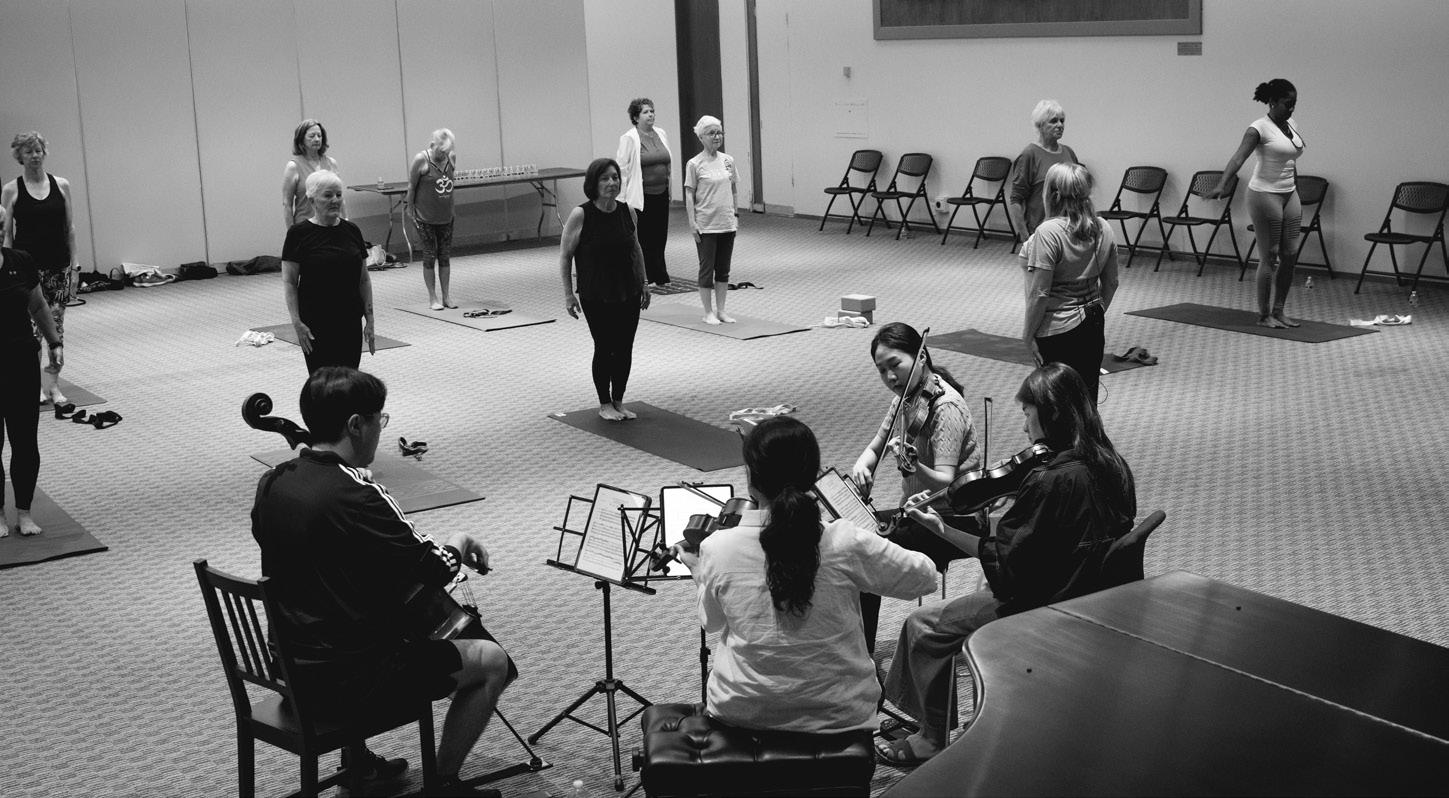
24
WEEK TWO | JUNE 19-20
WEEK TWO | JUNE 20
THURSDAY, JUNE 20 | 2 PM
SHOUSE: PRICE & MOZART
St. Matthew’s & St. Joseph’s Episcopal Church
YVONNE LAM, violin
DILLON SCOTT, viola
TRIO GAIA, Shouse ensemble
THE DOLPHINS QUARTET, Shouse ensemble
PROGRAM
Florence Price Piano Quintet in A minor (1887-1953) Allegro non troppo
Andante con moto
Juba. Allegro
Scherzo. Allegro
Lam, Scott, Trio Gaia
INTERMISSION
W. A. Mozart String Quintet No. 4 in G minor, K. 516 (1756-91) Allegro
Menuetto: Allegretto
Adagio ma non troppo
Adagio - Allegro
Scott, The Dolphins Quartet

Wells
Kenneth D. Clinesmith, CLU, LUTCF - President 248-538-9500 / kenc@wellsadvantage.com

25
sources….quality
A D V A N T A G E Founding Member: Advantage Insurance Network "Representing Over 25 Companies" i
THURSDAY, JUNE 20 | 7 PM
REVOLUTION AND ROMANTICISM
St. Hugo of the Hills
Sponsored by Nancy Duffy
ALESSIO BAX, piano
PAUL WATKINS, cello
MICHAEL COLLINS, clarinet
HESPER QUARTET, Shouse ensemble
PROGRAM
Ludwig van Beethoven Sonata for Piano and Cello No. 4 in C major, (1770-1827)
Op. 102, No. 1
Andante – Allegro vivace
Adagio – Tempo d’Andante – Allegro vivace
Sonata for Piano and Cello No. 5 in D major, Op. 102, No. 2
Allegro con brio
Adagio con molto sentimento d’affetto
Allegro – Allegro fugato
Bax, Watkins
INTERMISSION
Samuel Coleridge-Taylor Quintet in F-sharp minor for Clarinet and Strings, (1875-1912) Op. 10
Allegro energico Larghetto affettuoso
Scherzo: Allegro leggiero
Allegro agitato – Un poco più moderato – Vivace
Collins, Hesper String Quartet
Performance Sponsors
Beethoven Sonata No. 4 | Rayna Kogan
Beethoven Sonata No. 5 | Kathleen & Randolph Schein
Presenting Sponsor of Beethoven Complete Cello Sonatas | David Nathanson
PROGRAM NOTES
Chicken and the egg, these two. Whether the Romantic spirit manifests in the aftermath of national uprisings in France and America at the end of the 18th century or whether revolutionary tendencies are a natural byproduct of the emergent prioritization of the emotional subject that Romanticism ushered in is a hard knot to parse. In either case, it is impossible to speak of Romanticism without the cannon fire that heralded its century, and the pair have the uncanny ability to conjure up VictorHugo-esque images of confident and hotblooded youth leading from the heart with the flag of liberation draped over their shoulders. Romanticism, it seems, always announces itself with a fight.
By that criterion, then, it would appear as if we’ve chosen the wrong Beethoven sonatas for this program. (Tonight is the second of four concerts exploring that fivepart cycle.) With a title like Revolution and Romanticism, the third sonata—central to Beethoven’s middle-aged “Heroic” period, full of brash and ostentatious displays of power and thrill, totally devoid of a slow movement, and virtuosic to a fault—would be the obvious assignment. But if we refocus our understanding of those two words away from models of muscularity and assurance and towards the murky depths of the unknown and the unstable, Sonatas 4 and 5 will seep into our field of vision—they tend to be slippery as it is.
Revolution is an act of utopic thinking. The refusal to settle for the confines of the present and instead commit, without promise of return, to the horizonal possibilities of what might be is a gesture of projection beyond the limits of the known. That guiding principle—of longing for a not-yet-here despite overwhelming instabilities—elides revolution with Romanticism, the latter’s depthless excavation of subjective selfhood itself a reaching towards the ineffable and inexplicable. Rationalism, the Classical dictum against which the 18th century rebelled, was defined by hard boundaries and clear-cut lines in the sand. Romanticism turned instead to dark corners and the nebulousness of being: Wagner’s Tristan und Isolde, often characterized as the pinnacle of that epoch, is first and foremost about what cannot be touched and what is always known too late.
The pair of cello sonatas that comprise Beethoven’s Opus 102 singlehandedly inaugurate the composer’s late period, marked by extreme experimentation at the limits of form, chromatic instability, and a cloudy ambivalence and emotional unsettledness that permeates even the bright spots. Several of Beethoven’s original reviewers were dismayed at the inscrutability of these new works: the crowd-pleasing fanfare of his “Heroic” years seemed to have given way to an uncompromisingly mature sensibility that demanded more intellectual rigor, more confusion of their audience. The composer—nearly deaf, aging fast, and fiercely independent— seemed not to care. The project had become an entirely personal one and, from this point on, Beethoven would write music almost exclusively for himself.
This becomes evident in the fourth sonata when we examine pace and rate. In the opening introduction, for instance, almost nothing happens. The music spins and weaves about itself quite a bit, but formally it goes nowhere. Beethoven is maddeningly patient, willing to stretch into impossibly long—minutes long—phrases. As listeners we are accustomed to change taking place often enough that we can discern a structure. Beethoven does the opposite. This music obeys no dictate to ever move on. Instead, it searches into finer and finer grains of itself, leaving material only after it has fleshed out every detail of what can be known about its behavior in the
26 WEEK TWO | JUNE 20
environment. This temporal revolution—as in the spinning or the turning of the clock— is glacial, so as to allow true Romanticism the space to stake its searching claim.
Beethoven’s fifth and final cello sonata is uncommon as the only one of its breed with a true slow movement. Following on from an unbearably stark, almost tersely formal first movement—the melody there built on scalar bare bones—the prolonged melancholy of this central movement spins an endless thread like molten silver from the belly of the instrument that offers no contrast as an escape. This, as well as the exhaustive fugue that ends the work, amounts to a refusal to coddle or comfort the listener, to “give the people what they want.” Instead, each phrase sinks deeper into the mind of its creator, a grey glow pulsing low in an impenetrable cave.
We tend to associate Romanticism with a kind of Mahlerian catharsis—organs, drums, chorus, and the opening of the heavens—but the reality is far more frequently occluded and evasive. Truly Romantic music would be so personal, so idiosyncratic, so rigorously interior that it would remain inscrutable to anyone but its author; Beethoven, in this most revolutionary gesture, comes damn near close to achieving that result.
After intermission we’ll end the program with a work written in the twilight of Romanticism’s sun. In 1895, Samuel Coleridge-Taylor was a student of composition at the Royal College of Music, where he was studying under the prominent Irishman Charles Villiers Stanford. For a class on chamber music, the students were invited to attend a performance of the Brahms Clarinet Quintet, and after the final cadence, Stanford issued the following challenge: “no composer now could write such a composition without escaping the influence of Brahms.” Three months later, Coleridge-Taylor put a double bar-line on his response. This—our second in a series devoted to the clarinet quintet—is thus a conscious act of revolt, and a successful one at that. Coleridge-Taylor manages to sidestep all the pitfalls of luscious texture and soloistic primus inter pares that made the Brahms so popular, and instead pulls off a sprightly and uncommonly dexterous work whose real maturity is measured by its reserve.
The defining hallmark of Romanticism is a prioritization of the individual above all else. Which is why love is such a potent theme among these artists: few experiences reveal the Self with more profound clarity than the shadowy presence of the Other who can never truly be known. The Romantic tendency towards subjective interiority is thus often undertaken in proximity to some Othering object, against which the self can more clearly measure the movements of its soul.
For Coleridge-Taylor, that Other here is Brahms. It is by explicit negation that he comes into his own, by not being Brahms that his own musical subjectivity is unveiled. That the quintet is among the earliest mature works in Coleridge-Taylor’s short output is no accident: it is in the dawning awareness of not being the Beloved that we come to understand what selfhood truly means. By forcing himself to revolutionize the habits of the clarinet quintet away from a work he admires, the solutions become deeply personal and idiosyncratic and, more than revealing something about the medium, reveal his extreme capacity for nuance, subtlety, and a kind of floating beauty that Brahms would never have dared imagine.
We have not solved the chicken/egg dilemma. But tonight we will, I hope, get a glimpse into the terrain that Revolution and Romanticism both occupy, where investment in the unknown, a turn towards interiority, and a love that pushes away in the same gesture as the embrace are the searchlights for humanity’s most inarticulable experiences. © Ty Bouque 2024
FRIDAY, JUNE
21 | 11 AM
GROUNDBREAKING ORIGINALS
Temple Beth EI
Sponsored by Beverly Baker & Dr. Edward Treisman
ALESSIO BAX, piano
PAUL WATKINS, cello
AMNIS PIANO QUARTET, Shouse ensemble
HESPER QUARTET, Shouse ensemble
PROGRAM
Joseph Haydn String Quartet in A major, Op. 20, No. 6, Hob.III:36 (1732-1809) Allegro di molto e scherzando
Adagio cantabile
Menuetto: Allegretto
Fuga a tre soggetti: Allegro
Hesper String Quartet
Kyle Rivera Grimoire: Laplace’s Demon (WORLD PREMIERE) (b. 1996) Amnis Piano Quartet
Ludwig van Beethoven Sonata for Piano and Cello No.1 in F major, (1770-1827) Op. 5, No. 1
Adagio sostenuto – Allegro
Rondo. Allegro vivace
Bax, Watkins
Performance Sponsors
Beethoven Sonata No. 1 | Cindy & Harold Daitch
Presenting Sponsor of Beethoven Complete Cello Sonatas | David Nathanson

Sabrina Nelson
Concert to be followed by a Lunch & Learn with Visual Artist Sabrina Nelson.
continued on page 28
27 WEEK TWO | JUNE 20-21
PROGRAM NOTES
As any construction worker will tell you, the force it takes to break ground is far greater than what’s needed to mine the richness underneath it. Initial impact on a surface takes no small amount of violence, and beginnings always signify the death of something else. But no two surfaces are alike, and so the tools used to rupture them can’t ever be the same. This morning, while certainly a concert of three firsts, is divided by independent ideals of how novelty and inauguration are achieved. Haydn pushes through history; Beethoven crosses against it; and Kyle Rivera mobilizes logic and art far afield of chamber music, only to smash the two together with a force strong enough to crack new possibilities in how we think about organization and perception. The means of breaking ground are what’s on trial here today: no two composers go about it the same way.
Haydn’s Opus 20 is often accredited with singlehandedly drafting the formula for the modern string quartet (he’s not called the “father of the string quartet” for nothing). The intellectual atmosphere of the time—Rousseau was advocating humanistic freedom while Goethe was mining new subjectivity—was an overwhelming departure from the submission to historical or religious ideals in favor of a search for secular, expressive independence. The Opus 20 is this departure for music. Though Haydn deploys the standard format of a four-movement quartet— sonata-allegro, adagio, minuet and trio, and a fugue—the degree of free play he finds inside those strictures sets the tenor of experimentation and discovery for the string quartet for the next 200 years. In the enclosed architecture of a prescribed musical model, Haydn gives free reign to play and desire rather than sticking dutifully to structural demands. That is the new idea.
Take the first movement: while it functionally obeys the sectional divisions of classical sonata form, Haydn has upended a single parameter: the secondary theme is not, as the form requires, in the key of the major dominant, but in the minor instead. It is a tiny alteration, but in such a rigid system, even the smallest deviation can spiral out and unleash whole sequences of transformation that upend the thing from the inside. In Haydn’s case, what this little switch allows is a harmonic fluidity verging on anarchic. The second theme is so distant and unstable in the context of the established key that it sets in motion rates of material change that, in any other sonata, would be reserved for the development section. The repeat to Theme A comes as a whiplash: are we still only here after all that madness? Haydn’s great advent in the Opus 20 is thus intellectual play on the part of the composer at the limits of what form can hold. The call for change is, very literally, coming from inside a meticulously constructed house.
Contemporary music has a different attitude to form and material. It has been a long time since the expectation that every composer employ inherited organizational models was relinquished, and today, the common practice is that composers find forms and processes that uniquely suit their musical sensibilities. Kyle Rivera, for instance, doesn’t even begin with musical structures. As a child with a proclivity for art, his creativity first manifested in images; to this day, he carries a book of graphite etchings at his side. Rivera’s process starts with drawings that only later will transform into an ordering of sound. That visual imagination is crucial to understanding his music. Today’s work belongs to an ongoing collection of pieces scrutinizing cultural notions of the demonic as receptacles for the attributes which humanity most distrusts (like the nearly-human Malebranche in Dante’s Inferno
embodying the fear of possible physical dominance by the collective over a corrupt government).
The word grimoire means a book of spells or dark invocations. Laplace’s Demon, however, is not actually a mythological demon at all, but a vision of scientific determinism. Pierre-Simon Laplace, the 18th-century French mathematician, developed a theory which was based upon the deductions of basic physics. He reasoned that if we know information like mass and velocity for some thrown object (such as a football), we can determine the exact point of its arrival—then, were it possible for a single being to know all positions and motions for all beings in an instant, it would have complete knowledge of the future. This imaginary being, Laplace wagered, proved determinism: that such a knowledge can be imagined confirms the absence of free will or chance in the world.
It is called a demon only because the idea of its existence was terrifying to 18th century humanism. But Rivera’s work—as always, visually oriented—takes the synonymous leap and imagines what corporeal form such a “demon” might take. By beginning far outside of music’s scope—in physics, philosophy, and mathematics— Rivera can coax new and overwhelming combinations of sound and gesture from these old-fashioned instruments. The music we’ll hear today mediates a physical body for the theory, allowing us, briefly, to imagine the behaviors, shapes, sounds, and orders of a monster that leaves nothing up to chance.
And finally, continuing our ongoing study of the Beethoven cello sonatas, is the first, the original model. There is so much new about this work, up to and including the very idea of what the sonata form is meant to be. Sonatas with instruments at the end of the 18th century were still understood primarily as piano showpieces: the additional participating instrument was usually relegated to continuo. Beethoven’s great advent in the Opus 5 is to subvert the expectations of role and virtuosity, crafting an environment in which two perfectly-matched equals divide the labor fairly.
The implications of such a revolution make themselves known from the very first note. The long, unison introduction, this spinning of a complex web out of thin air, is like nothing sonata history—much less cello history—has seen until now. Out the gate Beethoven disrupts his listener’s conditioning of form and relation. He wants to raze the ordered history behind him; he knows he can’t start off in familiar territory. And so the musical journey, already at the peripheries of what is possible for the time, moves to the meaty center only by carving a fresh and untrodden route. When the first theme finally arrives, we the listeners have long since relinquished our expectations: the “sonata form” is going to mean something different here, that much is clear.
What we understand as “newness” changes over time and according to the medium. But what is always the case is that it is inseparable from a prioritization of the instincts of the self over exterior governance. Ground is only truly broken when an artist, having rigorously mastered all the rules and regulations of the past, throws the unknowable object of their individuality into the mix and discovers what shatters on impact. © Ty Bouque 2024
28 WEEK TWO | JUNE 21





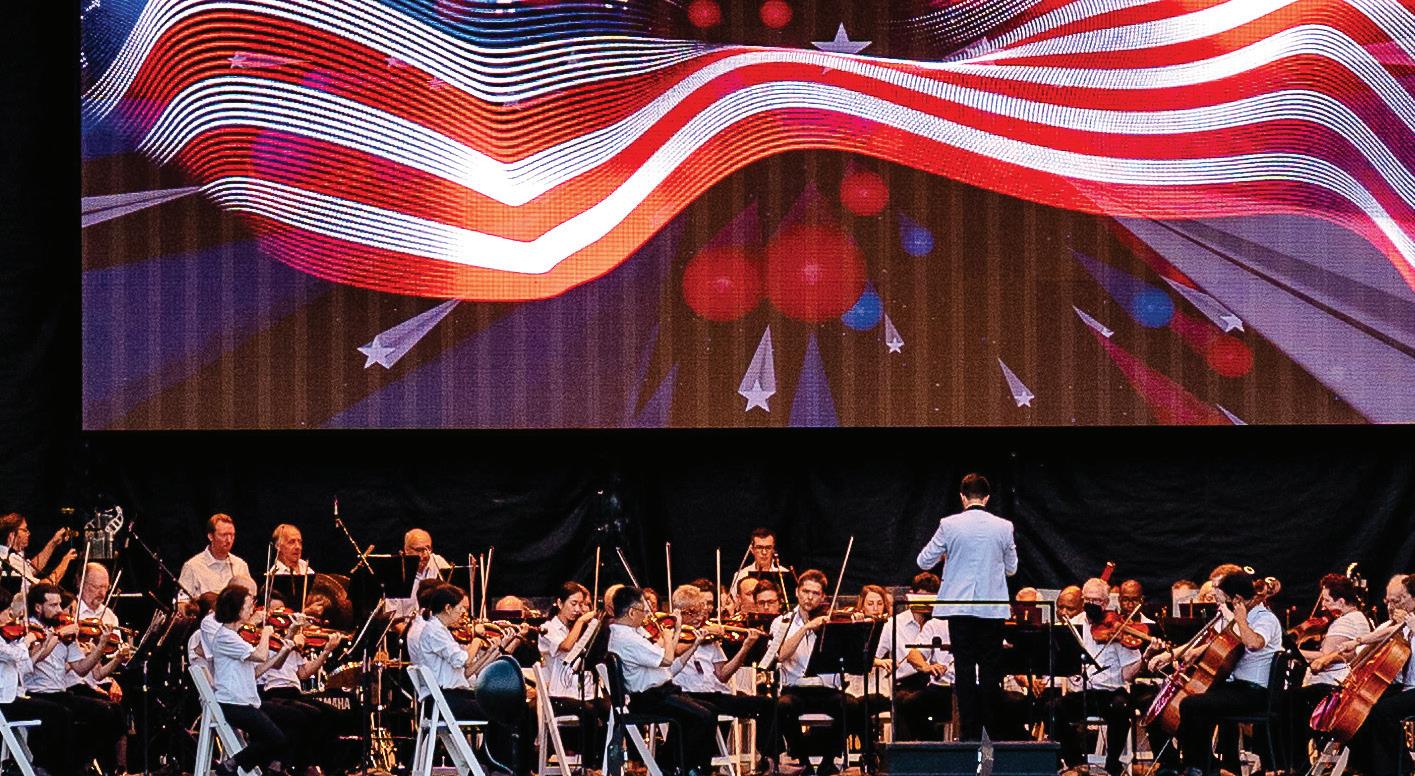














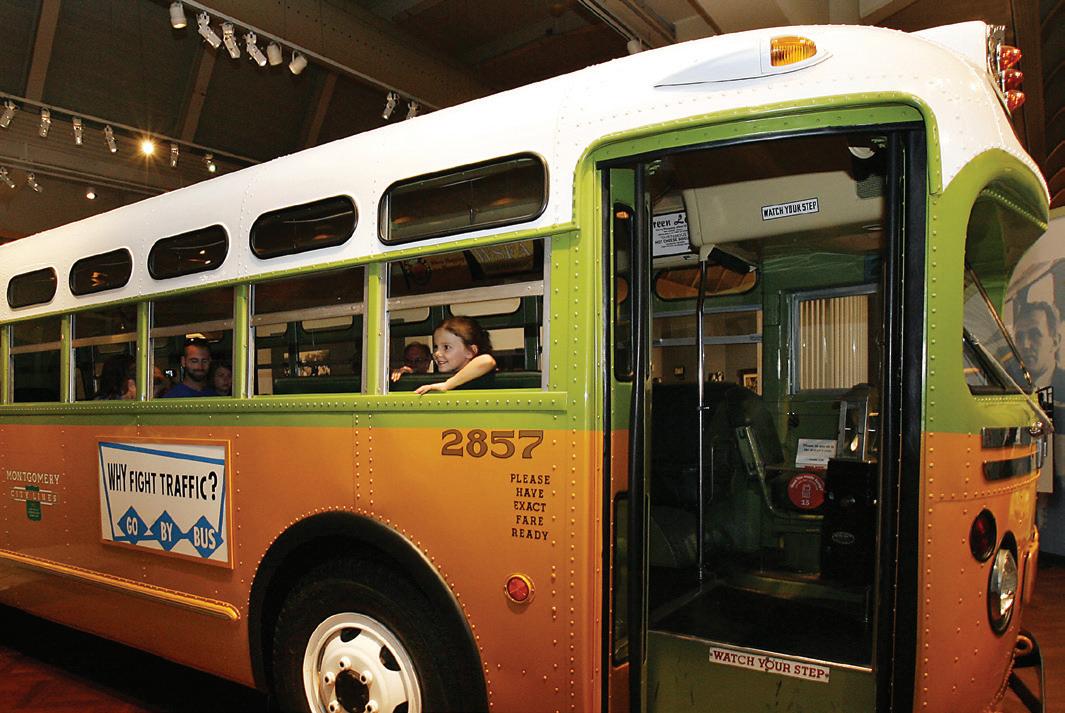
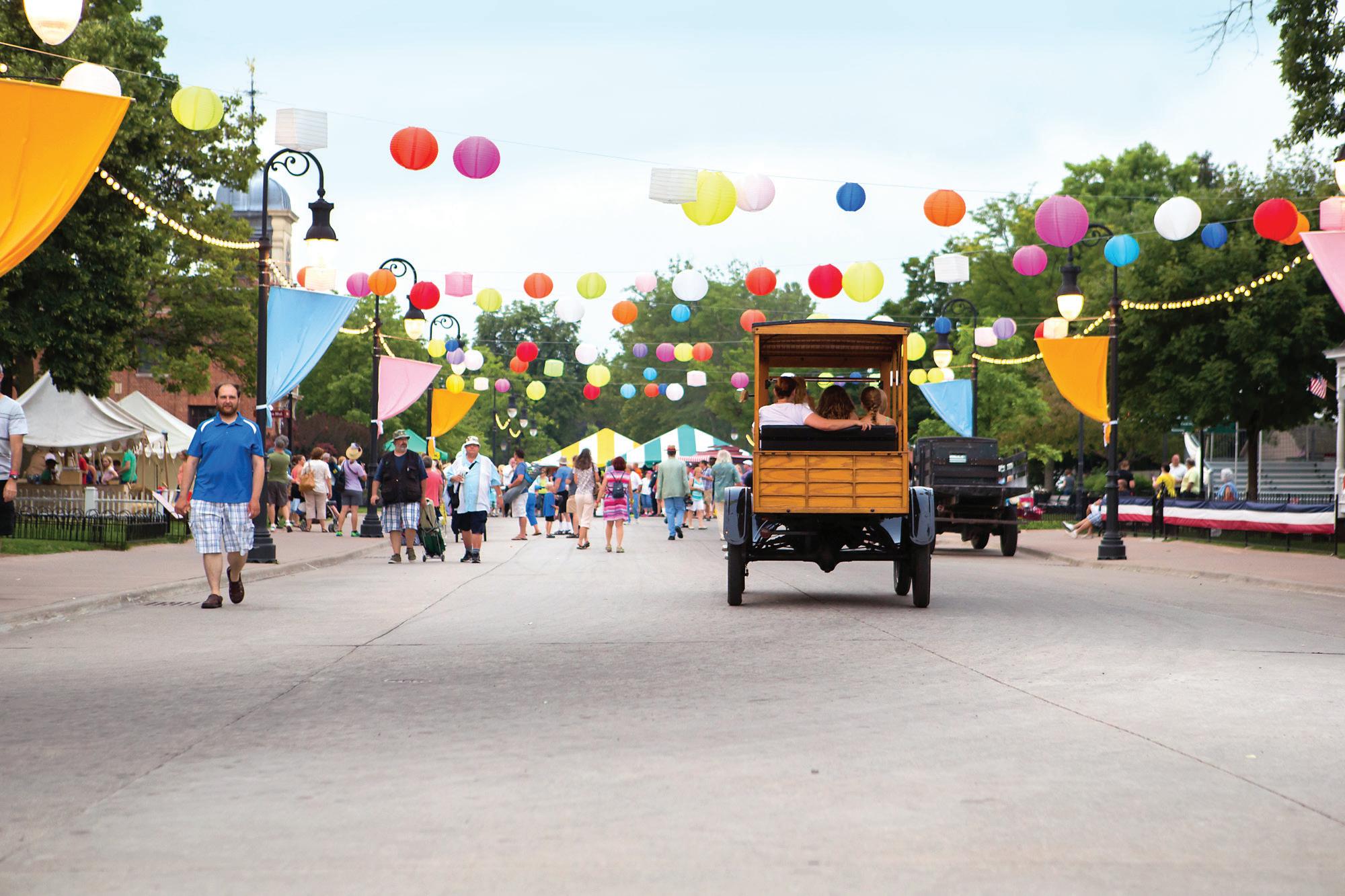





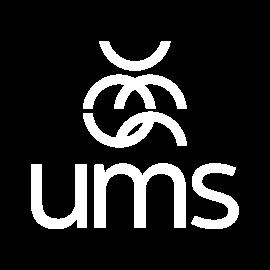


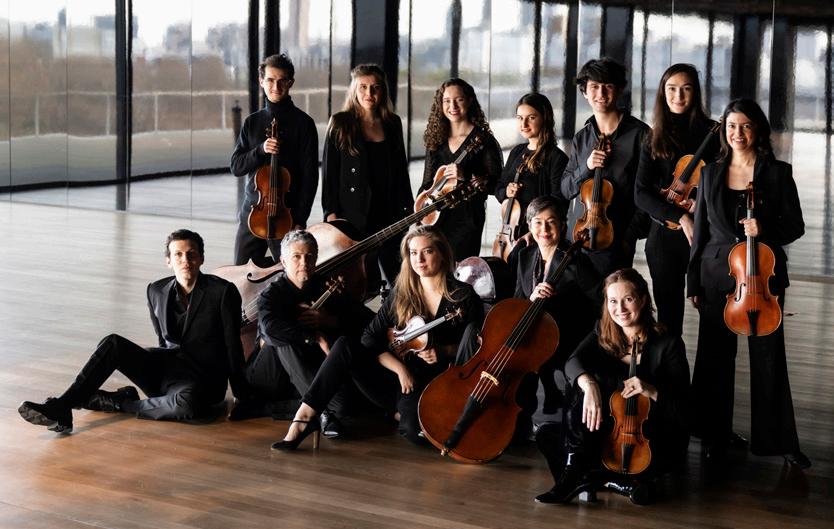


What can we do together? Can we build stronger, healthier communities? Can we make health better by making it better for everyone? Can we impact today and inspire tomorrow? corewellhealth.org/we-can IN THE WORLD OF THE PERFORMING ARTS, THERE ARE NO DIVIDING LINES BUT THE SHARED RHYTHMS AND EXPRESSIONS OF THE HUMAN EXPERIENCE. UMS.ORG — 734.764.2538 THE POWER OF together. 146TH SEASON Season tickets on sale now! Can’t miss performances by Hilary Hahn with the Berliner Philharmoniker, Théotime Langlois de Swarte with Les Arts Florissants, the London Philharmonic, Yunchan Lim, and more!

At the School of Music, Theatre & Dance, you’ll find: ...performing music from traditional to new ...in ensembles featuring strings, winds, piano, percussion, and voice ...at venues on campus and in communities all over Michigan!
Exciting chamber music concerts featuring students, faculty, and renowned guest artists smtd.umich.edu/chamber-music
EXPLORE CHAMBER MUSIC AT MICHIGAN
24 / 25 OPERA SEASON
Detroit Opera invites you to experience four thrilling opera productions with amazing casts, gorgeous music, and inventive sets and costumes. The season includes a brandnew production by Artistic Director Yuval Sharon, delivered in a way that only Detroit Opera can! You don’t want to miss out on the best seats at the best prices. Subscribe today!

LA TRAVIATA
MUSIC | GIUSEPPE VERDI
LIBRETTO | FRANCESCO MARIA PIAVE
DIRECTOR | FRANCESCA ZAMBELLO
CONDUCTOR | ROBERTO KALB
OCT 19 - 27, 2024
RINALDO
MUSIC | GEORGE FRIDERIC HANDEL
LIBRETTO | GIACOMO ROSSI
DIRECTOR | LOUISA PROSKE
CONDUCTOR | ROBERTO KALB
FEB 22 - MAR 02, 2025

COSÌ FAN TUTTE
MUSIC | WOLFGANG AMADEUS MOZART
LIBRETTO | LORENZO DA PONTE
DIRECTOR | YUVAL SHARON
CONDUCTOR | CORINNA NIEMEYER
APR 05 - 13, 2025
THE CENTRAL PARK FIVE
MUSIC | ANTHONY DAVIS
LIBRETTO | RICHARD WESLEY
DIRECTOR | NATAKI GARRETT
CONDUCTOR | ANTHONY PARNTHER
MAY 10 - 18, 2025
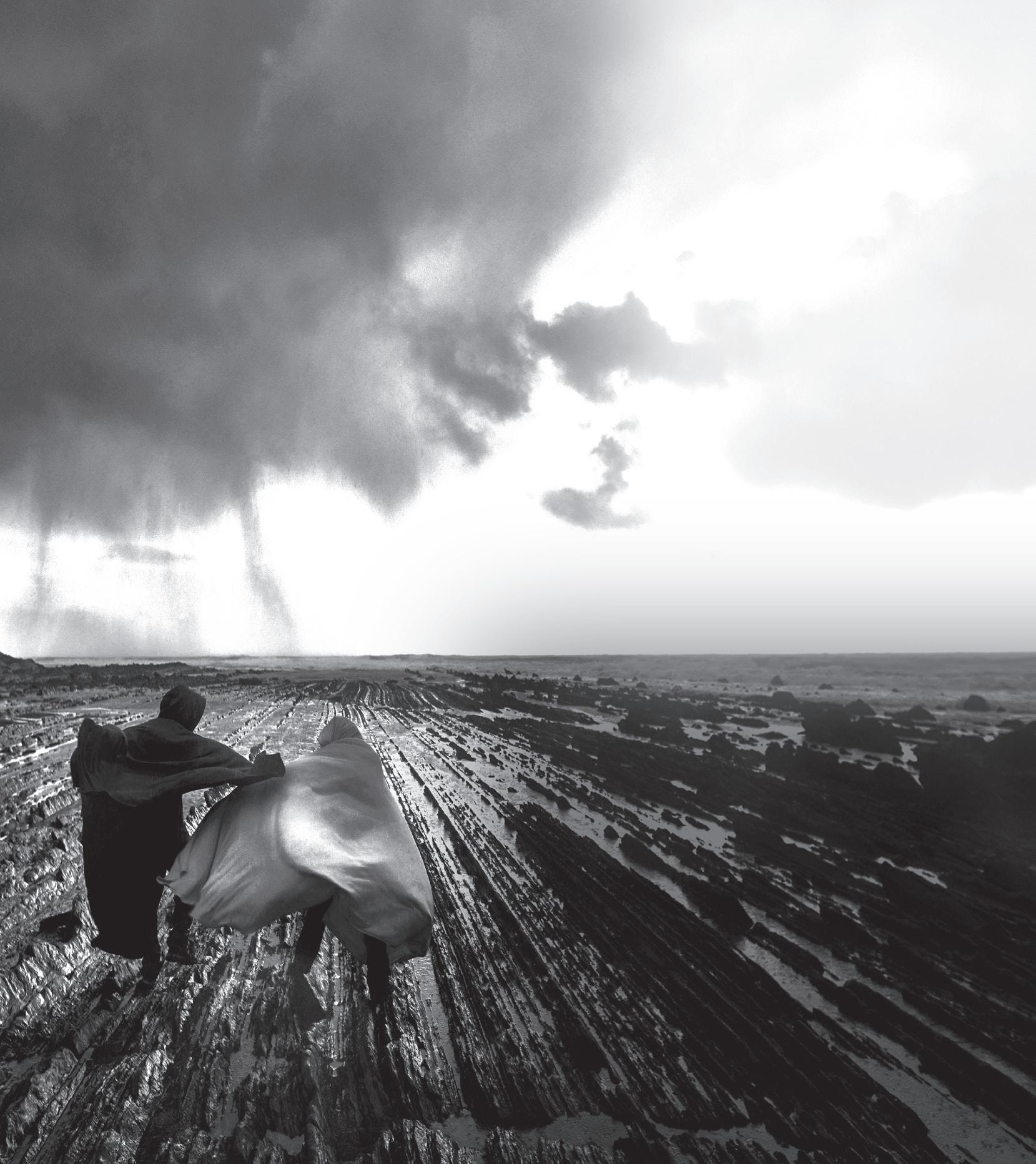
Our attorneys are trustworthy, talented, and operate as a natural extension of your team — your business is our business and our work reflects this value.
313.237.7464 | DETROITOPERA.ORG SUBSCRIPTIONS START AT ONLY $100!
honigman.com
Proud
supporters of the Great Lakes Chamber Music Festival
FRIDAY, JUNE 21 | 7 PM
AUDIO/VISUAL WITH TESSA LARK
Wasserman Projects
Sponsored by Honigman LLP
TESSA LARK, violin
SOJEONG KIM, violin*
YE JIN YOON, violin*
SOHUI YUN, viola*
CONNOR KIM, cello*
JUSTIN SNYDER, piano
PROGRAM
*Member of the Hesper Quartet
Georg Friedrich Telemann Telemann Medley (1681-1767) Lark arr. Tessa Lark
Tessa Lark The Gemini (b. 1989) Snyder
Earl Wild Virtuosic Etude No. 6 based on Gershwin's (1915-2010) "I've Got Rhythm" Snyder
Lark Variations on a Moment Lark
Wiener Laune Lark, Snyder
Fritz Kreisler Syncopation (1875-1962) Lark, Snyder
Antonín Dvorˇák Songs My Mother Taught Me, B. 104, Op. 55 (1841-1904) Lark, Snyder arr. Benjamin Britten
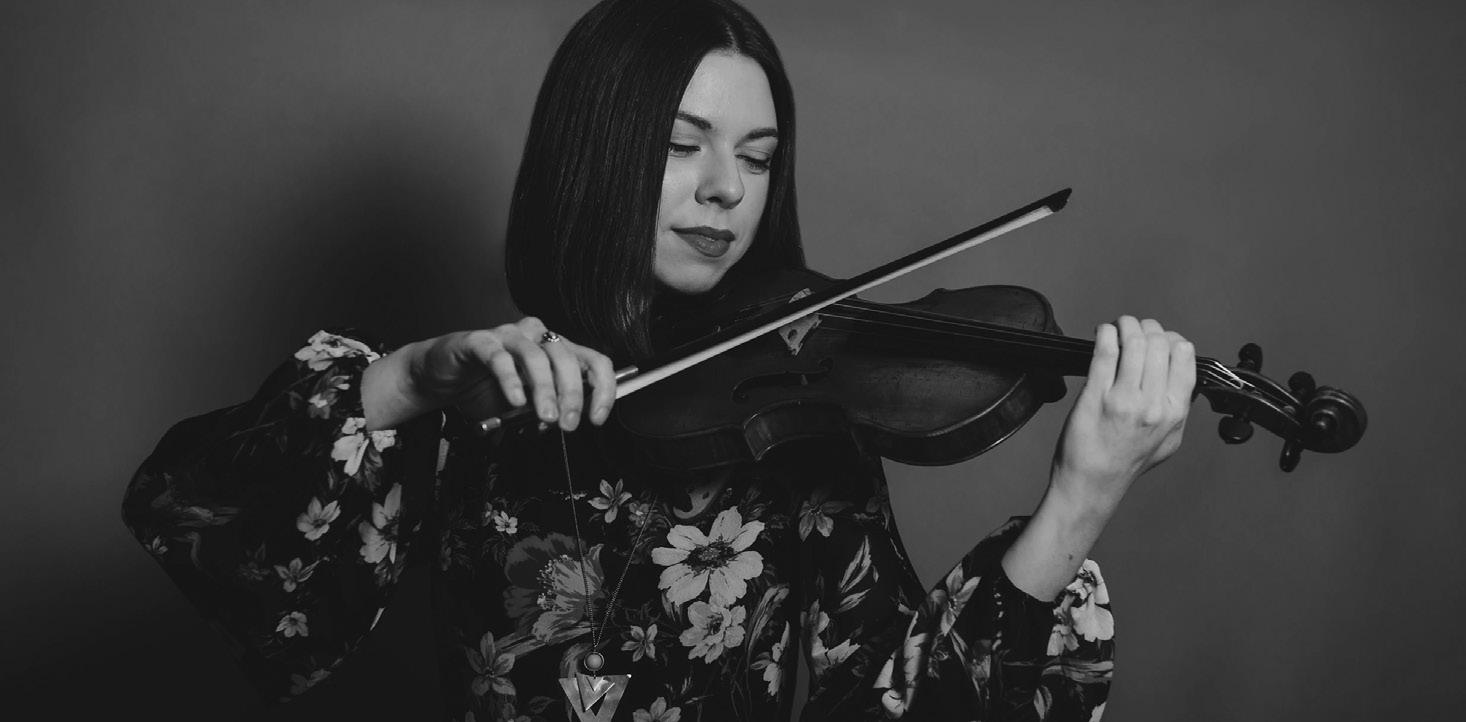
PROGRAM CONTINUED
Eugène Ysaÿe Sonata No. 4 in E minor - Finale (1858-1931) Lark
Lark Ysaÿe Shuffle Lark
Wynton Marsalis At the Octoroon Balls - Hellhound (b. 1961) Hesper Quartet
Mark O'Connor F.C.'s Jig (b. 1961) Lark, Yun
O'Connor Appalachia Waltz arr. O'Connor/ Edgar Meyer Lark, Yun, C. Kim
John Corigliano STOMP (b. 1938) Lark
Danish String Quartet
Selections from Wood Works
11. Jässpodspolska
12. Old Reinlender from Sønndala 2. Sekstur from Vendsysse – The Peat Dance Lark, S. Kim, Yun, C. Kim
33
WEEK TWO | JUNE 21
Tessa Lark
FRIDAY, JUNE 21 | 7:30 PM
FESTIVAL IN RESIDENCE: ANN ARBOR
Kerrytown Concert House
HSIN-YUN HUANG, viola
JESSICA GRABBE, bass
TRIO GAIA, Shouse ensemble
THE DOLPHINS QUARTET, Shouse ensemble
PROGRAM
Han Lash Quintet in Four Movements (b. 1981) Huang, Grabbe, Trio Gaia
Heitor Villa-Lobos String Quartet No. 5, W263 (1887-1959) Poco andantino
Vivo e energico
Andantino – tempo giusto e ben ritmato
Allegro
The Dolphins Quartet
INTERMISSION
Antonín Dvor˘ák String Quintet No. 3, Op. 97 (1841-1904) Allegro non tanto
Allegro vivo
Larghetto
Finale: Allegro giusto
Huang, The Dolphins Quartet
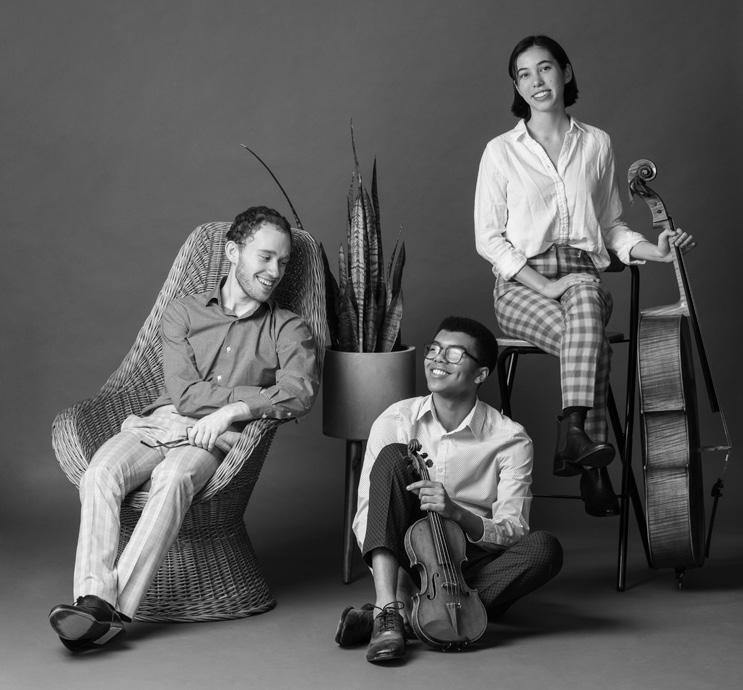
PROGRAM NOTES
Tonight, we’re exploring the theme of the synthetic—and I do mean like fibers. The Greek etymology means “place together,” but I’m more interested in its technical definition: “the production of chemical compounds by reaction from simpler materials,” and the last bit—“simpler materials”—in particular. Synthesis invokes a change in state, whereby something base is, through interaction with another like substance, transformed into a complex but not altogether pure alloy. Which means that, in the case of musical synthesis, “Western Classical Music” has to come down off its high horse. In all three of the works tonight, “Classical Music” is treated as a simple substance in a chemical reaction with an equally balanced force. It is lifted off the pedestal, set on the ground as music plain and simple, and forced to interact with codes of articulation vastly different from but no less valid than its own. What we’ll hear tonight is a serious distancing effect, where the music of Europe is Othered by an equal and opposite force that reveals, by cohabitation, where it still has room to change. As we’ll see, that exchange can uncover some uncomfortable but necessary truths.
Choosing Han Lash as this year’s composer-in-residence was a strategic move. Lash, perhaps more than any other composer of their generation, writes music with a debt to classical history. Having published a technical book on classical counterpoint after years of teaching analysis at the highest collegiate level, Lash has cemented their work as knowable only in the context of its historical expertise. As Lash says, “originality never arrives via the avoidance of the known”—which is to say that, for Lash at least, “new” music can come only by working through the past.
True to form, the four movement Quintet keeps a steady side-eye towards three longdead composers (who have all received extensive treatment in this year’s festival). On the surface, Schubert carries the most heft: the instrumentation is lifted straight out of his popular “Trout” Quintet, while the four-movement formal model is an express nod to his last three piano sonatas, each of which contain an extra middle movement. The material itself, however, owes more to Bartók. Lash maneuvers a highly delimited musical isomorphism—meaning the micro-cycle of intervals is mapped onto the governing macro-structure—that betrays a studious attention to the Hungarian’s models of pitch-form relation. And, finally, the Quintet deploys a distinctly Beethovenian model of borrowing, in which early movement material makes surprise returns later on (in our ongoing exploration of the cello sonatas, this has become especially clear).
What Lash is doing—and this is characteristic of their entire of body of work—is treating the very idea of “European Classical Music” as a kind of synthetic fabric with the capacity to be rewoven. Classicism’s modes of organization, instrumentations, behavior patterns, and language are all the same; but a clinical and analytic mind is working to parse out how and why this music operates like it does and then piece it back together again anew. This methodical process allows Lash—and we’ll hear this all over the Quintet—to discover surprising moments of emotion in the tiniest interaction of a note with any other. But these moments, rather than arriving by a kind of subjective expressive investment on the part of the composer, come through the echoes of history. Emotion here is a surgical reconstruction: we hear them as expressive by proxy of our cultural training to do so, and not, as in their historical context, by content. Lash is using composition as a mode of deconstructivist inquiry,
34
TWO | JUNE
WEEK
21
Trio Gaia
as a means of studying—in a controlled, synthetic environment—how the syntactic codes of Classical and Romantic history may be deployed to more rational ends.
Both the Brazilian Villa-Lobos and Czech Dvor˘ák, meanwhile, distance “Western Classical Music” by placing it in alongside other, more localized forms of musical expression. Both works were written at moments of homecoming: Villa-Lobos tackled the fifth quartet within months of his long-awaited return to São Paulo after a sojourn to Paris, and Dvořák wrote the third quintet (having only just finished his “American” twelfth quartet) in the first month of his stay in Spillville, Iowa, where he was finally reunited with his family and a community of Czech speakers after a long period of isolation in New York. As a result, both works—written under significant geographical separation from classical music’s mainland—see Europe from a distance: the strictures of Classical Music are displaced as secondary by an allegiance to the music of their surroundings. The differences in how they do so, however, reveal the possible dark side of synthetic amalgamations.
Villa-Lobos subtitled the fifth quartet Quarteto popular; this is a reference to the Brazilian melodies and rhythms that flood its waters, including, in the final movement, the children’s song O Bastão ou mia gato (“The Stick or a Cat’s Meow”). This synthetic hybrid of classical and folk enacts weird transformations on the medium’s codes of articulation: the fifth quartet is constantly bending time. Where standard classical music loves to economize tempo—rubato only permissible in the final moments of a cadence—music of the South American street plays with whimsy and an uncanny plasticity of time (think of organ-grinders whose music changes speed with each rotation). Villa-Lobos, by nestling his musical birthright into the world of classical music proper, stretches the four-movement form of the classical quartet into a pliable putty that pushes, pulls, and breathes with the elastic freshness of instinctive music-making.
Dvor˘ák, too, borrows liberally from the Indigenous music in his surroundings. During his time in Iowa, the Czech composer became fascinated with the Iroquois People native to the land, and that influence inscribed itself in both the second movement’s percussive ostinato, meant to replicate Indigenous drumming patterns, and the pentatonic melodies that crop up across the work. This borrowing, however, is not equatable with Villa-Lobos. The Brazilian is lifting from his homeland; Dvor˘ák is a temporary resident of European descent fetishizing an already discriminated American Other whose “simple” musical traditions he feels entitled to take as his own. (And not for the first time; the “American Quartet” was temporarily monikered after a racial slur for Black Americans.)
While imitation is often joked about as being the sincerest form of flattery, tonight’s quintet calls attention to shifting historical attitudes regarding what is inspiration and what is downright stealing. Dvor˘ák, it’s worth acknowledging, never sinks to an overt model of value importation by mimicry—he always weaves his source material through his own language—but the fact that Indigenous music is here at all commemorates a less-than-glorious time when classical music still believed it had a right to take without acknowledgement from anything it considered “lowbrow.” Villa-Lobos, on one hand, demonstrates the potential freedom and revelation that these synthetic reactions can bring about when undertaken in good faith; Dvor˘ák, meanwhile, teeters on the ragged edge of danger that any cultural synthesis risks: something ecologically precious is at risk of misuse and ruin, and though the product is so unabashedly beautiful, we have to face that legacy head-on and learn to enjoy the work’s displays of invention with a bit of critical distance. © Ty Bouque 2024
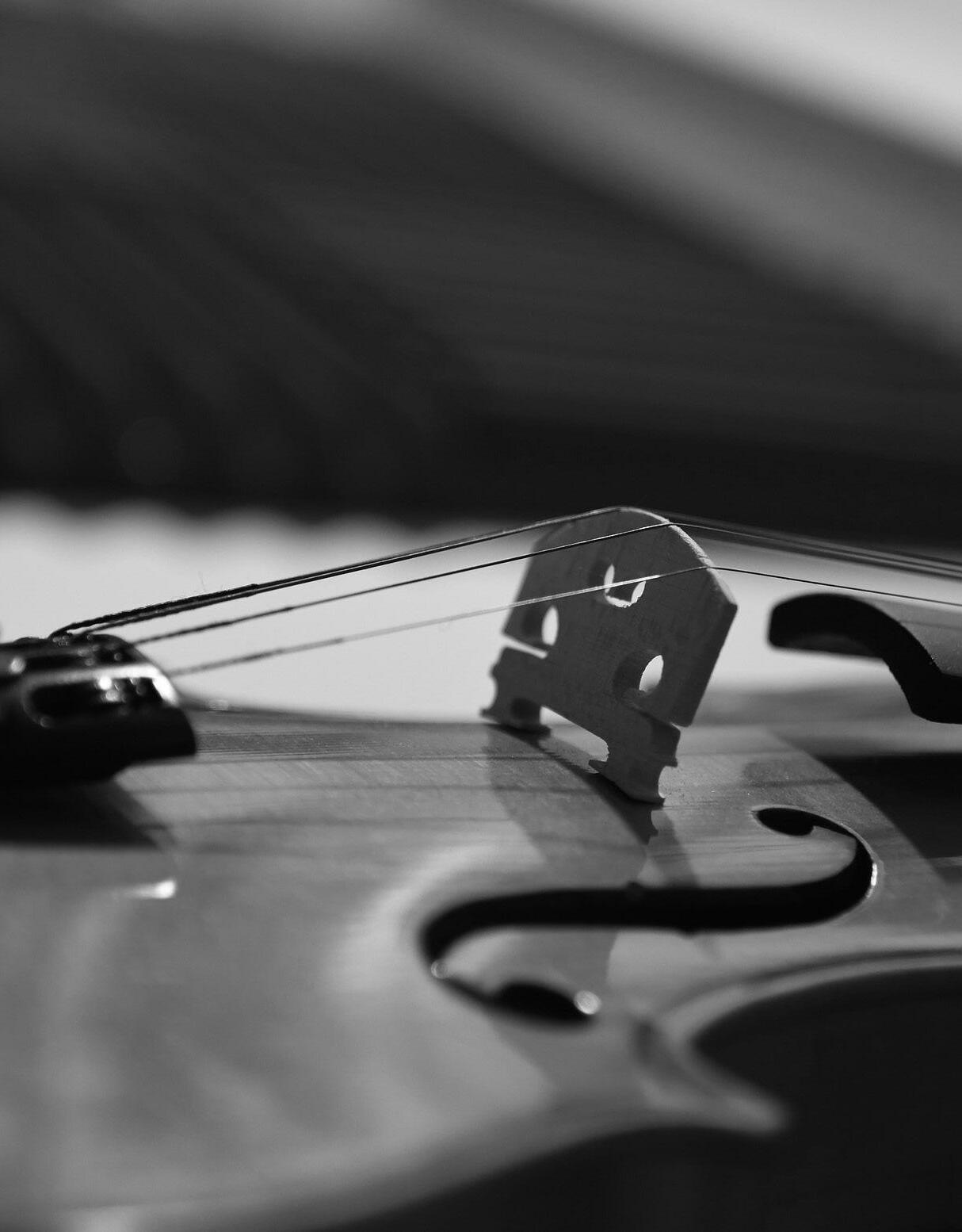




35 WEEK
TWO | JUNE 21
(888) 451-0949 DRIVEN TO EXCELLENCE: GLASSMAN AUTOMOTIVE GROUP PROUDLY SUPPORTS OUR FRIENDS AT THE GREAT LAKES CHAMBER MUSIC FESTIVAL! glassmanautogroup.com 28000 Telegraph Road, Southfield, MI 48034 GLASSMAN AUTOMOTIVE GROUP SINCE 1969
SATURDAY, JUNE 22 | 7 PM
CREATIVE PERFECTION
Seligman Performing Arts Center
Sponsored by Linda & Maurice Binkow
ALESSIO BAX, piano
TESSA LARK, violin
PHILIP SETZER, violin
HSIN-YUN HUANG, viola
PAUL WATKINS, cello
MICHAEL COLLINS, clarinet
PROGRAM
Robert Schumann Märchenerzählungen (Fairy Tales), Op. 132 (1810-56)
Lebhaft, nicht zu schnell
Lebhaft und sehr markiert
Ruhiges Tempo, mit zartem Ausdruck
Lebhaft, sehr markiert
Collins, Huang, Bax
Ludwig van Beethoven Sonata for Piano and Cello No. 3 in A major, (1770-1827) Op. 69
Allegro, ma non tanto
Scherzo: Allegro molto
Adagio cantabile – Allegro vivace
Bax, Watkins
INTERMISSION
W. A. Mozart Clarinet Quintet in A major, K.581 (1756-91) Allegro
Larghetto Menuetto
Allegretto con variazioni
Collins, Lark, Setzer, Huang, Watkins
Performance Sponsors
Beethoven Sonata No. 3 | Gail & Ira Mondry
Presenting Sponsor of Beethoven Complete Cello Sonatas | David Nathanson
RECEPTION: PAUL WATKINS' DECADE OF CREATIVE CONNECTIONS
GLCMF invites you to meet the artists at a special reception in the Seligman lobby.
Call 248-559-2097 for more information.
Donation to attend is $50 per person.
PROGRAM NOTES
For the opening night program of this year’s festival, I wrote that creative perfection is an essentially utopian vision; that the work of the artist is in striving towards perfection’s impossible attainment; and that creative labor is neither a finished nor unfinished quest, it simply is. I stand by what I said then. I’m increasingly convinced that what moves us as listeners is not achievement but its exercise: something about the risk involved in reaching towards the unknown is more transcendent than the simple actualization of what’s available. We are drawn to horizons, to dreams of what might be.
Tonight, we’re closing the festival with three of the most well-trodden works of classical music’s heyday. Mozart, the oldest composer on the program, was born in 1756; Robert Schumann, the youngest, died in 1856. Between them lies a century, broadly considered to be the “golden years,” during which classical music was at its most productive and successful, and from which a majority of our standard repertoire is drawn.
That status comes at a cost. Because they have survived the “test of time,” these most popular works are vulnerable to the trap of the “masterpiece myth”: to characterize them today, we rely on a hyperbolic language—perfect, transcendent, genius—to account for their imported historical or social value, a language that only undermines nuanced or objective discussion of each work’s idiosyncratic qualities. And/Or: we assume that, because they have lasted this long, they must be unimpeachable. This instinctive language of greatness does a disservice to the individual works of art. The very fact that we continue to enjoy them speaks not to some singular eternal truth but rather to their changeable significance. As the best art does, they adapt alongside us, offer room for new discovery of what it means to be human in their details. That they have changed—they are still here, and loved for different reasons than they were when they premiered—negates the very meaning of “perfection,” which is “complete”: if they were simply perfect, they’d have stayed frozen in time.
So tonight, under the guise of these three pieces, I want to think—however briefly— about the paradox of perfection and the crucial role we play in its completion.
Triple Variation on a Theme
36 WEEK TWO | JUNE 22
It means wholeness. That’s all it means; or, rather, it is all that it means, as in complete, entire. A perfect stranger, we say, signifying total. It means wholeness, that’s all it means.
The Märchenerzählungen number among the last of Schumann’s catalogue, foisting an odd instrumentation from Mozart’s Kegelstatt Trio into his unabashedly Romantic idiom. The title means, literally, Fairy Tale Narration—each of the four short movements depicts a kind of scenographic journey—but Schumann is intentional about avoiding prescriptive references. A narration requires a recipient; the story is for us to decide.
The music is thus not perfected—not whole—without a listener. [Though it may seem obvious, that point is crucial; a Bach Fugue might be said to be structurally perfect independent of any hearing, but the same is not true here.] As music alone it is effective—a concise economy of engaging themes in each of the first three movements that return, circle-like, in the fourth—but never groundbreaking. Instead, the success of the work exists in its activation and reception, in the very moment it translates across the lip of the stage into an attendant imagination trained by cultural and historical association to equate certain sonorities with images. Our hearing of the music and engaging with its symbolism thus completes it: perfection depends on the quality of our attention.
It means wholeness. That’s all it means. But “complete” is difficult to measure. Beethoven’s middle cello sonata—tonight’s performance completes our cycle of the five—is the showpiece of his “Heroic Period,” the astonishing sequence of productive years in which the “Eroica” Symphony, the “Razumovsky” quartets, Fidelio, and the Violin Concerto arrive. Two traits are often attributed to the Third Sonata as a result: 1) it perfected the equilibrium of labor between piano and cello; and 2) it perfectly encapsulates a new idealism away from sectional composition and towards a linear model of development. The trait not attributed is that it is a perfect sonata. It is not one. Which is why it works; if it stuck exclusively to the rulebook, the result would never be this gorgeous.
No, Beethoven is only capable of hazarding the radical models of formal growth and instrumental balance because he throws into the recipe far more than he “needs.” There is more material here than an ordinary sonata would ever have, would ever be capable of holding: There are endless odd bars, subversive phrases in weird places, extra codas, trick key changes, trapdoors, even a whole extra trio in the scherzo. It is a work of emotional and musical excess that lingers at the limit of what the “sonata” as an idea is meant to be.
As with all Beethoven, the demand it places on performers is of imagination. This is an unwieldy and impossibly variegated form which could easily sound clumsy or confusing with an uninvested performance. [Though it may seem obvious, that point is crucial. A Mozart sonata can survive a blunt rendition; the same is not true here.] Execution is not enough. To make all this stuff feel unified before us, the players have to leave a piece of themselves inside the music. To make more-ness whole, they, too, have to add.
end, backwards, with the first: Mozart singlehandedly inaugurated the genre in 1789, when the Stadler 9-key-basset horn—the instrument for which the work was written— was only twenty years old.
Complete would seem to suggest closed. But Brahms and Weber and ColeridgeTaylor all write clarinet quintets after this, and all of them—every single one—point to the Mozart as a primary inspiration. The work is certainly a marvel, an endless stream of invention that glitters with an automaton’s formal precision; there is very little to find wrong in the work. But all these later routes of opportunity, sparks of inspiration, epiphytic offshoots that grow from its ideas would seem to indicate that true perfection also leaves room for other possible futures. It does so—and this is Mozart’s calling card—not by exhausting every possible angle but by restricting itself to a highly rigorous logic and seeing that through to the bitter end.
The Mozart Quintet is complete by not promising to be everything. [Though it sounds obvious, that point is crucial; a Mahler Symphony speaks at the scale of a planet; the same is not true here.] Instead, it picks the tiniest sliver—a simple chorale and an arpeggio, a small melodic arch, a dance—and weaves it into a self-contained world that still leaves ample room for others to find their own way.
The paradox of artistic perfection is this: to be whole, it must permit itself an emptiness. In that space flows everything the work can never know: it must, in short, leave room for us. The joy of these three works—why we come back to them again and again—is the invitation they extend to renegotiate our changeable humanity alongside them. They are made perfect by proffering (here’s the paradox) an absence, and it is only when a perfect stranger accepts that humble offer that they—and, perhaps, we too—are made briefly whole again. © Ty Bouque 2024
It means wholeness. That’s all it means. But can the first of its kind ever be called complete? Tonight is our last inquisition into the medium of the clarinet quintet. We

37 WEEK TWO | JUNE
22
The Dolphins Quartet
COMMUNITY ENGAGEMENT EVENTS
The Great Lakes Chamber Music Festival remains dedicated to promoting the arts to its surrounding community through performances, workshops and collaboration.
JUNE 14 | LUNCH AND LEARN WITH MERIDETH HITE ESTEVEZ
The Youthful Inspirations concert will be followed by a reception with Festival Artist Merideth Hite Estevez at 1 p.m.
Admission is included with a ticket to the Youthful Inspirations concert.
General $40 | Student $15
JUNE 17 | BEYOND THE NOTES: MUSIC MEETS MINDFULNESS (YOGA)
Enjoy a 60-minute yoga class for every body with yoga maestra Gail Mondry, accompanied by the Amnis Piano Quartet.
General $20 | Student $15
JUNE 21 | LUNCH AND LEARN WITH SABRINA NELSON
The Groundbreaking Originals concert will be followed by a reception with Festival Visual Artist Sabrina Nelson at 1 p.m.
Admission is included with a ticket to the Groundbreaking Originals concert.
General $40 | Student $15
SYMPOSIUM AT WSU MEDICAL SCHOOL | CLOSED EVENT
Sponsored by the Charles H. Gershenson Trust
Members of the Shouse Institute will present a workshop to students in the Wayne State University School of Medicine. In partnership with WSU faculty, the musicians will perform and demonstrate how they communicate nonverbally. The goal is to create an opportunity for medical students to observe and learn lessons in nonverbal communication, an “art form” in which chamber musicians must excel to survive.
ACCENT PONTIAC PERFORMANCE AND WORKSHOP | CLOSED EVENT
A Shouse ensemble will host a workshop for Accent Pontiac students, helping them realize their own compositions and interpret each other’s works. Accent Pontiac focuses on strengthening Pontiac’s youth and community through equitable access to intensive and consistent music-making.
SENIOR CENTERS OF WAYNE & OAKLAND COUNTY | CLOSED EVENTS
Sponsored by the Mary Thompson Foundation and the Phillip and Elizabeth Filmer Memorial Charitable Trust
In line with our efforts to expand our Great Lakes family, the Festival is resuming satellite performances at Senior Centers across Southeastern Michigan. Out of an abundance of caution, these events had to be paused during the height of the pandemic, but are now returning thanks to our generous supporters. During these special events Shouse ensembles will perform and engage with the seniors in our community.
ARTISTIC ENCOUNTERS
Bloomfield Township Public Library
1099 Lone Pine Road, Bloomfield Township, MI 48302
FREE|Register at greatlakeschambermusic.org/artistic-encounters
The Catherine Filene Shouse Chamber Music Institute, led by violinist Philip Setzer, provides a platform for emerging professional ensembles. Artistic Encounters are public coachings for Shouse Institute fellows in a setting similar to a masterclass. You are invited to attend these Artistic Encounters to get a behind-the-scenes look at what it takes to be a professional musician.
TAI MURRAY
| JUNE 10 AT 11 AM
Sponsored by Kathleen Block
PETER WILEY | JUNE 12 AT 11 AM
Sponsored by Shoula Stefos & Mark Schumacher
HSIN-YUN HUANG | JUNE 17 AT 11 AM
Sponsored by Kathleen Block
MUSICAL CHAIRS WITH PHILIP SETZER | JUNE 19 AT 11 AM
Sponsored by Isabel & Lawrence Smith
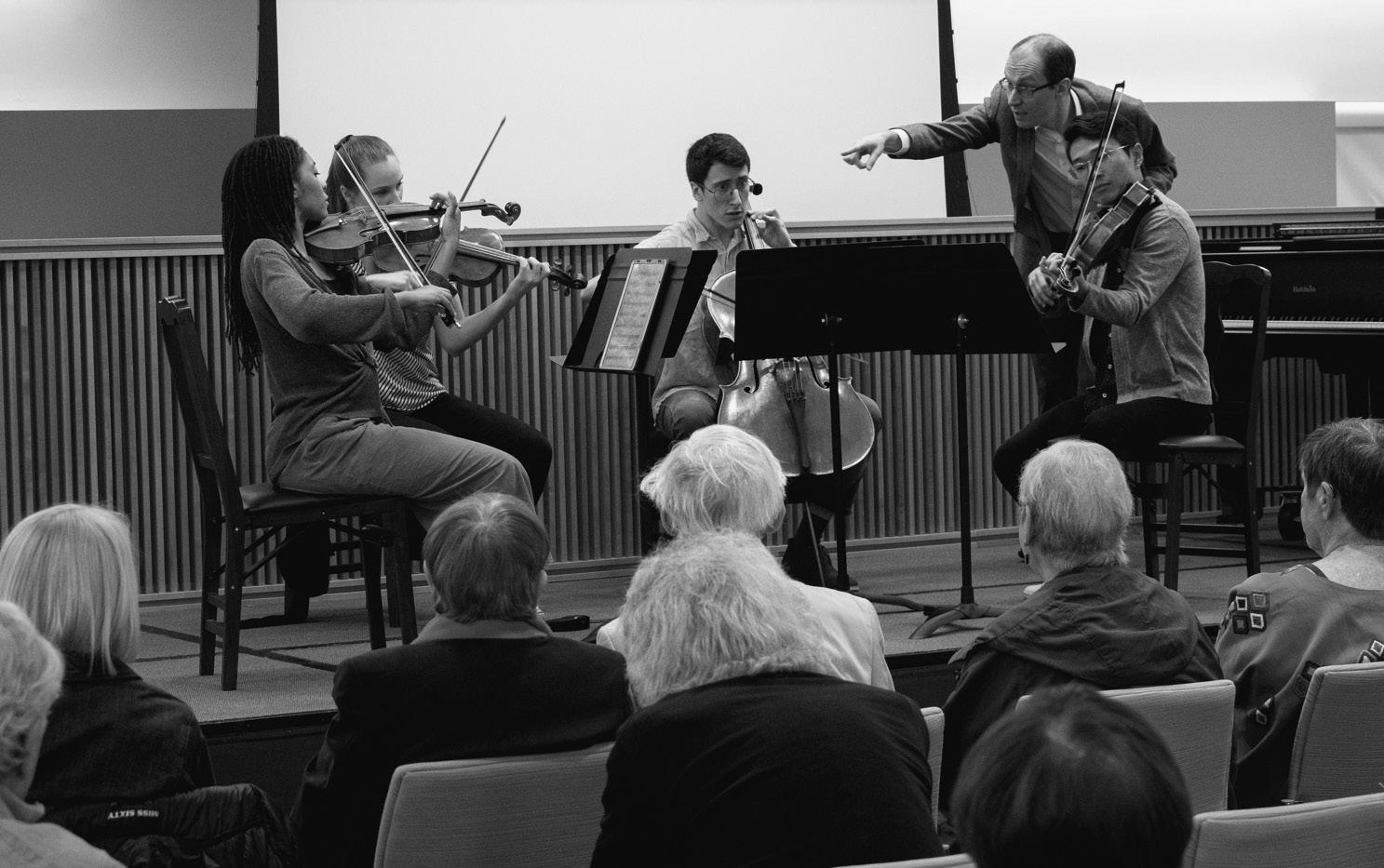
38
Artistic Encounters
COMMUNITY ENGAGEMENT EVENTS
CHILDREN'S CONCERT
Bloomfield Township Public Library
1099 Lone Pine Road, Bloomfield Township, MI 48302
ACCENT PONTIAC BUCKET BAND | JUNE 15 AT 11 AM
Sponsored by Gwen & S. Evan Weiner
Join Accent Pontiac for a children's music workshop. Their instruction includes percussion lessons using drumsticks and buckets. These "bucket bands" learn rhythmic skills and percussion techniques. More importantly, participants experience what it is like to be part of an ensemble, sharing responsibility and pride with each other.
Admission is free; all ages are welcome.
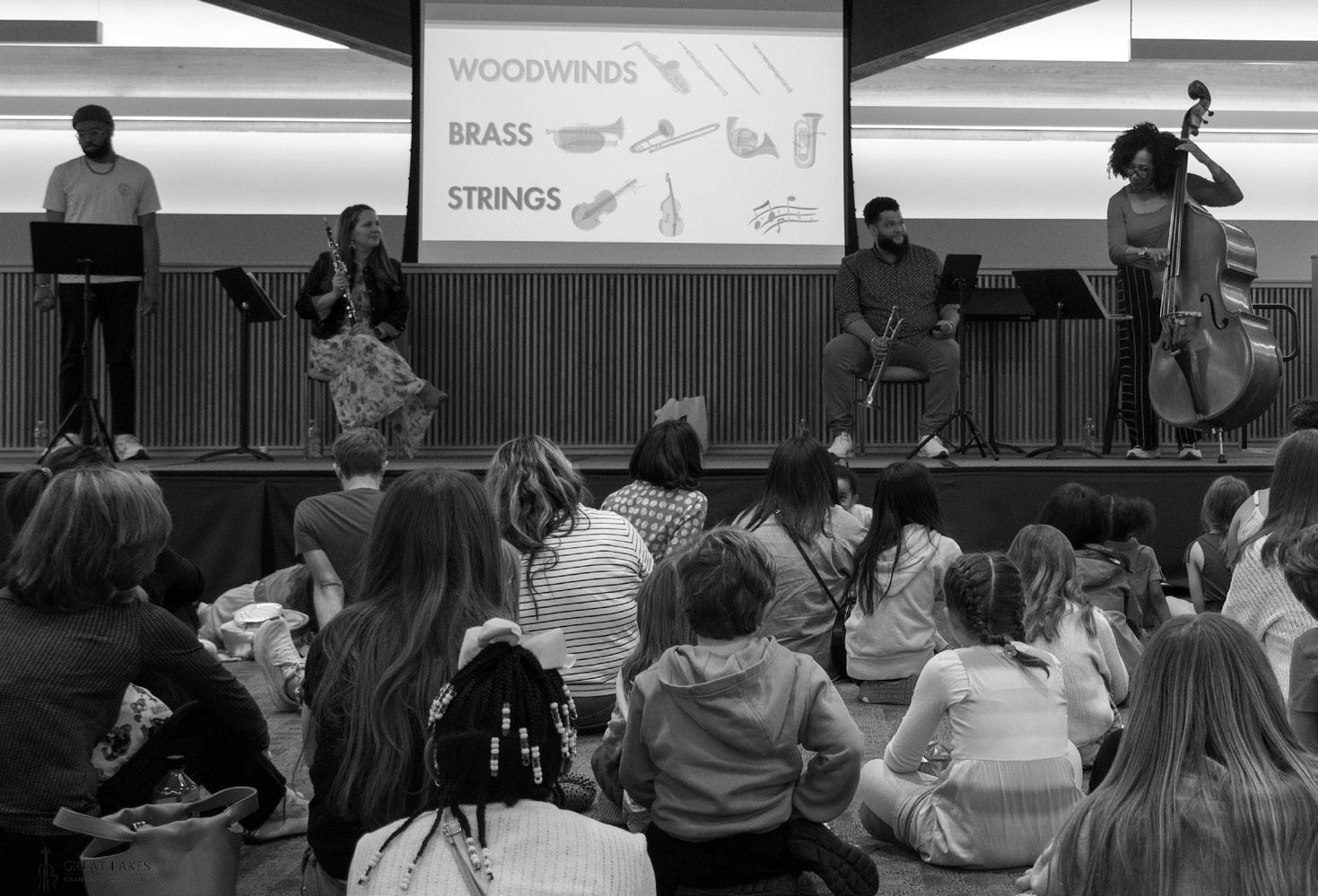

FESTIVAL STORIES
Enjoy our innovative collection of virtual programming online by visiting us at: https://greatlakeschambermusic.org/watch-and-listen/
Content and community beyond the Festival's live events

The Festival Stories showcase programming from previous Festival seasons! Interwoven with behind-the-scenes footage and interviews, we are taking viewers beyond what is typically accessible at live events. Enjoy the passion and artistry that moves us to collectively experience the fullest range and depth of emotion with every crescendo, turn of the page, and stroke of the bow.

39
GreatLakesChamberMusicFestival GLCMF GLCMF
The Musical Elements Children's Concert occurred before the Festival on April 28. This concert was sponsored by Gwen & S. Evan Weiner. Musical Elements is an educational program curated by Detroit Chamber Winds & Strings.
FESTIVAL ARTISTS

PAUL WATKINS
Artistic Director, cello, conductor
Sponsored by Gail & Ira Mondry
Acclaimed for his inspirational performances and eloquent musicianship, Paul Watkins enjoys a remarkably varied and distinguished career as soloist, chamber musician and conductor. He is the Artistic Director of the Great Lakes Chamber Music Festival and in 2019, he was appointed Professor of Cello at the Yale School of Music.
He has performed as concerto soloist with prestigious orchestras throughout the world under eminent conductors including Bernard Haitink, Paavo Berglund, Leonard Slatkin, Sakari Oramo, Gianandrea Noseda, Sir Mark Elder, Sir Andrew Davis, Sir Charles Mackerras, Andris Nelsons, Edo de Waart, Hannu Lintu and Vasily Petrenko.
A dedicated chamber musician, Watkins was a member of the Nash Ensemble from 1997 until 2013, when he joined the Emerson String Quartet. With the quartet he traveled extensively, performing at major international festivals including Tanglewood, Aspen, Ravinia, Edinburgh, Berlin and Evian, and has collaborated with artists such as Emanuel Ax, Yefim Bronfman, Evgeny Kissin, Renée Fleming and Barbara Hannigan. He is a regular guest artist of the Chamber Music Society of Lincoln Center.
He took first prize in the 2002 Leeds Conducting Competition and has held the positions of Music Director of the English Chamber Orchestra and Principal Guest Conductor of the Ulster Orchestra. In recent seasons, he made his conducting debuts with the Minnesota Orchestra, Detroit Symphony and Omaha Symphony.
His extensive discography as a cellist includes over 70 recordings, including 18 solo albums for Chandos. His first recording as a conductor, of the Britten and Berg violin concertos with Daniel Hope, received a Grammy nomination.
Watkins plays on a cello made by Domenico Montagnana and Matteo Goffriller in Venice, c.1730.

PHILIP SETZER
Shouse Institute Director, violin
Sponsored by Isabel & Lawrence Smith
Philip Setzer, a founding member of the Emerson String Quartet, began studying violin at the age of five with his parents, both former violinists in the Cleveland Orchestra. He continued his studies with Josef Gingold and Rafael Druian and later at the Juilliard School with Oscar Shumsky.
Currently serving as the Distinguished Professor of Violin and Chamber Music at SUNY Stony Brook, Setzer was appointed as the Artistic Director of the Manchester Music Festival in Vermont and started his tenure in October 2023. A visiting Professor of Violin and Chamber Music at the Cleveland Institute of Music, Setzer has also been bestowed the title of Artistic Director of Strings Chamber Music. As a regular faculty member of the Isaac Stern Chamber Music Workshops at Carnegie Hall and the Jerusalem Music Center, Setzer wrote an article about those workshops that appeared in The New York Times on the occasion of Isaac Stern's 80th birthday celebration in 2000.
In 2016, Setzer teamed up with writer-director James Glossman for the Emerson’s music/theater project, Shostakovich and the Black Monk: A Russian Fantasy. Premiered at the Great Lakes Chamber Music Festival, Black Monk has been performed at the Tanglewood Music Festival, Princeton University, Wolf Trap, Ravinia Festival, Lotte Concert Hall, and Stony Brook University. Setzer has also been, and will continue, touring and recording the piano trio repertoire with David Finckel and Wu Han. He plays a violin made for him in 2011 by Samuel Zygmuntowicz.
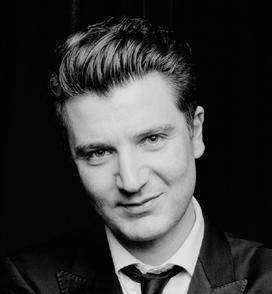
ALESSIO BAX piano
Sponsored by Jill & Steven Stone
Combining exceptional lyricism and insight with consummate technique, Alessio Bax is without a doubt “among the most remarkable young pianists now before the public” (Gramophone). He catapulted to prominence with First Prize wins at both the Leeds and Hamamatsu International Piano Competitions, and is now a familiar face on five continents, not only as a recitalist and chamber musician but also as a concerto soloist who has appeared with more than 150 orchestras, including the London, Royal, and St. Petersburg Philharmonic Orchestras, the Boston, Dallas, Cincinnati, Sydney, and City of Birmingham Symphony Orchestras, and the NHK Symphony in Japan, collaborating with such eminent conductors as Marin Alsop, Vladimir Ashkenazy, Sir Andrew Davis, Sir Simon Rattle, Yuri Temirkanov, and Jaap van Zweden. Bax constantly explores many facets of his career. He released his eleventh Signum Classics album, Italian Inspirations, whose program was also the vehicle for his solo recital debut at New York’s 92nd Street Y as well as on tour. He embarked on a trio tour of Spain with violinist Joshua Bell and cellist Steven Isserlis. Bax and his regular piano duo partner, Lucille Chung, gave recitals at New York’s Lincoln Center and were featured with the St. Louis Symphony and Stéphane Denève. He has also presented the complete works of Beethoven for cello and piano with cellist Paul Watkins in New York City.
40
FESTIVAL ARTISTS
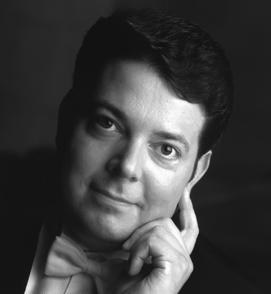
ANDREW LITTON
piano
Sponsored by Adrienne & Herschel Fink
Pianist and director Andrew Litton currently sits as the music director of the New York City Ballet, earning praise from critics, dancers, and audiences, bringing new prominence to the Ballet’s orchestra. He began his ballet work while still a Juilliard student, performing as on-stage pianist for Rudolf Nureyev, Natalia Makarova, and Cynthia Gregory. He is also Conductor Laureate of the Bournemouth Symphony Orchestra and was previously Music Director Laureate of Norway’s Bergen Philharmonic, which under his leadership, gained international recognition through extensive recording and touring, making debuts at the BBC Proms, at Amsterdam’s Concertgebouw, and appearances at Vienna’s Musikverein, Berlin’s Philharmonie, and New York’s Carnegie Hall. For his work with the Bergen Philharmonic, Norway’s King Harald V knighted him with the Norwegian Royal Order of Merit.
In addition to conducting over fifty performances at the New York City Ballet, Litton returns regularly to the Singapore Symphony Orchestra (where he is a former Principal Guest Conductor), Bournemouth Symphony Orchestra and Bergen Philharmonic Orchestra, and guest conducts with a wide range of international orchestras, including the BBC Symphony Orchestra and the Royal Swedish Orchestra.
An accomplished pianist, Litton often performs as piano soloist, conducting from the keyboard. An acknowledged expert on George Gershwin, he has performed and recorded Gershwin widely as both pianist and conductor and serves as advisor to the University of Michigan Gershwin Archives. After leading the Covent Garden debut of Porgy and Bess, Litton arranged his own concert suite of the work, which is now performed around the world.

JUSTIN SNYDER
piano
Eugene
Istomin Endowed Piano Chair
In search of new modes of communication and expression, pianist Justin Snyder explores performance as an immersive and integrated experience, reimagining the ways in which we listen and think about music. Through the cross-pollination of music with olfaction, dance and movement, science, visual art, architecture, technology, and beyond, Snyder seeks to illuminate entirely new perspectives borne out of experimentation.
Snyder completed his undergraduate degree at the University of Michigan with Christopher Harding and a master's degree in Collaborative Piano with Martin Katz. He attained his second master's degree in Collaborative Piano at the
Guildhall School of Music and Drama in London, studying with Pamela Lidiard and Graham Johnson. It is these achievements, paired with his incredible music talent, that have seen Snyder appear at prestigious venues all over the world, including The Kennedy Center, Shanghai Concert Hall, and Zaha Hadid's Guangzhou Opera House, along with countless others.
Driven a great deal by collaboration, Snyder has joined forces with artists spanning a wide spectrum of backgrounds, from choreographers, poets, and digital artists to perfumers, durational performance artists, fashion designers, and laser artists. With a focus on the music of living composers, he has had the great privilege of working with Libby Larsen, Molly Joyce, My Brightest Diamond (Shara Nova), Kelly Moran, Jonathan Dove, Evan Ziporyn, William Bolcom, and Jake Heggie, amongst many more artists. Synder is the creative director of New Music Detroit.
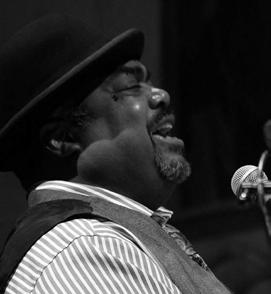
ALVIN WADDLES piano
Sponsored by Bridget & Michael Morin
A pianist, singer, composer and director, Alvin Waddles began studying the piano at the age of eight in his hometown of Detroit, fully developing his talents at the Interlochen Arts Academy and the University of Michigan School of Music. After returning home to Detroit he immediately immersed himself in the rich musical culture of the city, benefiting from the diverse influences that would eventually shape his own unique style.
Waddles has worked in the Detroit and Ann Arbor Public Schools and has also served on Music Ministries of several churches; among them, the historic New Bethel Baptist Church, Hartford Memorial Baptist and Hope United Methodist in Southfield, Michigan where he has served as the Director of Music since 1995.
He has delighted Detroit music lovers with performances in a variety of musical events including the Detroit Jazz Fest and the Detroit Festival of the Arts. He is the featured piano soloist in the often-sold-out annual productions of "Too Hot to Handel" in both Detroit and Chicago and can be found performing wherever music is celebrated from festivals to jazz clubs to performing arts venues. Waddles received the 2010 Excellence Award from Detroit Musicians Association and the Detroit City Council's 2015 Spirit of Detroit Award.
Waddles' engagements as a soloist and featured artist have taken him to destinations around the world, including Barbados, Beijing, Paris, Barcelona and Ghana, where he has worked with some of the world's finest musicians including Robert Shaw, Margaret Hillis, Brazeal Dennard, Minister Thomas Whitfield, Aretha Franklin, Anita Baker, Placido Domingo, George Shirley, Marcus Belgrave, Jack Jones, Haley Westenra, Stephanie Mills and Tramaine Hawkins.
41
FESTIVAL ARTISTS

SHAI WOSNER
piano
Sponsored by Franziska Schoenfeld
Pianist Shai Wosner has attracted international recognition for his exceptional artistry, musical integrity, and creative insight. His performances of a broad range of repertoire—from Beethoven and Schubert to Ligeti and the music of today—reflect a degree of virtuosity and intellectual curiosity that has made him a favorite among audiences and critics, who note his “keen musical mind and deep musical soul” (NPR’s All Things Considered).
This season, Wosner gave the world premiere of Vijay Iyer’s Piano Concerto Handmade Universe with the East Coast Chamber Orchestra presented by the Peoples’ Symphony Concerts (PSC) in New York, where he is the 2020-2024 Artistin-Residence.
In September 2023, Wosner's latest album, a recording of Beethoven’s 33 Variations on a Waltz by Anton Diabelli, Op. 120, was released on Onyx Classics. With this album, Wosner joins the ranks of legendary pianists who have recorded Beethoven’s monumental work.
Wosner is a recipient of Lincoln Center’s Martin E. Segal Award, an Avery Fisher Career Grant, and a Borletti-Buitoni Trust Award. He was in residence with the BBC as a New Generation Artist, during which he appeared frequently with the BBC orchestras, including conducting Mozart concertos from the keyboard with the BBC Scottish Symphony Orchestra.
Born in Israel, Wosner enjoyed a broad musical education from an early age, studying piano with Opher Brayer and Emanuel Krasovsky, as well as composition, theory, and improvisation with André Hajdu. He later studied with Emanuel Ax at The Juilliard School, where Wosner is now on the piano faculty.
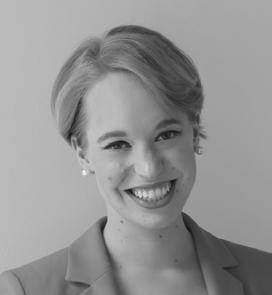
ROBYN BOLLINGER
violin
Sponsored by Kathleen Block
Daring, versatile, and charismatic, American violinist Robyn Bollinger was appointed Concertmaster of the Detroit Symphony Orchestra by Music Director Jader Bignamini at the end of the 2021-22 season. Currently the youngest female Concertmaster in the country, she is a frequent Guest Concertmaster with the Pittsburgh Symphony and has made Guest Concertmaster appearances with the Indianapolis Symphony and St. Bart’s Music Festival Orchestra. She is a former member of the Boston-based, democratically run chamber orchestra, A Far Cry, and she has appeared on commercial recordings with both the Pittsburgh Symphony and A Far Cry, all of which were nominated for GRAMMY® awards.
Having made her Philadelphia Orchestra debut at age twelve, Bollinger regularly performs as soloist, recitalist, and chamber musician across the United States.
Recent highlights include solo engagements with the Boston Pops and the symphony orchestras of California, Charleston, Knoxville, and Symphony in C. She is a returning participant at the storied Marlboro Music Festival in Vermont and has been featured in numerous national tours with the acclaimed Musicians from Marlboro.
Bollinger is a devoted educator, having presented masterclasses at Cincinnati Conservatory, the Longy School of Music, University of California Bakersfield, and the University of Tennessee Chattanooga. She is a former faculty member at New England Conservatory Preparatory School in Boston. She plays a 1697 G. B. Rogeri on generous loan from a private collector.
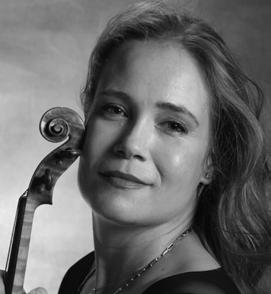
LEILA JOSEFOWICZ violin
Sponsored by Martha Pleiss
Leila Josefowicz is a renowned violinist celebrated for her commitment to contemporary music, premiering works especially written for her by eminent composers such as John Adams, Luca Francesconi, and Esa-Pekka Salonen. Her highly regarded musicianship has received numerous Grammy nominations, as well as the 2018 Avery Fisher Prize and a prestigious MacArthur Fellowship in 2008, joining her alongside prominent scientists, writers and musicians who have made unique contributions to contemporary life.
Josefowicz’s successful career is marked with countless collaborations with top orchestras around the world, including the Berliner Philharmoniker; Tonhalle-Orchester Zürich; Royal Concertgebouworkest; Konzerthausorchester Berlin; Dresden Philharmonie, New York, Oslo, Helsinki, BBC and Los Angeles Philharmonic orchestras; NDR Elbphilharmonie; the Boston, Chicago, San Francisco, The Cleveland, and The Philadelphia orchestras, where she worked with conductors at the highest level, including Matthias Pintscher, John Storgårds, Esa-Pekka Salonen, Louis Langrée, Hannu Lintu and John Adams.
Her most recent season has seen her as the Artist-in-Residence of the Iceland Symphony Orchestra, performing alongside Daniel Bjarnason and Eva Ollikainen, as well as presenting a solo recital at Harpa Hall.
42
FESTIVAL ARTISTS

TESSA LARK
violin
Sponsored by Josette Silver
Violinist Tessa Lark is one of the most captivating artistic voices of our time, consistently praised by critics and audiences for her astounding range of sounds, technical agility, and musical elegance. In 2020 she was nominated for a Grammy in the Best Classical Instrumental Solo category and received one of Lincoln Center’s prestigious Emerging Artist Awards: the special Hunt Family Award. Other recent honors include a 2018 Borletti-Buitoni Trust Fellowship and a 2016 Avery Fisher Career Grant, Silver Medalist in the 9th Quadrennial International Violin Competition of Indianapolis, and winner of the 2012 Naumburg International Violin Competition.
She solos regularly with many of the major orchestras around the world, from the Royal Scottish National Orchestra to the Seattle Symphony, and has appeared in recital in such prestigious venues and series as Amsterdam’s Concertgebouw and Carnegie Hall’s Distinctive Debuts series in Weill Hall (2017).
She is also a highly acclaimed fiddler in the tradition of her native Kentucky, delighting audiences with programming that includes Appalachian and bluegrass music and inspiring composers to write for her — most notably SKY, a bluegrass-inspired violin concerto written for Tessa by Michael Torke, which earned both a Grammy nomination for Tessa and a Pulitzer finalist distinction for Torke.
Lark is a graduate of New England Conservatory and completed her Artist Diploma at The Juilliard School. She plays a c.1600 G.P. Maggini violin, on loan from an anonymous donor through the Stradivari Society of Chicago.

TAI MURRAY
Major Sponsors: Lauren & Dwight Smith and Sandra & Claude Reitelman; Additional Supporters: Yuki Mack, Linda & Steven Permut, Marci & Marvin Shulman, Deborah & William Stein, Deborah & Kenneth Tucker
Tai Murray, acclaimed violinist hailed as "superb" by The New York Times, embodies the musical voice of her generation. Recognized for her technical prowess and vivacious style, Murray captivates audiences with her elegance and effortless phrasing. Winner of an Avery Fisher Career Grant and named a BBC New Generation Artist, she has graced prestigious stages worldwide, performing with leading ensembles including the Indianapolis Symphony Orchestra and Royal Liverpool Symphony Orchestra.
As a dedicated advocate of contemporary works, Murray premiered Malcolm Hayes' violin concerto at the BBC Proms. Her recitals have taken her to major cities across the globe, from Berlin to New York. Her critically acclaimed recordings, including Ysaye's sonatas and works by American composers, highlight her versatility and artistry.
Murray's musical lineage, influenced by Yuval Yaron and Franco Gulli, is evident in her sophisticated bowing and choice of vibrato. Currently serving as Assistant Professor of violin at the Yale School of Music, she imparts her expertise to the next generation of musicians. With a violin crafted by Tomaso Balestrieri, Murray continues to enrich the world of classical music with her profound talent and passion.
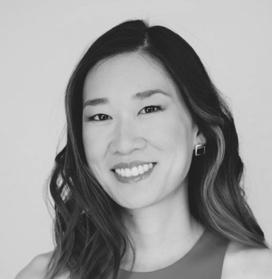
YVONNE LAM violin/viola
Henry Meyer Endowed Violin Chair
Grammy-winning violinist Yvonne Lam enjoys challenging, delighting, and disarming audiences worldwide.
Her debut solo album Watch Over Us was inspired by a piece written for her by Nathalie Joachim featuring solo violin and electronic track. The album also features works by Missy Mazzoli, Anna Clyne, Kate Moore, Katherine Balch and Eve Beglarian.
She served as a co-artistic director and violinist/violist of Eighth Blackbird for eight years, performing 50 concerts a year internationally with the groundbreaking chamber ensemble. She has also performed with the Philadelphia Orchestra, the Melbourne Symphony, the Kansas City Symphony, the Cincinnati Symphony, the Lexington Philharmonic, the New World Symphony, and the Tasmanian Symphony. In 2017, she co-founded the Blackbird Creative Lab, an intensive tuition-free training program for performers and composers in Ojai, California, as a way to inspire future generations of artists to champion new work and engage audiences with innovative and dynamic performances.
An avid chamber musician, she toured the east coast with Musicians from Marlboro and has performed at Marlboro Music Festival, Music from Angel Fire, Ravinia Music Festival, Twickenham Fest, Taos Music Festival, and Yellow Barn Music Festival.
Lam studied violin and piano at the Colburn School of Performing Arts. She continued her studies for two years at the Peabody Institute, where she studied violin with Victor Danchenko and piano with Boris Slutsky and Brian Ganz. She earned her Bachelor of Music from the Curtis Institute of Music, and her Master of Music from The Juilliard School, where she studied with Robert Mann.
She currently serves as Assistant Professor of Violin at Michigan State University.
43
violin

HSIN-YUN HUANG viola
Sponsored by Beverly Baker & Dr. Edward Treisman
Hsin-Yun Huang, a celebrated violist, is renowned for her performances worldwide, commissioning new works, and mentoring young talents. She has graced prestigious stages, including Carnegie Hall, and collaborated with eminent ensembles such as the Berlin Radio Orchestra and Tokyo Philharmonic. Notable festivals she frequents include Marlboro and Music@Menlo. Alongside the Brentano String Quartet, she has showcased the complete Mozart string quintets at Carnegie Hall. Huang is dedicated to music education and founded VivaViola! to enrich the viola repertoire.
In the 2023-24 season, she performs at renowned venues like the Chamber Music Society of Lincoln Center and debuts James MacMillan’s Viola Quintet. Collaborating with diverse artists, she tours with a program titled “The Music Critic.” Huang's past endeavors include co-commissioning Lei Liang for "Strings of Soul" and multidisciplinary projects with Ashkenazy Ballet.
A sought-after soloist, Huang has premiered works by notable composers and released acclaimed albums like "Viola Viola" and "FantaC." She holds degrees from The Juilliard School and The Curtis Institute of Music and teaches at both institutions. A distinguished competition winner, she earned top honors in international competitions.
Huang is esteemed for her contributions to the viola world, her dedication to education, and her vibrant performances. She resides in New York City with her husband, Misha Amory, and their two children, continuing to inspire audiences worldwide with her artistry.
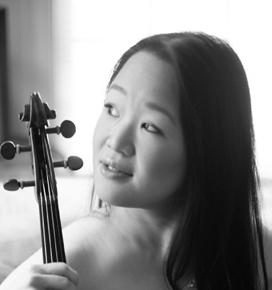
KATHARINA KANG LITTON
viola
Paul Katz Endowed Chair in memory of Morris D. Baker
Equally at home on both the violin and viola, renowned musician Katharina Kang Litton has been Principal Viola of New York City Ballet since 2018. As a violinist, she has performed as soloist with leading orchestras in Moscow, St. Petersburg, Frankfurt, Amsterdam, Bergen, Baltimore, Berlin, Cologne, Hamburg, London, New York and Rio de Janeiro.
Kang Litton grew up in Germany where she studied at the Robert Schumann Musikhochschule Düsseldorf with Rosa Fain from the age of nine. She received her bachelor and master's degrees at Manhattan School of Music as a student of Pinchas Zukerman and Patinka Kopec, later going on to receive her artist diploma at the Cleveland Institute of Music with Jaime Laredo.
Her illustrious career has included working with such prestigious conductors as Dmitrij Kitajenko, Kirill Petrenko, Christoph Altstadt, Arnold Katz, Alondra de la Parra, and Neemi Jarvi. As a recitalist and chamber musician, she has also collaborated with such artists as Pinchas Zukerman, Midori Goto, Hagai Shaham, Viviane Hagner, Elmar Oliveira, Pavel Gililov, Shmuel Ashkenasi, Timothy Eddy, Franz Helmerson, Philip Setzer and the Schumann Quartet, proving a testament to her versatility.
In 2020, Kang Litton formed the Litton Duo with her husband, conductor and pianist Andrew Litton. Their highly anticipated first CD recording has been released on the BIS label [BIS-2574].
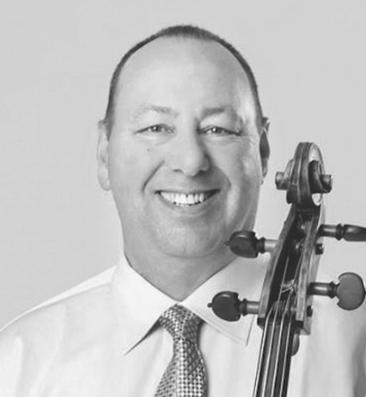
PETER WILEY cello
Sponsored by Cecilia Benner
Cellist Peter Wiley enjoys a prolific career as a performer and teacher. He attended the Curtis Institute at just 13 years of age, under the tutelage of David Soyer, and continued his impressive youthful accomplishments with his appointment as principal cellist of the Cincinnati Symphony at age 20, after one year in the Pittsburgh Symphony. From 1987 through 1998, Wiley was cellist of the Beaux Arts Trio, with which he performed over a thousand concerts, including appearances with many of the world's greatest orchestras. He succeeded his mentor, David Soyer, as cellist of the Guarneri Quartet from 2001 until the quartet retired from the concert stage in 2009.
Awarded an Avery Fisher Career Grant, Wiley was also nominated for a Grammy Award in 1998 with the Beaux Arts Trio and in 2009 with the Guarneri Quartet. He has also had a close association with the Marlboro Music Festival for over 40 years.
A much sought-after teacher, Wiley has been a faculty artist at Caramoor's "Rising Stars" program and taught at the Cincinnati College Conservatory of Music, Mannes College of Music, and Manhattan School of Music. He is currently on the faculty of the Curtis Institute of Music and the Bard College Conservatory of Music.
44
FESTIVAL ARTISTS
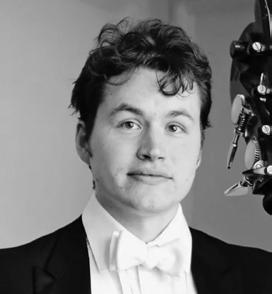
KEVIN BROWN
bass
Minnesota native Kevin Brown began playing the bass at age 3. He has since gone on to perform with esteemed ensembles across the United States in a burgeoning career that has led him back to the Midwest as principal bass of the Detroit Symphony Orchestra and Associate Professor of Double Bass at Michigan State University.
Brown completed his bachelors and master's degrees at Rice University as a student of Paul Ellison. While at Rice, he performed extensively with the Houston Symphony, including tours to New York and Moscow. In 2009 he won the International Society of Bassists Orchestral Competition, earning a week as a guest in the Philadelphia Orchestra bass section. Before his appointment to the DSO in 2014, he also appeared as guest principal bass of the Atlanta Symphony.
Beyond orchestral performance, Brown is an active soloist and chamber musician. Kevin has collaborated with the Great Lakes Chamber Music Festival, regularly gives recitals, and gave his concerto debut with the Detroit Symphony Orchestra in 2015.
Brown is also a deeply committed educator and joined the faculty of Michigan State University in 2017. Outside of Michigan, he has taught as a guest at the Cleveland Institute of Music, Northwestern University, the University of Southern California, Texas Christian University, the Colburn School, and Rice University.
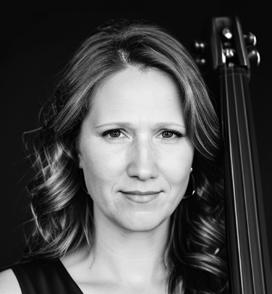
Jessica Grabbe is an active freelance bassist based in Detroit. Since growing up in Ann Arbor, Grabbe has combined her love of music and travel to live and work all over the globe. She completed her performance degrees at New England Conservatory in Boston and Rice University in Houston and spent an exchange year studying at the Royal Academy of Music in London, UK. She has held contracts in the Malmö Symphony Orchestra, the Royal Danish Opera and the Kansas City Symphony and has also performed with the IRIS Orchestra in Memphis (now the IRIS Collective), the Houston Grand Opera and Ballet, Detroit Opera, and as guest principal with the Bergen Philharmonic in Norway. She has been a part of the Spoleto, Tanglewood and Verbier summer festivals and most recently spent summers in Austria as principal bass of the AIMS festival orchestra. As a chamber musician, she has performed with members of the Royal Danish Opera, the Detroit Symphony and New Music Detroit. After settling in Detroit around 2014, she became a regular extra musician with the Detroit Symphony Orchestra and can be seen on stage with them most weeks. She lives in Detroit with her husband (Kevin Brown of the DSO) and their one year old daughter Isla.
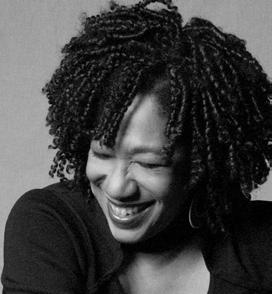
MARION HAYDEN bass
Sponsored by Fay Herman and Barbara Solms
Born in Detroit, Michigan, a crucible of jazz, Marion Hayden is one of the nation’s finest proponents of the acoustic bass. Mentored by master trumpeter Marcus Belgrave, Hayden began performing jazz at the age of 15. She has performed with such diverse luminaries as Bobby McFerrin, Nancy Wilson, Geri Allen, Regina Carter, Steve Turre, Lester Bowie, David Allen Grier, James Carter, Dorothy Donegan, Joe Williams, Lionel Hampton, Frank Morgan, Jon Hendricks, Hank Jones, Bobby Hutcherson, Larry Willis, Vanessa Rubin, Sheila Jordan, Mulgrew Miller, Annie Ross and many others. She is a co-founder of the touring jazz ensemble Straight Ahead- the first all woman jazz ensemble signed to Atlantic Records. She is a member of the Detroit International Jazz Festival All-Star Ambassadors touring ensemble.
Widely recognized as a standard bearer of culture and artistic history, Hayden received a 2019 Art X Grant and a Creators of Culture Grant for original musical works. She was Artistic Director for a 2018 Knight Arts Foundation Grant encouraging young women in jazz. In 2016, Hayden was honored for her work as a performer and educator with the prestigious Kresge Artist Fellowship – a one-year fellowship and grant award given to an elite group of creative artists. She was also the recipient of a 2016 Jazz Hero Award, a national award given by the Jazz Journalists Association recognizing people who have made a significant contribution through their artistry and community engagement.
A passionate advocate for youth music education, Hayden currently teaches for Michigan State University Community Music School Detroit and is an educator-in-residence for the Detroit Jazz Festival.

MERIDETH HITE ESTEVEZ oboe
Dr. Merideth Hite Estevez is a creative catalyst, inviting all to the joy of creative expression through her writing, coaching, and performing. As an oboist, Estevez has performed with top orchestras in the US and abroad, including the Met Opera and PhillyPops, and is currently the English hornist/Second Oboe of the Chamber Orchestra of NY. She has served on faculties of numerous universities and schools of music, most recently as Associate Professor of Oboe at the University of Delaware. Her education has taken her all over the world — Cincinnati Conservatory of Music, Yale School of Music, Fulbright Scholar to Germany, and The Juilliard School, where she received her doctorate in oboe.
She has been a featured speaker at Google, Longy School of Music, ShePodcasts LIVE, Hope*writers, Music Institute of Chicago, and more. As a
45
ARTISTS
FESTIVAL
JESSICA GRABBE bass
continued on page 46
FESTIVAL ARTISTS
coach, she has helped thousands of artists overcome creative blocks through her popular online creative recovery clusters and has served as an executive coach for all types of arts leaders, from major museum directors to deans of conservatories and art schools
Estevez’s award-winning podcast, Artists for Joy, was in the top 250 podcasts in the US in the Self-Help category in January 2023 and is currently top 1.5% of podcasts worldwide. Her first book, The Artist’s Joy: A Guide to Getting Unstuck, Embracing Imperfection, and Loving Your Creative Life, debuts in Spring 2024 from Broadleaf Books.
Estevez resides in Metro Detroit, Michigan, with her husband, Rev. Edwin Estevez, daughter Eva, and son Eli.

ALEXANDER KINMONTH oboe
Alexander Kinmonth has served as Principal Oboe (Jack A. and Aviva Robinson Chair) of the Detroit Symphony Orchestra since his 2015 appointment by Music Director Laureate Leonard Slatkin. He can be heard on the DSO’s recordings of Tchaikovsky’s first, second, fourth, and sixth symphonies. Kinmonth is a graduate of The Juilliard School where he studied with Nathan Hughes of the Metropolitan Opera.
Kinmonth has performed as a guest musician with the Metropolitan Opera in New York City on both oboe and English horn and with the Charleston Symphony Orchestra in South Carolina. In the summer of 2022, Kinmonth participated in the Mainly Mozart Festival in San Diego, California, and the Tanglewood Music Festival in Lenox, Massachusetts. In previous summers, he has attended prestigious music festivals including Music Academy of the West, the Round Top Institute, and the Aspen Music Festival where he received a fellowship in 2014. He also participated in the New York String Orchestra Seminar at Carnegie Hall in 2013.
Kinmonth is a winner of the Professional Musicians Club of Boston’s Award for Outstanding Achievement. During his time in New York, Kinmonth performed operas, orchestral works, and new music with the Juilliard Orchestra and the New Juilliard Ensemble, working with noted conductors including James Levine, Kurt Masur, and Jaap van Zweden. Kinmonth is member of Detroit Chamber Winds & Strings.
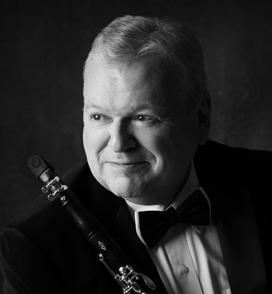
MICHAEL COLLINS
clarinet
Sponsored by Virginia & Michael Geheb
Michael Collins is one of the most complete musicians of his generation. With a continuing, distinguished career as a soloist, he has in recent years also become highly regarded as a conductor. From 2010 – 2018 he was the Principal Conductor of the City of London Sinfonia and has recently been Artistic Director of London Mozart Players.
Recent highlights include a return to the Philharmonia Orchestra, performances worldwide with orchestras including Minnesota Orchestra, Swedish Chamber Orchestra, the Rheinische Philharmonie, Kyoto Symphony Orchestra, BBC Concert Orchestra and Kuopio Symphony Orchestra and tours in South Africa, Australia (with the Melbourne Symphony Orchestra), Japan and Mexico (with the Orquesta Sinfónica Nacional).
In January 2021, Michael gave the debut performance of new ensemble Wigmore Soloists, a new Associate Ensemble funded by the Wigmore Hall and led by Michael Collins and violinist Isabelle van Keulen. Wigmore Soloists sees leading international instrumentalists coming together to perform a wide range of chamber music repertoire, from duets to works for up to 13 musicians.
He is one of the world’s most recorded clarinettists. His most recent release is of the Mozart Clarinet Quintet and Concerto and Birchall Clarinet Concerto, performed with Philharmonia Orchestra and Wigmore Soloists, which received a five star review from BBC Music Magazine. In 2017, he was awarded a Grammy for his disc ‘Shakespeare Songs’ with Ian Bostridge and Antonio Pappano (‘Best Classical Solo Vocal Album’).
In the Queen’s Birthday Honours of 2015, Michael Collins was awarded an MBE for his services to music. He plays on Yamaha clarinets.
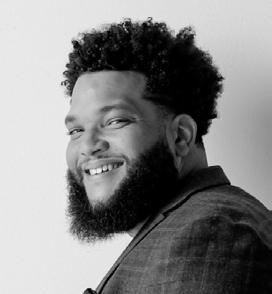
KRIS JOHNSON trumpet
Kris Johnson is an empathetic, intelligent, and efficient trumpeter, composer, arranger, film scorer, and educator based in Detroit, Michigan. As an artist, Johnson's work focuses on music that spans the depth and breadth of Black American music. The influences that have shaped his artistry include Terence Blanchard, Thad Jones, Nicholas Payton, Stevie Wonder, Dave Matthews, Clifford Brown, Roy Hargrove, and many others.
Johnson professional career is expansive for an artist so young, including: playing in and arranging for the renowned Count Basie Orchestra; directing the University of Utah Jazz Studies program; composing several musicals, including
46
“Jim Crow’s Tears” and “Hastings Street: The Musical;” scoring films, such as the Emmy-nominated web series “King Ester;” producing successful personal projects, such as his #looptherapy album and his Kris Johnson Big Band YouTube series.
Johnson recently accepted the role as an Assistant Professor of Jazz Trumpet at the University of Michigan’s Department of Jazz & Contemporary Improvisation. He also teaches through his online platform, Office Hours with Kris.
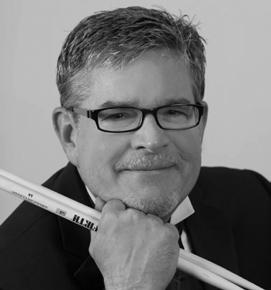
DAVID TAYLOR drums
Drummer David Taylor studied percussion performance at the University of Cincinnati/College-Conservatory of Music where his principal teacher was William Youhass (Other teachers include Salvatore Rabbio, Gordon Stout, and Tim Hagans). Since returning to Detroit, Taylor has performed shows at the Fox, Masonic, and Fisher Theatres.
In addition, Taylor performs regularly with the Detroit Opera Orchestra and the Detroit Symphony Orchestra. Having been a member of Wayne State University’s jazz faculty since 1991, he has toured Europe and South Africa with colleague and friend, saxophonist Chris Collins. He has been on countless recordings, including work with Emmy Award-winning composer/producer Joseph LoDuca.
With these incredible experiences in mind, Taylor has gone on to share his education, teaching at the Interlochen National Music Camp.

JAMES GARDIN
narrator
James Gardin has used his multifaceted skill set of empowering rhymes, fun melodies, and energetic stage presence to become the most successful emcee in his hometown of Lansing, Mich. He has performed hundreds of shows around the world, sharing a stage with big-name artists like Bryce Vine, Jack Harlow, KING, MURS, Macklemore, and Quinn XCII and has amassed thousands of plays and downloads with coverage on top web sites and publications (2DopeBoyz, HipHopDX, Rapzilla , DJ Booth). Gardin’s music has been featured on TV shows and films like ESPN’s ” First Take,” CW’s “All American,” “Queen Sugar,” “Bloom,” and “Block Party,” as well as been played on the hit radio station Hot97. But what really sets James Gardin apart is his niche. He creates empowering, encouraging music for TV, film, and fans alike, all while using faith as a sonic/ lyrical foundation. Gardin aims to use his art and message to inspire all those around him to live their life fully and encounter their purpose daily.
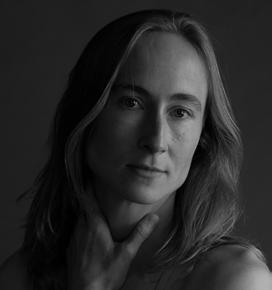
HAN LASH composer/harp
Stone Composer-in-Residence
Composer and harpist Han Lash is currently an associate professor of music in composition at the Indiana University Jacobs School of Music. Hailed by The New York Times as “striking and resourceful . . . handsomely brooding,” Lash’s music has been performed at Carnegie Hall, Los Angeles Walt Disney Concert Hall, Lincoln Center, and Tanglewood Music Center, as well as the Times Center in Manhattan, Chicago Art Institute, and Aspen Music Festival and School, among other prestigious venues.
Lash’s incredible talent has received numerous honors, including the ASCAP Morton Gould Young Composer Award, Charles Ives Scholarship (2011) and Fellowship (2016) from the American Academy of Arts and Letters, Fromm Foundation Commission, Chamber Music America Classical Commissioning Grant, Yaddo Artist Colony fellowship, Naumburg Prize in Composition, Barnard Rogers Prize in Composition, Bernard and Rose Sernoffsky Prize in Composition, and multiple academic awards.
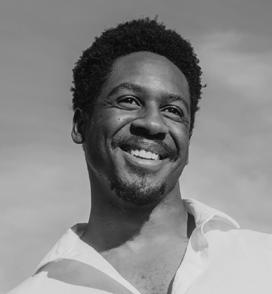
KYLE RIVERA
composer
Beverly Flanzblau Baker Young Artist Chair
The ever-evolving artistic perspective of Kyle Rivera makes his music a space for intrigue and exploration. Rivera is fascinated by visual imagery in sound and the way it can create windows into his mind. He often draws upon the diverse sonic and cultural environments he grew up in to craft the soundscapes of his music.
Linguistics, spirituality, and media all influence the way Rivera creates music. One of Rivera’s goals as an artist is to offer a perspective on the world through his personal experiences. Some of his music has focused on topics relating to social justice, equality, and racialized matters. Alongside that, his music explores the conceptual limits of psychology, spirituality, and consciousness in sound.
As a composer, his music has been performed across the United States and internationally in Russia, Thailand, Hong Kong, and China. Kyle was the 2023 Anne Spencer Fellow with the Virginia Center for the Creative Arts. He received a 2024 MacDowell Fellowship and an Aaron Copland House Residency.
Recently, Rivera received the “Best New Commission of the Year” award from the Chamber Music America Conference.
47
ARTISTS
FESTIVAL
FESTIVAL ARTISTS
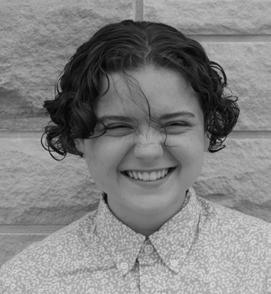
EM SINGLETON
composer
Stone Composer Fellow
Em Singleton is a composer, violinist, writer, and linguist from Gainesville, Florida. Being a Jacobs Scholar at Indiana University Bloomington, pursuing undergraduate studies in music composition, viola, and linguistics, as well as studying composition with Sky Macklay, Aaron Travers, Han Lash, and David Dzubay, and viola with Atar Arad, Em’s musical repertoire and talent is virtually limitless.
Among some of their many accomplishments, Singleton has recorded and premiered live-to-picture Daniel Whitworth’s score for the 2022 Jon Vickers Film Scoring Award at the IU Cinema, as part of the Library of Congress’ restoration of Phil for Short in Kino Lorber’s “Cinema’s First Nasty Women” collection. In addition, in 2023, they received a Teaching Internship Grant from Hutton Honors College for their work in the Linguistics department, and were invited to participate in the 2023 IU 48 Hours collaboration with Hub New Music. Singleton’s recent work has focused on specific interaction of timbre, gesture, noise, representing physical textures, and intersections of poetry, linguistics, and music.

DETROIT CHAMBER WINDS & STRINGS
Since its founding in 1982, Detroit Chamber Winds & Strings (DCWS) has set the standard for chamber music in Detroit. By bringing together the top musicians from the metro area, most of whom are members of the Detroit Symphony Orchestra and Detroit Opera Orchestra, DCWS immerses audiences in a chamber music experience that is innovative, entertaining and unsurpassed anywhere in the region.
With chamber music as its foundation, DCWS’ mission has evolved to address the ever-changing, ever-challenging Detroit arts landscape with grand achievements. Some 30 new works have been premiered. Five compact discs have been released. Tours have stretched throughout the United States and as far as Switzerland.

SABRINA NELSON
visual artist
Sponsored by the Edw. C. Levy Co.
Sabrina has been a professional artist for over 35 years. With a degree from Detroit’s College for Creative Studies and influenced by Yoruba religion, as well as Eastern and African
philosophies, Nelson’s incredible works of paint, sculpture, objects, performance and installation are a combination of spirit, motion, and intimacy.
Her work has been exhibited nationally, including at the Detroit Institute of Arts, the Charles H. Wright Museum of African American History, the Museum of Contemporary Art Detroit, and the African American Art in Culture complex in San Francisco. She has also shown work at Jakmel Gallery as part of Art Basel Miami, as well as at the American University in Paris.
A passionate educator, Nelson lectures and performs artist demonstrations as a studio art teacher at the Detroit Institute of Arts. She is also on staff at the College for Creative Studies, where she works hard at motivating and preparing students to pursue art degrees in Detroit.
Nelson is also a guest curator at both The Carr Center and the Music Hall Performing Arts Center, adding to her over 30 year-long resume of judging art competitions, curating numerous art talks and exhibits, and conducting interviews of guest artists for the City of Detroit’s Culture video channel MyDetroitCable.

48
Celebrating
those who preserve and advance chamber music in our community.
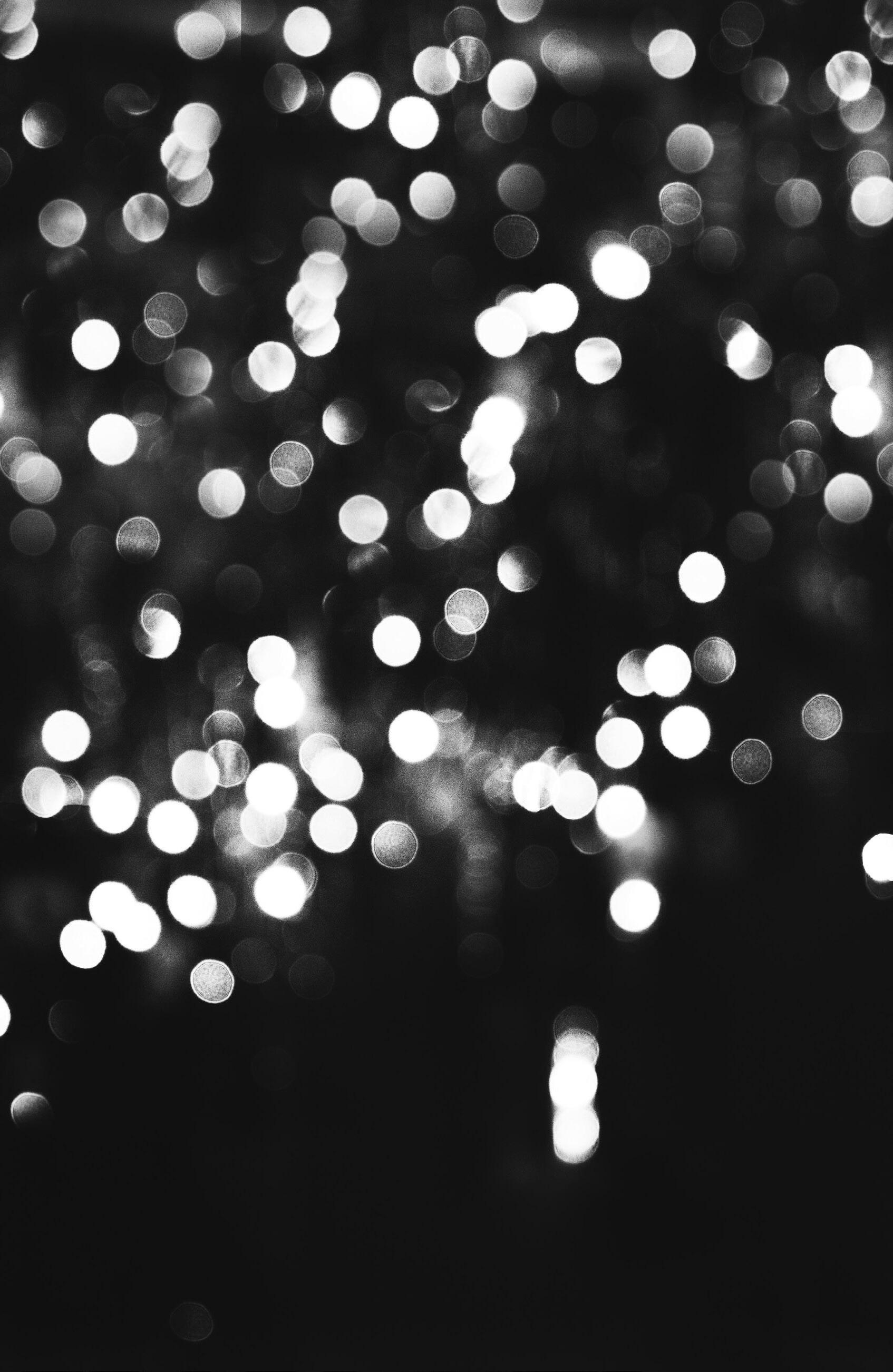
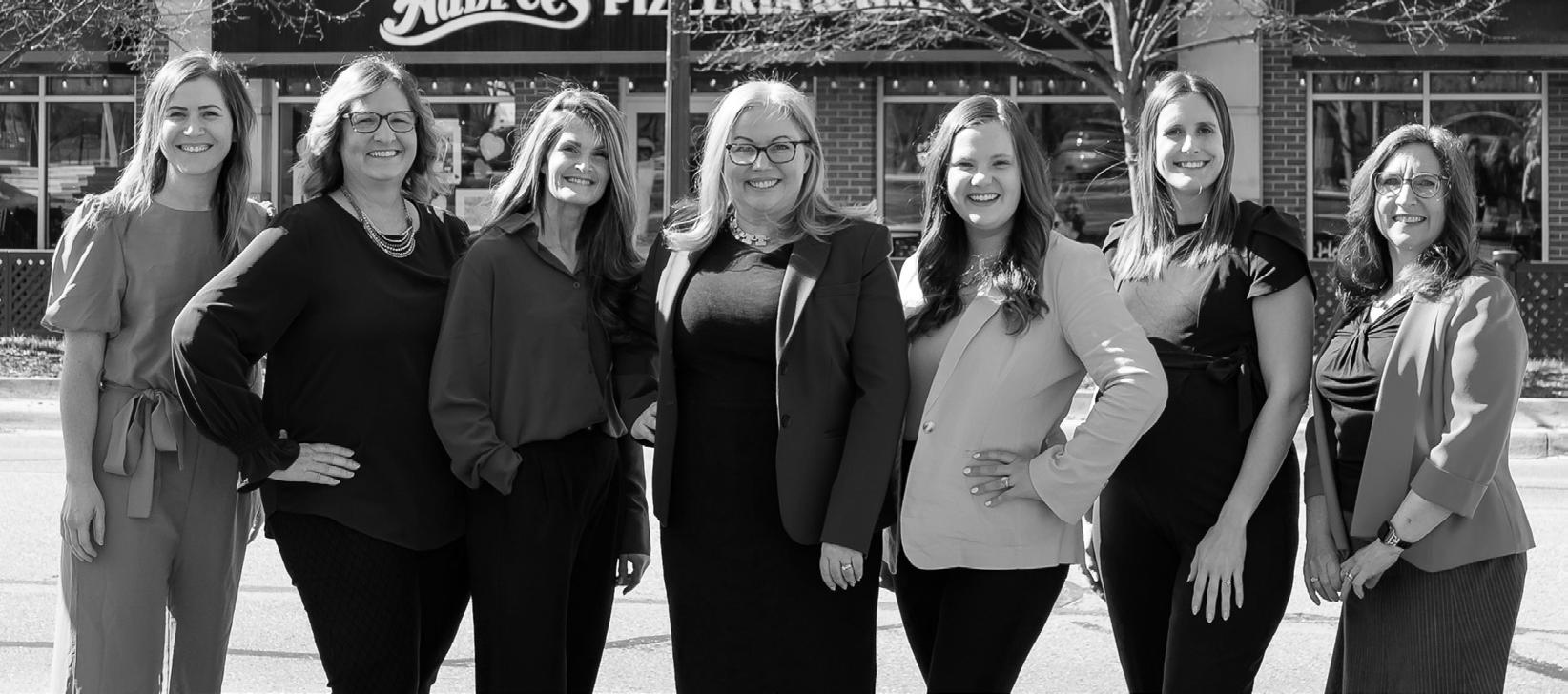

Taftlaw.com
49
ABOUT THE SHOUSE INSTITUTE
The Catherine Filene Shouse Institute began in 1997 and has since become the Festival’s major educational program, helping young chamber ensembles bridge the gap between graduate school and their careers. Participating ensembles benefit from professional development activities like coachings, main stage concert appearances, performances with senior Festival artists and special audience engagement events. Led by Director Philip Setzer, the Shouse Institute’s guiding principle is anchored in offering unique and invaluable earning opportunities for young artists at an important transition in their lives.
The program’s alumni ensembles include the Pacifica, Parker, Jasper, Jupiter, Escher, Calidore, Harlem, and Catalyst string quartets, the Claremont Trio, Eighth Blackbird and a host of other fine ensembles. Many have gone on to international careers, winning prizes such as Grammy, Naumburg, Fischoff and the $100,000 M Prize. In 2014, the Festival began a partnership with the Sphinx Organization to host an alumni ensemble as part of Shouse and has since hosted five winds or strings groups and individual musicians.
The Shouse Institute is supported in part by the National Endowment for the Arts.
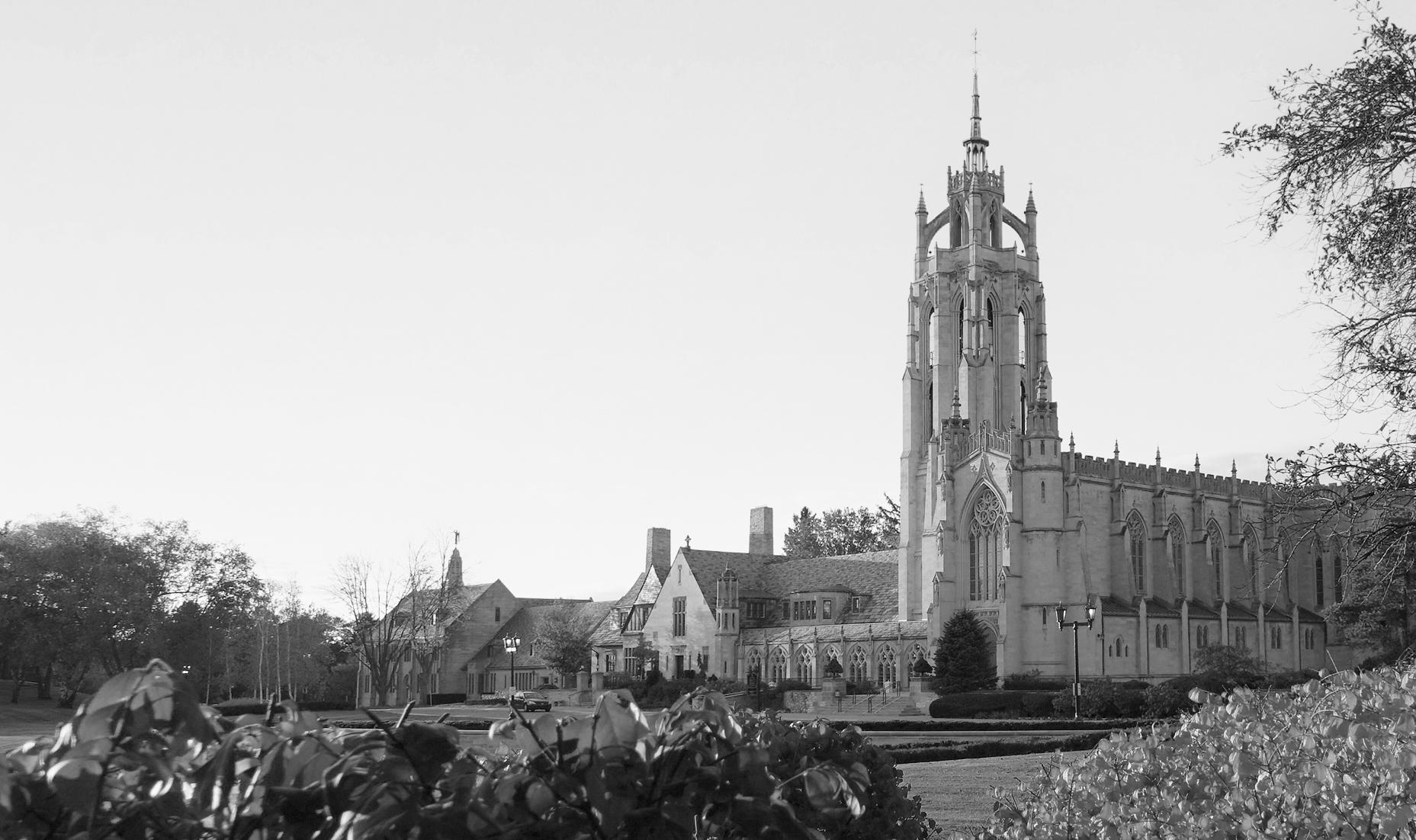

DILLON SCOTT (he/him)
viola, Sphinx Apprentice
Sponsored by Thea Glicksman
Dillon Scott, a student at the Curtis Institute of Music, is from Montgomeryville, Pennsylvania. He has participated in numerous competitions and was awarded third place at the 24th Annual Sphinx Competition and first place at the Nelly Berman Young Classical Virtuosos of Tomorrow. He is currently the principal violist of the Philadelphia Youth Orchestra, and in 2020, he was selected on behalf of the orchestra to perform solo works for the Pennsylvania Historical and Museum Commission. He has performed as a soloist at the Kimmel Center and Carnegie Hall and also was a guest performer at the Academy of Music in Philadelphia. This year, he was the first violist ever to be invited by Young Artists Inc. to give a series of recitals in Hilton Head, South Carolina. He has played in masterclasses for Roberto Díaz, Steven Tenenbom, and Edward Gazouleas. He has also had the privilege to attend several summer music programs, including the Perlman Music Program and the Sphinx Performance Academy at the Curtis Institute. When he is not concentrating on music, Scott enjoys reading about history, watching documentaries, learning about astronomy, and building metal models.

AMNIS PIANO QUARTET
Ruth Laredo Endowed Piano Chair
Minkyung Lee, violin; Matthew McDowell, viola; Jenny Bahk, cello; Linda Lee, piano
The Amnis Piano Quartet is a New Haven-based ensemble comprised of violinist Minkyung Lee, violist Matthew McDowell, cellist Jenny Bahk, and pianist Linda Lee. They most recently won the bronze medal in the 50th Annual Fischoff National Chamber Music Competition, the largest and longest running chamber competition in the United States. They are proud to be the second piano quartet in the competition’s history to ever win a medal.
Passionate about the performance and commission of underrepresented composers, Amnis has made it their priority to program works by female composers, and specifically Korean female composers. The lack of representation in this demographic within a field with so many leading female Korean performers is something Amnis hopes to begin to rectify. The quartet began collaborating together under the tutelage of Ettore Causa during their graduate studies at the Yale School of Music. During their first semester of formation, the ensemble was selected to perform in the Yale School of Music’s Vista Chamber Music concert and soon after won the Oneppo Concert Series Chamber Music Competition. They have concertized across the Northeast United States and have upcoming concerts and competitions in New York, Maryland, Philadelphia, Texas, Ohio, Italy, and South Korea. The quartet has worked extensively with Yale faculty members Ettore Causa, Wei-yi Yang,
Congratulations to the 2024 Great Lakes Chamber Music Festival from Kirk in the Hills! Learn more at kirkinthehills.org The Kirk is a congregation of the Presbyterian Church (USA). Inside you’ll find a warm and inviting Christ-centered community that is making a difference in the world. 1340 West Long Lake Road • Bloomfield Hills, MI 48302 • (248) 626-2515 • kirkinthehills.org
and Boris Berman, as well as the Horszowski Trio. The individual members hold degrees from Seoul National University, Colburn Academy, the Juilliard School, the International Menuhin Music Academy (Switzerland), and Yale University.
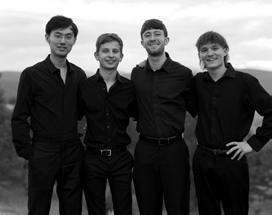
THE DOLPHINS QUARTET
Sponsored by Taft Stettinius & Hollister, LLP
Luke Henderson, violin; Isaac Park, violin; James Preucil, viola; Ian Maloney, cello
The Dolphins are a Juilliard string quartet committed to adventure, excellence, and accessibility. Formed in Blue Hill, Maine at the 2022 Kneisel Hall Chamber Music Festival, they have frequently featured at Lincoln Center’s Alice Tully Hall, performing the Juilliard premiere of Mieczyslaw Weinberg’s String Quartet No. 4, Villa-Lobos’ String Quartet No. 5, and the world premiere of William Stackpole’s 2021 String Quartet. The Dolphins work closely with living composers, recently performing John Corigliano’s 1995 String Quartet and Daniel Ficarri’s “Lessons from the Neighborhood.” The Dolphins also presented their first collective composition, ‘The Dolphin Miniatures’ at Juilliard and around New York City. Last summer, the Dolphins returned to Maine and Kneisel Hall to perform Schoenberg’s String Quartet No. 1 and Beethoven Op. 18, No. 1, and a series of concerts at Music from Angel Fire in New Mexico where they worked closely with composer-in-residence Andy Akiho and percussionist Ian Rosenbaum on Akiho’s ‘Ligneous’ for string quartet and marimba. The Dolphins have studied with Laurie Smukler, Joel Krosnick, Natasha Brofsky, Molly Carr, Nick Mann, Fred Sherry, Paul Neubauer, John Corigliano, and the Juilliard String Quartet. Recently, The Dolphins helped launch the ‘Music for the Future’ educational campaign for Project: Music Heals Us, bringing Juilliard composition curriculums to detention and rehabilitation centers in California. The Dolphins are proud Juilliard Gluck Community Service Fellows and perform outreach concerts throughout NYC. In 2024, the Dolphins will visit multiple universities and conservatories as guest artists to perform and work with students on quartets and improvisation.
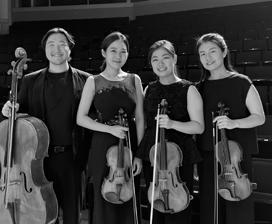
HESPER QUARTET
Sponsored by James Tocco
Sojeong Kim, violin; Ye Jin Yoon, violin; SoHui Yun, viola; Connor Kim, cello
The Hesper Quartet is a Korean-American chamber ensemble that was formed as a student group at the Emerson String Quartet Institute of Stony Brook University in 2022, where they have been mentored by Philip Setzer, Eugene Drucker, Lawrence Dutton, Paul Watkins, David Finckel, Jennifer Frautschi, and Colin Carr.
Since its formation, the quartet maintains an energetic balance of performing works by Beethoven, Schumann, and Haydn, while performing works by living composers such as Joan Tower. Notable achievements include winning first prize at the Fanny Mendelssohn International Competition, the Servaas Competition, and the Ackerman Chamber Competition.
Its members–Sojeong Kim, Ye Jin Yoon, SoHui Yun, Connor Kim–hold degrees from the Curtis Institute of Music, The Juilliard School, Yale University, Stony Brook University, and Seoul National University. “Hesper” means evening star, and like how each star in the night sky has its own story, the Hesper Quartet strives to tell the fascinating story of each work of music that they play.

TRIO GAIA
Sponsored by Kathleen & Randolph Schein
Grant Houston, violin; Yi-Mei Templeman, cello; Andrew Barnwell, piano (Eugene Istomin Endowed Piano Chair)
Trio Gaia, New England Conservatory's graduate piano trio in residence, formed in 2018 and is dedicated to offering audiences dynamic, personally relevant experiences inside and outside the concert hall. Comprised of violinist Grant Houston, cellist Yi-Mei Templeman, and pianist Andrew Barnwell, the trio has gone on to win 1st prize at the 2022 WDAV Young Chamber Musicians Competition, as well as prizes in the 2022 Premio Trio di Trieste International Music Competition, 2021 Chamber Music Yellow Springs Competition, and the 2019 Plowman National Chamber Music Competition, showing their emergence as one of the leading piano trios of today.
Recent seasons have brought them to appearances on stages nationally and internationally, including recitals for the Dame Myra Hess Memorial Concerts, Davidson College Concert Series, and Core Memory Music, as well as performances in Osaka, Japan, as part of the Osaka International Chamber Music Competition.
Dedicated to sharing classical music in the community, Trio Gaia is soughtafter for its educational programming for students, seniors, and everyone in between. The trio has crafted weeklong residencies for both the Panama Jazz Festival and the Virginia Arts Festival in support of its mission to invite students into the experience of creating chamber music. Previously, Trio Gaia served as Community Performance & Partnership fellows at NEC, and most recently they were invited to perform and teach at PRIZM International Music Festival in Tennessee.
SHOUSE INSTITUTE
51
LIVING COMPOSERS
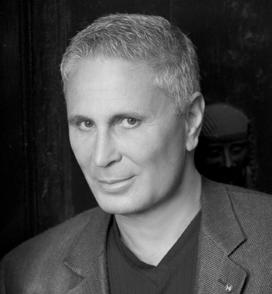
JOHN CORIGLIANO
John Corigliano continues to add to one of the richest, most unusual, and most widely celebrated bodies of work any composer has created over the last forty years. Corigliano's scores, now numbering over one hundred, have won the Pulitzer Prize, the Grawemeyer Award, five Grammy Awards, an Academy Award, and have been performed and recorded by many of the most prominent orchestras, soloists, and chamber musicians in the world. Attentive listening to this music reveals an unconfined imagination, one which has taken traditional notions like "symphony" or "concerto" and redefined them in a uniquely transparent idiom forged as much from the post-war European avant-garde as from his American forebears.
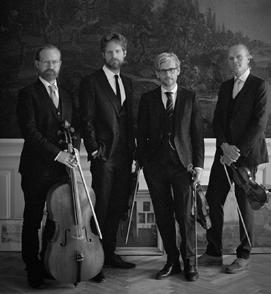
DANISH STRING QUARTET
Celebrating their 20th Anniversary, the Danish String Quartet remains a preeminent force in classical music. Renowned for their impeccable musicianship and inventive programming, they captivate audiences worldwide with a rare musical spontaneity. Their ambitious DOPPELGÄNGER series pairs world premieres with late Schubert works, culminating in a quintet by Thomas Adès. The Quartet's recordings on ECM New Series, including the acclaimed PRISM series, showcase their affinity for Scandinavian composers and folk music. Active in outreach, they founded the DSQ Festival and the Series of Four concert series. Recipients of numerous awards, their legacy of excellence continues to flourish under the leadership of Frederik Øland, Rune Tonsgaard Sørenson, Asbjørn Nørgaard, and Fredrik Schøyen Sjölin.
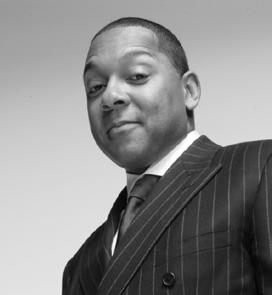
WYNTON MARSALIS
Wynton Marsalis, trumpeter, composer, and advocate of American culture, serves as Managing and Artistic Director of Jazz at Lincoln Center and Director of Jazz Studies at The Juilliard School. Known as the "Pied Piper" of jazz, Marsalis has released over 127 recordings, won numerous awards, and performed worldwide. His commitment to education has shaped the next generation of musicians. Over four decades, he has rekindled global interest in jazz through performances, education, and advocacy. Marsalis's compositions span jazz and classical genres, reflecting his innovative spirit. Grounded in jazz fundamentals, his beliefs emphasize individual creativity, collective action, and the power of music to enrich human life.
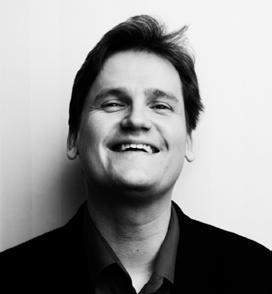
OLLI MUSTONEN
Olli Mustonen, a Finnish composer, conductor, and pianist, defies musical boundaries by blending classical styles from baroque to minimalism. A prodigy from a young age, he studied under notable mentors and quickly gained recognition. Mustonen's career spans conducting roles with orchestras such as the Helsinki Festival Orchestra and performances as a soloist with major international ensembles. Renowned for his contrapuntal compositions, Mustonen's works, including chamber pieces like his Sonata for violoncello and piano, uniquely fuse baroque influences with modernism. His exploration into symphonic traditions has produced acclaimed works like Sinfonia 1 and Sinfonia 2. Today, Mustonen's multifaceted talents continue to captivate audiences worldwide.

MARC NEIKRUG
Composer Marc Neikrug boasts a 30-year international career spanning chamber, symphonic, opera, and music-theater compositions. His works have graced prestigious orchestras worldwide, including the New York, Los Angeles, and Buffalo Philharmonics, among others. Internationally, his music has been performed by esteemed ensembles like the BBC Symphony and the Budapest Festival Orchestra. Notable performances include festivals such as Ravinia and Tanglewood. Neikrug's acclaimed music-theater piece, "Through Roses," has seen numerous productions globally since its 1980 premiere. Notable performers of his work include Zubin Mehta and Lorin Maazel. Neikrug's impact extends to film, with documentaries and features showcasing his work.

MARK O'CONNOR
Mark O'Connor, a Grammy-winning musician, blends American fiddling with classical influences, shaping a unique musical identity. His career spans recordings with renowned artists like Yo-Yo Ma and achievements like the bestselling "Appalachia Waltz." His Fiddle Concerto stands as a modern classic, while his Americana Symphony showcases his prowess as a composer. Leading the Mark O'Connor Band, including family members, he continues to innovate in bluegrass. His latest solo album, "Markology II," is a testament to his enduring influence, hailed by guitarist Bela Fleck. O'Connor's journey from teenage prodigy to musical luminary embodies the spirit of American string playing.
52
LIVING COMPOSERS
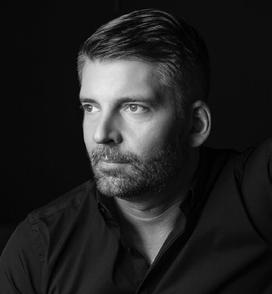
MATTHIAS PINTSCHER
Matthias Pintscher is the newly appointed Music Director of the Kansas City Symphony, effective from the 2024-25 season. He has just concluded a successful decade-long tenure as the Music Director of the Ensemble Intercontemporain, the iconic Parisian contemporary ensemble founded by Pierre Boulez and winner of the 2022 Polar Prize of the Royal Swedish Academy. During his stewardship, Pintscher led this most adventurous institution in the creation of dozens of world premieres, recorded CDs of music by cutting edge composers from all over the world, and took the ensemble on tours around the globe – to Asia and North America, and throughout Europe to all the major festivals and concert halls.
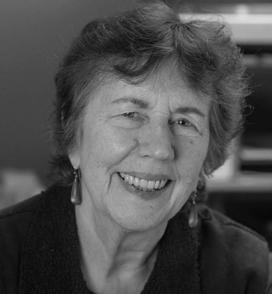
JOAN TOWER
Joan Tower, a seminal figure in American music, boasts over 50 years of prolific contributions as a composer, performer, conductor, and educator. Her compositions, including renowned works like "Silver Ladders," have been commissioned and performed by prestigious ensembles worldwide. Notably, she was the first woman to win the Grawemeyer Award. Tower's impact extends to her role as a founding member of the Da Capo Chamber Players and as a professor at Bard College. Her diverse repertoire spans orchestral, chamber, and band music, showcasing her versatility. Recent premieres include "White Water" and "Stroke," further solidifying her legacy in contemporary classical music.
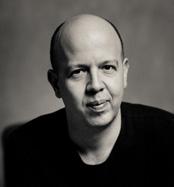
HUW WATKINS
Huw Thomas Watkins MBE is a British composer and pianist. Born in South Wales, he studied piano and composition at Chetham's School of Music in Manchester, where he received piano lessons from Peter Lawson. He then went on to read music at King's College, Cambridge, where he studied composition with Robin Holloway and Alexander Goehr, and completed an MMus in composition at the Royal College of Music, where he studied with Julian Anderson. Huw Watkins was awarded the Constant and Kit Lambert Junior Fellowship at the Royal College of Music, where he used to teach composition. He is currently Honorary Research Fellow at the Royal College of Music.

Achieving excellence together
is proud to sponsor the 2024 Great Lakes Chamber Music Festival.
Chase
© 2024 JPMorgan Chase & Co. All rights reserved. Chase, J.P. Morgan, JPMorgan and JPMorgan Chase are marketing names for certain businesses of JPMorgan Chase & Co. and its affiliates and subsidiaries worldwide 1930052.
WAYS TO GIVE
As we look towards the future of the Festival, it is our strong base of supporters that allows us to take on bigger and more ambitious projects. Your support of the Great Lakes Chamber Music Festival touches all aspects of the Festival— from the quality of our artists and the inventiveness of our programming to the success of our Shouse Institute.
There are many ways that you can support the Great Lakes Chamber Music Festival:
SPONSOR A CONCERT
Whether you want to sponsor as an individual or as a business, you will receive a host of benefits including tickets, concert signage, online recognition and private receptions with the artists. You can sponsor on your own or co-sponsor with another individual or entity. This is a wonderful way to invest more fully in our concert programming.
SPONSOR AN ARTIST
Show your support by sponsoring a Festival artist or Shouse ensemble. Our Artist Sponsors not only help support our organization’s longevity, but get to know their artist(s) at concerts and afterglows.
BECOME A BENEFACTOR
Great Lakes Chamber Music Festival Benefactors make a gift of $1,800 per year in support of the Festival. Benefactors receive 14 tickets for Festival subscription concerts, private receptions with the artists, and tickets to the Festival’s annual dinner on Opening Night.
SUPPORT THE CADENZA CIRCLE
The Cadenza Circle recognizes the vision and confidence of donors that make a gift to the Festival in their estate plans. These gifts include bequests, charitable gift annuities, life insurance beneficiary designations, charitable remainder trusts, and retirement plan beneficiary designations. If you would like to leave the Festival a gift in your estate plan, please contact Jocelyn Conselva at jocelyn@art-ops.org.
INVEST IN THE TOCCO SOCIETY
This is a lifetime giving program for the Festival’s most loyal and generous donors. The Tocco Society recognizes our founding Artistic Director, James Tocco, through his vision and leadership. Members of the Tocco Society join our current Artistic Director, Paul Watkins, in discussions about artistic programming in future seasons.
MAKE A DONATION
Our supporters are members of our larger Festival family, and your investment in us ensures outstanding chamber music as a staple in our community. Every amount counts!
Contact Jocelyn Conselva at jocelyn@art-ops.org to create your unique giving package.

Values in action.
We’re proud to support the Great Lakes Chamber Music Festival.
Plante Moran values their mission and vision to enhance music education and diversity within our communities.
54
plantemoran.com
TICKET SALES
TO ORDER
Call 248-559-2097
Monday - Friday 9 a.m. to 5 p.m. OR visit greatlakeschambermusic.org
SEASON CALENDAR
SUNDAY MONDAY TUESDAY THURSDAY FRIDAY SATURDAY WEDNESDAY
OPENING NIGHT: THE CREATIVE ESSENCE
ARTISTIC ENCOUNTER: TAI MURRAY
CONVERSATIONS ACROSS
ARTISTIC ENCOUNTER: PETER WILEY
FESTIVAL IN RESIDENCE: WINDSOR
TASTING NOTES: FLAVORS OF EUROPE CROSSING BORDERS
HOW TO ORDER TICKETS
Order by phone at 248-559-2097 or visit greatlakeschambermusic.org.
WHEN TO ARRIVE
The box office will open on-site 30 minutes prior to the start of the performance. For general admission tickets, we recommend you arrive early to select your seat.
DIRECTIONS AND PARKING
Directions can be found for each performance at greatlakeschambermusic.org/ performances. Most of our venues have free on-site parking.
WHAT TO WEAR
There is no dress code for concerts. Formal attire is not required. We recommend bringing a light jacket or sweater if you get chilly. We do not provide coat check at our venues.
TICKET INFORMATION
FESTIVAL IN RESIDENCE: ANN ARBOR
PRIDE AT THE DIA WRITTEN FOR THE STARS
ARTISTIC ENCOUNTER: HSIN-YUN HUANG MUSICAL CHAIRS WITH PHILIP SETZER
TASTING NOTES: JAZZ ON JUNETEENTH
BEYOND THE NOTES: MUSIC MEETS MINDFULNESS
YOUTHFUL INSPIRATIONS FESTIVAL IN RESIDENCE: DIA
CHILDREN'S CONCERT: ACCENT PONTIAC BUCKET BAND
FESTIVAL IN RESIDENCE: ANN ARBOR CREATIVE CONNECTIONS
SHOUSE: PRICE & MOZART GROUNDBREAKING ORIGINALS AUDIO/VISUAL WITH TESSA LARK
FESTIVAL IN RESIDENCE: ANN ARBOR CLOSING NIGHT: CREATIVE PERFECTION REVOLUTION AND ROMANTICISM

Scan to learn more.
This year, all tickets are digital and emailed to you. All tickets are $5 more when purchased at the door. There is a $1.25 processing charge on all tickets.
Seligman Performing Arts Center Only: ONLY Reserved Tickets are assigned, General Admission is first come, first served. NO tickets will be mailed. Reserved ticket buyers will be reminded of their seat number at the box office during checkin and will receive a stub to show to the ushers inside the hall.
TICKET DONATIONS/UNUSED TICKETS
All ticket exchanges and ticket donations need to be arranged at least 24 hours prior to each concert. Subscribers may request unused tickets to be used as a donation to the Great Lakes Chamber Music Festival. Single tickets may not be returned for a donation.
Tickets cannot be exchanged for performances at the Capitol Theatre or Kerrytown Concert House. Please visit greatlakeschambermusic.org/ performances to view eligible performances.
START TIME & LATE COMERS
The Festival makes every effort to start performances at the published start time. Late comers will be asked to wait in the lobby and will be seated by ushers at a predetermined time in the program. The late seating break is determined by artists and will generally occur during a suitable break in the program.
ACCESSIBILITY
All of our venues are able to accommodate patrons with limited mobility and wheelchairs. If you require special seating due to accessibility, please call the Festival office at 248-559-2097 so that staff and ushers can properly assist.
APPLAUSE
Traditionally, applause is held until the end of the piece of music. Composers create a work as a whole, which is often made up of several movements. It is best to not disrupt the music by applauding between movements.
HEALTH & SAFETY
We closely follow the guidance and recommendations of the Centers for Disease Control (CDC) and the Michigan Department of Health & Human Services (MDHHS).
55
SUBSCRIPTION-ELIGIBLE EVENT NON-SUBSCRIPTION EVENT FAQ
CENTURIES
9 16 10 17 13 20 11 18 14 21 12 19 15 22
8
RESERVE FUNDS
FESTIVAL RESERVE FUNDS—A HISTORY AND A FUTURE
The Great Lakes Chamber Music Festival is proud to be considered as one of the Top 20 chamber music festivals in the country. By supporting the Festival’s reserve fund, you support the future of the Festival and help to ensure that we continue to bring a world-class artistic experience to our patrons for many years to come.
Now in our 31st year, the Great Lakes Chamber Music Festival is embarking on a journey to grow our reserve fund exponentially. This will allow our Artistic Director to bring bigger musical experiences to you, our patrons. For more information about supporting the Festival’s endowment, contact Jocelyn Conselva, Development Director, at 248-559-2097 or at jocelyn@art-ops.org.
The James Tocco Endowed Fund for Artistry & Innovation
The fund was established in 2014 to commemorate the retirement of Founding Artistic Director James Tocco. This endowment allows future Festival artistic directors to pursue excellence and innovation as James did for more than two decades. The creative liberty will allow artistic directors to pursue the artists and programming necessary to advance the Festival’s prominence for years to come.
The Great Lakes Chamber Music Festival Fund
This fund was established in honor of James Tocco with a bequest from Carol Harford, a close friend and colleague of Catherine Filene Shouse (for whom the Shouse Institute is named).
The Stone Composer Endowment
The endowment fund was established in memory of Eunice and Joshua (Jim) Stone by their three daughters, Gwen Weiner, Marcy Klein, and Carol DePaul. Its purpose is to support the Festival’s Composer-in-Residence program, and to foster young composers by presenting premieres of their original works. This year, the honorees are Stone Composer-in-Residence Han Lash and Stone Composer Fellow Em Singleton.
Paul Katz Endowed Chair in Memory of Morris D. Baker
This fund was established in 2003 by Beverly Franzblau Baker in memory of Morris D. Baker. This year, the fund supports Katharina Kang Litton, violist.
Eugene Istomin Endowed Piano Chair
A chair established by James Tocco, this fund created an endowed position in the name of Eugene Istomin, one of the greatest pianists of the 20th century. This year, the fund supports Justin Snyder, pianist, and Andrew Barnwell, pianist of Trio Gaia. THANK YOU TO THE MANY SUPPORTERS OF THE GREAT
$75,000+
Beverly Baker*
Carol Harford†
Nancy† & Donald Pais*
Kathleen & Randolph Schein*
Wilda C. Tiffany Charitable Trust/Rev. Msgr. Anthony Tocco*
Gwen & S. Evan Weiner*
$25,000 - $74,999
Cecilia Benner*
Kathleen Block*
Aviva & Dean Friedman
Franziska & Robert† Schoenfeld*
James Tocco
$10,000 - $24,999
Rayna & Natalio† Kogan
Marguerite Munson Lentz & David Lentz*
Nate S. & Ruth B. Shapero Foundation
$5,000 - $9,999 Newcomb-Hargraves Foundation
Emilio Rusciano
Dolores Silverstein
$1,000 - $4,999 Alzheimer’s Association
Rachel & Billy Ben Baumann
Nancy & William† Duffy*
Patricia & Robert† Galacz
Jane Galantowicz
Ann & Norman† Katz*
Tina Topalian & Maury Okun
Joshua J. and Eunice Stone
Philanthropic Fund
GIFTS UP TO $999
Mr. & Mrs.† E. Bryce Alpern
Marian & Gerald Altman
Elizabeth & Brian Bachynski
Chuck Berman
Henri S. Bernard
Betty† & Art† Blair
Joyce & George Blum*
Judith B. Blustein
LAKES CHAMBER MUSIC FESTIVAL’S RESERVE FUNDS:
Dr. & Mrs. Sidney Bolkosky
Denah S. Bookstein
Jerome Bookstein
Dr. & Mrs. Martin Broder
Marilyn & Leonard Brose
Florence Brownfain†
Dr. & Mrs. Morton Cash
Mr. & Mrs. Anthony P.
Checchia
Mr. & Mrs. Robert M. Citrin
Louise Goldstein Cohen & Morris Cohen
Dolores Curiel†
Mary DeMassa
Sylvia Rosenberg Diamond
Karen V. DiChiera*
Carole Edelsky
Haleh Esfandiari*
Mr. & Mrs. Joel I. Feldman
Barry Finestone
Joan Lessen-Firestone & Ira† Firestone*
Carolyn & Dennis Flynn*
Mr. & Mrs. Yehuda Fogel
Susan Frankel
Michael Franzblau
Valerie & John Frederick
Rachel Galazan
Louise Gauthier
Marcia Gershenson & Ken Robinson*
Mr. & Mrs. Robert Goldman
Merwin Goldsmith
Mr. & Mrs. Harvey A.
Gordon
Stephanie & David Greer
Claire Grosberg
Renee Gruskin
Catherine† & John† Guinn
Alice Berberian Haidostian
Mr. & Mrs. Mitchell
Henderson
Mr. & Mrs. Richard J. Hendin
Doreen Hermelin
William Hulsker*
Rochelle Jackier
Gail Katz
Marilyn Katz*
Naomi Katz
Abigail Kellogg
Frances & Jack† King
Sharon & Jerry Knoppow
Susan Knoppow &
David Saperstein
Leslie Lazzerin*†
Lorraine & Leonard† Lerner
Dr. & Mrs. Dan Levitsky
Jean Levy
Richard Lewis
Laura Lewison
William Liberson
Seymour Lipkin†
Patricia Loeffler
Phyllis Loewenstein
Rochelle & Aaron Lupovitch
Mr. & Mrs. David Malakoff
Janelle McCammon & Raymond Rosenfeld
Rhoda Milgrim*
Mr. & Mrs. Harold Milinsky
Mr. & Mrs. Marvin Mintz
Avodah & Sidney Offit
Mr. & Mrs. Abe Pasternak
Mr. & Mrs. Stephen Rayburn
John Redfield*
Mr. & Mrs. Kenneth E. Rochlen
Harriet† & Norman† Rotter
Helen Rowin†
Joan Rubin
Daphna & Sydney Ruby
continued on page 57
Godofredo Santiago
Diane & Joseph Savin
Mr. & Mrs. Michael I. Schuman
Merle Schwartz
Phyllis & Sheldon Schwartz
Marilyn Shapiro
Arthur Shufro†
Marilyn Sivak
Melodie & Alan Solway
Etta Solway†
Nadele Spiro
Kathleen Straus & Walter Shapero*
Deborah & Kenneth Tucker*
Mr. & Mrs. Martin Urban
B.C. Vermeersch
Ruth Widrich
Mr. & Mrs. Taylor Williams
Melba Winer
Mr. & Mrs. Barry Yaker
Mr. & Mrs. Gerald Zahler
Ruth & Avigdor Zaromp*
Ara Zerounian
Mr.† & Mrs. Raymond
Zimmerman
56
*Denotes a supporter of the James Tocco Endowed Fund for Artistry & Innovation. † Deceased
SPONSORS & DONORS
Ruth Laredo Endowed Piano Chair
The chair was established in 2005 to honor the late pianist and Detroit native, Ruth Laredo. Returns on the investment are used to underwrite a pianist each year. This year, the fund supports Amnis Piano Quartet.
Henry Meyer Endowed Violin Chair
This chair has been established in memory of Henry Meyer, longtime violinist of the LaSalle Quartet and the beloved founding director of the Festival’s Shouse Institute. Once it has reached its goal, this fund will support a violinist at the Festival each year. This year, the fund supports Yvonne Lam, violinist.
Beverly Franzblau Baker Young Artist Chair
This chair was established by a gift from Beverly Franzblau Baker in 2007. Each year, the proceeds from this fund are used to sponsor the appearance of a young professional artist at the Festival. This year, the fund supports Kyle Rivera, composer.
Rev. Msgr. Anthony M. Tocco Endowed Composition Chair
The chair was established in 2005 in honor of Rev. Msgr. Anthony Tocco through the estate of the late Festival supporter, Wilda C. Tiffany. This fund’s proceeds will bring new compositions to life.
ARTIST SPONSORS
Beverly Baker & Dr. Edward Treisman
Cecilia Benner
Kathleen Block
Adrienne Ruby-Fink & Herschel Fink
Virginia & Michael Geheb
Thea Glicksman
Fay B. Herman
Gail & Ira Mondry
Bridget & Michael Morin
Martha Pleiss
Kathleen & Randolph Schein
Franziska Schoenfeld
Josette Silver
Isabel & Lawrence Smith
Barbara Solms
Jill & Steven Stone
James Tocco
TAI MURRAY SPONSOR CONSORTIUM
MAJOR SPONSORS
Sandra & Claude Reitelman
Lauren & Dwight Smith
ADDITIONAL SUPPORTERS
Joanne Bonds
Yuki Mack
Linda & Steven Permut
Marci & Marvin Shulman
Carol Sipsock
Deborah & William Stein
Deborah & Kenneth Tucker
Friends of Four Hands
CORPORATE SPONSORS
Corewell Health, Major Sponsor
Honigman LLP, Principal Sponsor
Plante Moran, Principal Sponsor
Taft Stettinius & Hollister LLP, Principal Sponsor
Edw. C. Levy Co., Associate Sponsor
JPMorgan Chase, Associate Sponsor
Pearl Planning, Associate Sponsor
Wilda C. Tiffany Trust, Associate Sponsor
OTHER SPONSORS
Linda & Maurice Binkow, Bartók Violin Concerto
Kathleen Block, Artistic Encounters
Maxine and Stuart Frankel
Foundation, Marc Neikrug Oboe Quartet
Andrea & Woody Leung, Piano Sponsorship
Martha Pleiss,
Han Lash: Stalk
Mark Schumacher & Shoula Stefos, Artistic Encounters
Isabel & Lawrence Smith, Artistic Encounters
VIGNETTE HOSTS
Gail & Ira Mondry
CONCERT SPONSORS
Beverly Baker & Dr. Edward Treisman
Linda & Maurice Binkow
Nancy Duffy
Aviva & Dean Friedman
Virginia & Michael Geheb
Linda Goodman
Henry Grix & Howard Israel
Barbara Heller
Marguerite Munson Lentz & David Lentz
Joy & Allan Nachman
Josette Silver
Isabel & Lawrence Smith
Gwen & S. Evan Weiner
BEETHOVEN CELLO SONATA SPONSORS
David Nathanson, Presenting Sponsor
Cindy & Harold Daitch
Franziska Schoenfeld
Gail & Ira Mondry
Rayna Kogan
Kathleen & Randolph Schein
Wilda C. Tiffany†
Rev. Msgr. Anthony Tocco
James Tocco
Gwen & S. Evan Weiner
INDIVIDUAL DONORS
BENEFACTORS ($1,800+)
Beverly Baker & Dr. Edward Treisman
Rachel & Billy Ben Baumann
Cecilia Benner
Kathleen Block
Joanne & John Carter
Cathleen Corken
Cindy & Harold Daitch
Lillian & Walter Dean
Rex Dotson & Max Lepler
Nancy Duffy
Marjory Winkelman Epstein
Frederick Morsches & Kareem George
David Nathanson
Tina Topalian & Maury Okun
Donald Pais
Sandra & Claude Reitelman
Kathleen & Randolph Schein
Franziska Schoenfeld
Mark Schumacher & Shoula Stefos
Josette Silver
Dolores Silverstein
Lauren & Dwight Smith
Renate Soulen
Jill & Steven Stone
Jennifer & Michael Turala
Gwen & S. Evan Weiner
Kathleen & Randolph Schein
Franziska Schoenfeld
Gwen & S. Evan Weiner
CADENZA CIRCLE
The Cadenza Circle recognizes those donors who have included the Great Lakes Chamber Music Festival in their Estate Plans.
Nancy & William* Duffy
Fay B. Herman
Tina Topalian & Maury Okun
Kathleen & Randolph Schein
TOCCO SOCIETY (CUMULATIVE $100,000+)
The Tocco Society recognizes those donors who have made lifetime gifts of $100,000 or more.
Beverly Baker
Cecilia Benner
Aviva & Dean Friedman
Carol Harford†
Nancy† & Donald Pais
Kathleen & Randolph Schein
Aviva & Dean Friedman
Virginia & Michael Geheb
Dana Gill
Thea Glicksman
Christine Goerke
Barbara & Paul Goodman
Henry Grix & Howard Israel
Karen L. Hahn & Claudio Roveroni
Barbara Heller
Fay B. Herman
Karen & Robert Heuer
William Hulsker & Aris Urbanes, MD
Deborah & Addison
Igleheart
Dr. Ann Katz
Frances King
Rayna Kogan
Marguerite Munson Lentz & David Lentz
Linda Dresner & Edward C. Levy, Jr.
Drs. Melissa McBrien & Raymond Landes
Janelle McCammon & Raymond Rosenfeld
Judith Greenstone Miller
Gail & Ira Mondry
Bridget & Michael Morin
GRAND PATRONS
($900-$1,799)
Jane Iacobelli
Jennie Lieberman & Robert Glassman
Patrick McKeever
Lynne Metty
PATRONS ($600-$899)
Jerry Bookstein
Valmy & Richard Kulbersh
Arlene & John Lewis
Kate & Randy Safford
Danielle Susser
FRIENDS ($300-$599)
Judith Adelman
Catherine Compton
Claudia & Patrick Duerr
Anita DeMarco Goor
Drs. Nadia & Mark Juzych
Edward Kickham
Renate Klass & Matthew Mason
Geoffrey Nathan
Dulcie Rosenfeld
Jeanne Salathiel
Rev. Msgr. Anthony Tocco
57
page
continued on
58
Endowment Funds continued
SPONSORS & DONORS
continued from page 57
CONTRIBUTORS
($150-$299)
Dr. & Mrs. George & Joyce
Blum
Jeannie & Jack Bourget
Sharon Cundiff
Marjorie DeCapite
Anne Ginn
Ted Goldman
Tom Hitchman & Keith Hewitt
Jeanette Isenhour
Connie & Bill Jordan
Diane Kebede
Sharon Robinson Laredo & Jaime Laredo
Margo & Bob Lesser
Diana & Jerry Lieberman
Yuki Mack
Susan & Michael Madison
Mary Mazure
Matthew Morin
Christopher & Amy Music
Diane Okun
Ruthanne Okun
Mary Paquette-Abt & Jeffrey Abt
Marilyn Shapiro
Marci & Marvin Shulman
Jürgen Skoppek
Deborah & William Stein
Kathleen Straus & Walter Shapero
Robert Tera
Gerri & Ronald
Vander Molen
Elaine L. Weingarden
Ruth & Charles Weingarten
OTHER DONORS ($25-$149)
William Albert
Nancy Bechek Bluth & Larry Bluth
Joanne Bonds
Leslie Brudne
Mary Lynn & Edward Callaghan
Jean Casey
Chuck Dyer
Joan Emerick & Peter Saldana
Joan Lessen-Firestone
Penny & Ken Fischer
Karen D. Fisher
Edna Freier
Belinda Friis
Margot & Herbert Gardner
Jolyn Hillebrand
Louise & Robert Horowitz
Helen & Martin Katz
Velda Kelly
Jim Labes
Judith & Douglas Light
Laura & Channing Lipson
Pauline McIlrath
Rena & Ronnie Meyers
Lucy Miller Murray &
Martin L. Murray
Evelyn & Julian Prince
Barbara Prinzi
Sarah Roth
Loretta Ware Ryder
Yvonne Schilla
Michael Shaw
Moira Sheehan
Barbara Solms
Roberta E. Sonnino, MD
Elaine Tell
Toni & Scott Temple
Sam & Peggy Tundo
Roberta Viviano
Arnold Weiner
Gerald Weintraub
Beverly & Barry Williams
Leo Williams
HONORARY GIFTS
Gifts were made in memory of:
William R. Brashear
Dolores Curiel
Robert Koenig
Natalio Kogan
Ellen Labes
Willam S. McIlrath
Diane Raban
Kenneth Stone
Gifts were made in honor of:
Joel Adelman
Beverly Baker
Kathleen Block
Harold Daitch
Christine Goerke
Paul Watkins & Jennifer
Laredo Watkins
Maury Okun
RECEPTION HOSTS
Andrea Badalucco
Kathleen Block
Ron & Carole Cousineau
Diane & Randall Orley
Sandra & Claude Reitelman
Soon Young Lynch
VOLUNTEERS
Claire Abrams
Milena Cankovic
Jennifer Ginther
Fay B. Herman
Jolyn Hillebrand
Andy Howell
Sandie Landau
Frances Lewis
Ruthanne Okun
Diane Okun
Carol Ritchey
Suzie Share
Norma & Richard Shaw
Arnold Weiner
FOUNDATION AND GOVERNMENT SUPPORT
The Aaron Copland Fund for Music
The Kresge Foundation
Mary Thompson Foundation
Maxine & Stuart Frankel Foundation
Michigan Arts & Culture Council
The Morris and Beverly Baker Foundation
National Endowment for the Arts
Paul M. Angell Family Foundation
Phillip & Elizabeth Filmer
Memorial Charitable Trust
Wilda C. Tiffany Trust
Burton A. Zipser & Sandra D. Zipser Foundation
There are many ways to support the Festival, all of which are critical to our success. Our supporters become involved in our programming through corporate sponsorships, business advertising, individual donations or volunteering. Your financial investment and/or gift of time allows us to continue bringing great music to our community. For more information, call 248-559-2097.
All donor lists updated as of May 15, 2024. GLCMF regrets any errors or omissions made in this list of contributors. For corrections or if you would like to make a gift please call 248-559-2097.
Deceased
58
†

81st Season
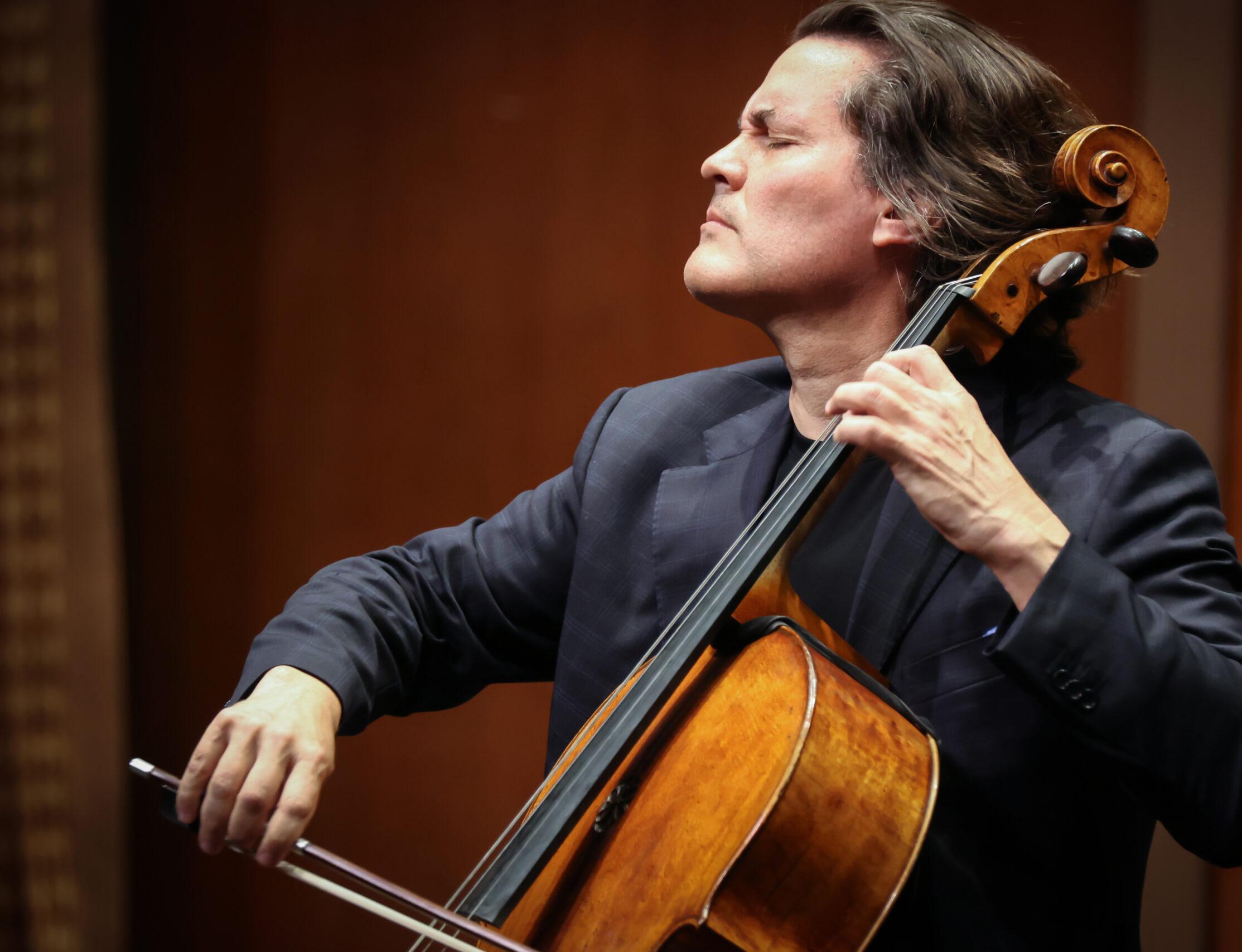
2024 - 2025 SIGNATURE SERIES
Zuill Bailey, cello & Awadagin Pratt, piano
Opening Night - Sep. 21, 2024
Balourdet Quartet with Astrid Schween, cello
Schubert Cello Quintet - Oct. 5, 2024
Ensemble 4.1
Piano Windtet - Oct. 25 & 26, 2024
Kelley O’Connor, mezzo & Robert Spano, piano
Seligman 25th Anniversary - Nov. 16, 2024
The Sebastians
Holiday Baroque Matinee - Dec. 15, 2024
Louis Lortie, piano
Ravel 150th Birthday - Mar. 22, 2025
Anthony McGill, clarinet, Gloria Chien, piano & Sterling Elliott, cello
Brahms Clarinet Trio - Apr. 5, 2025
Miró Quartet with David Shifrin, clarinet
Mozart’s Clarinet Quintet
plus a Benny Goodman Tribute - May 3, 2025
Claremont Trio
Season Finale - May 17, 2025

Single Tickets available on August 1, 2024 CMDETROIT.ORG 313.335.3300 SUBSCRIPTIONS ON SALE NOW Be Moved
